Man-made climate change is a hot topic and, regardless of your beliefs about the effect of man-made emissions on the global climate, it’s inevitable that the internal combustion engine will eventually be all but wiped out of existence. With various world governments committing to an all-out ban of non-electric vehicles, automakers aren’t slowing down the process either, with just about every major manufacturer having jumped on the alternative fuels wagon in one way or another in recent years. Mercedes, for example, is following Toyota’s lead and looking to hydrogen as a viable solution to combat emissions and has already proven its viability with cars like the B-Class F-CELL and the Citaro FuelCELL-Hybrid – two vehicles that have logged more than seven million miles in test runs. Now, Mercedes has introduced the GLC F-Cell, the world’s first plug-in fuel-cell vehicle. As such, the GLC F-Cell promises as much as 301 miles from just 9.7 pounds of hydrogen and the 13.8-kWh battery. And, it does so while producing around 200 horsepower and 258 pound-feet of torque– more than enough to get you up to speed.
With hydrogen availability expanding, that’s certainly good news, but we’re not there quite yet. Outside of the electric and hydrogen powertrain, the GLC F-Cell also sports its own unique look in comparison to the ICE-powered GLC-Class, so it will even stand out in the crowd. Now, it may not have that internal combustion engine or even the 241 horsepower afforded by the standard model’s 2.0-liter, but it will still please all of you purists out there as it does have all of the Mercedes DNA that you’ve come to love and find it impossible to live without. So, now that the GLC F-Cell has made its official debut at the Frankfurt Auto Show, let’s take a good look at it and see what it’s all about.
Continue reading to learn more about the 2018 Mercedes-Benz GLC F-Cell.
2018 Mercedes-Benz GLC F-Cell
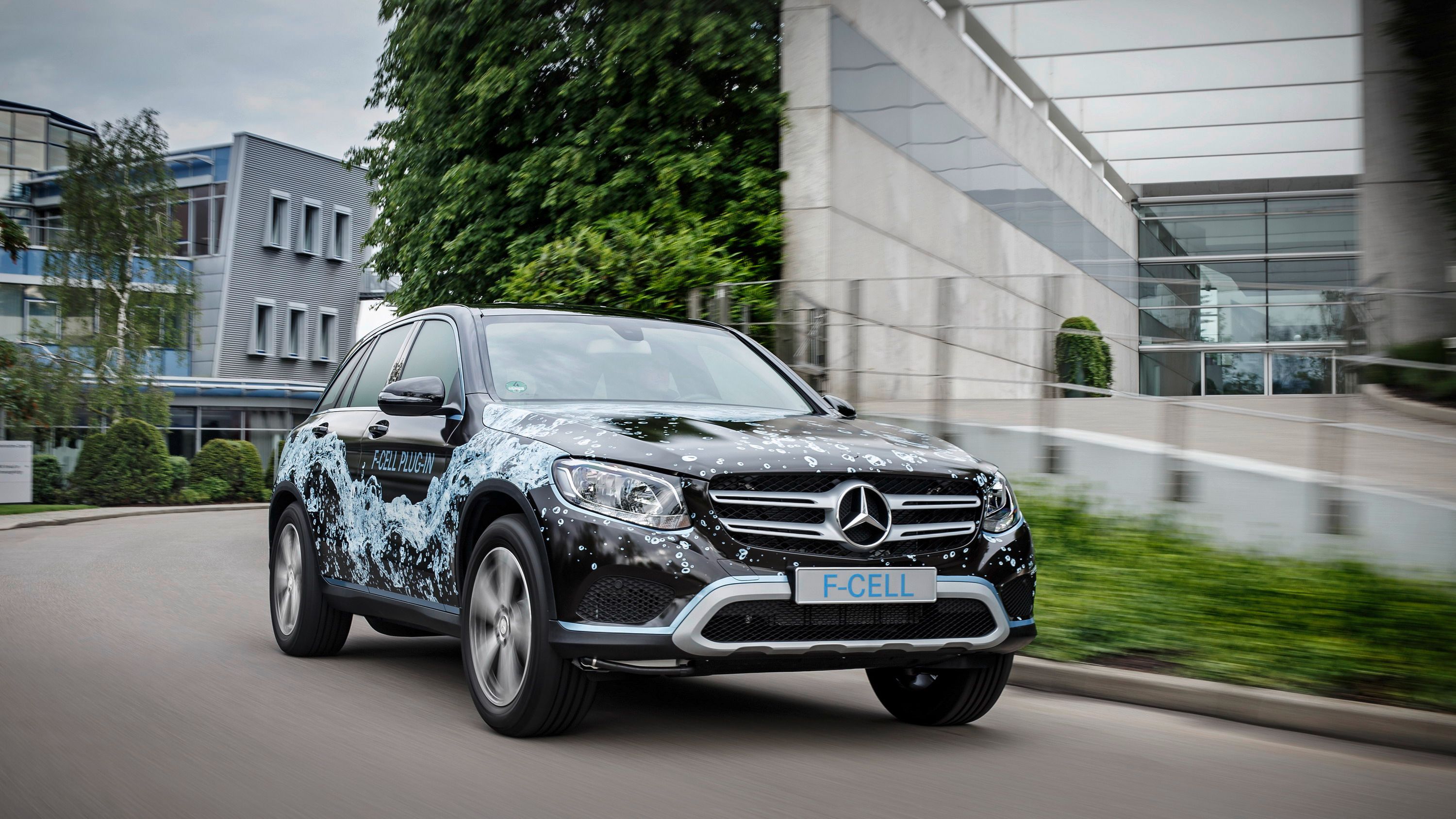

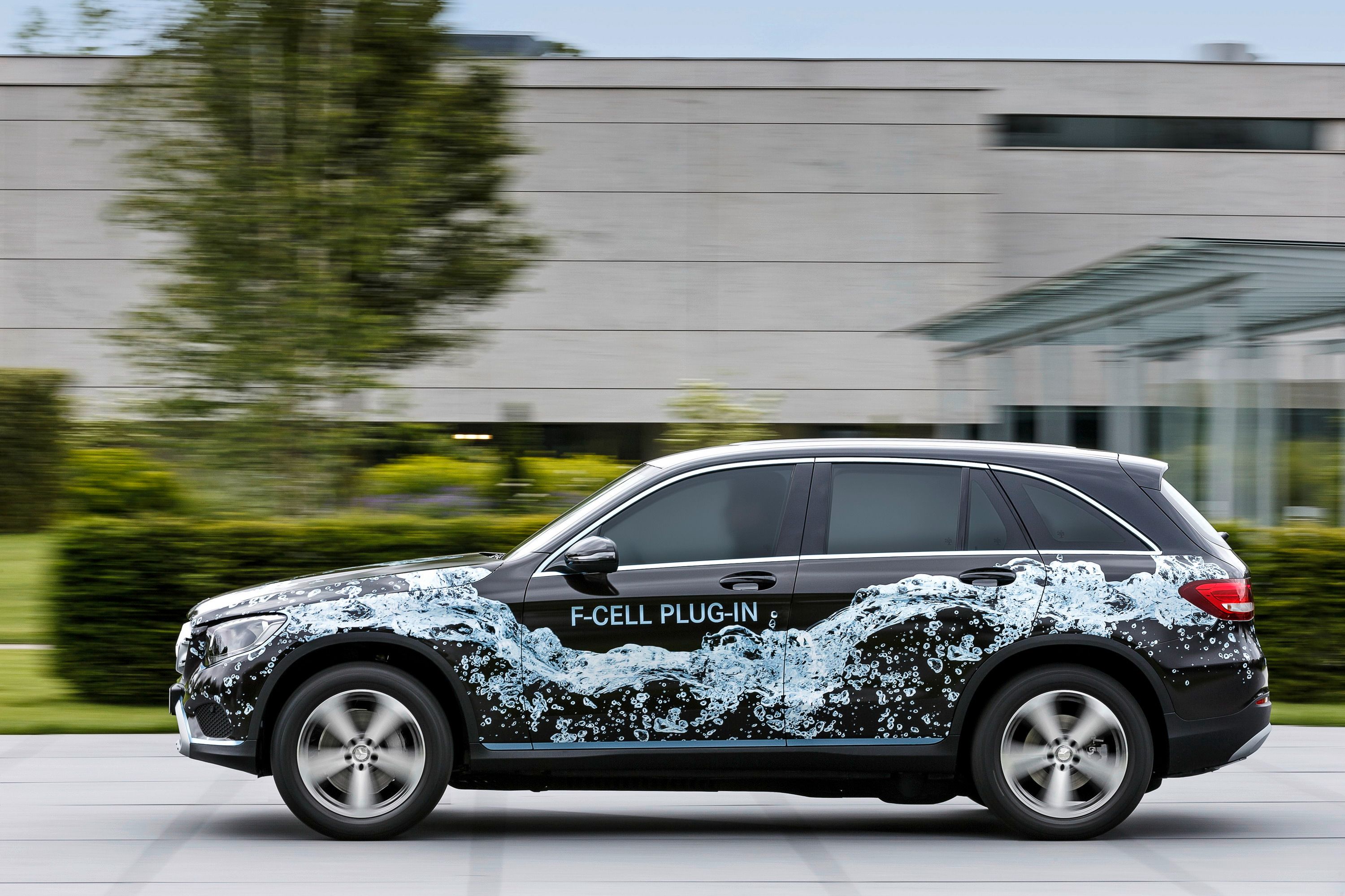





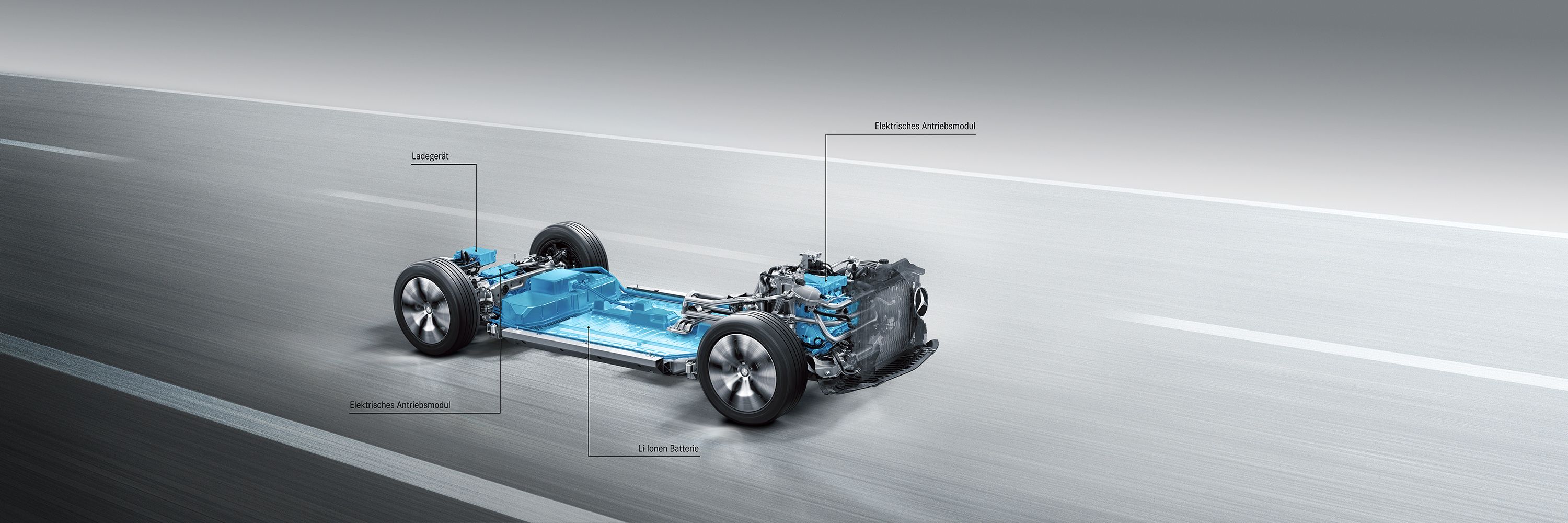

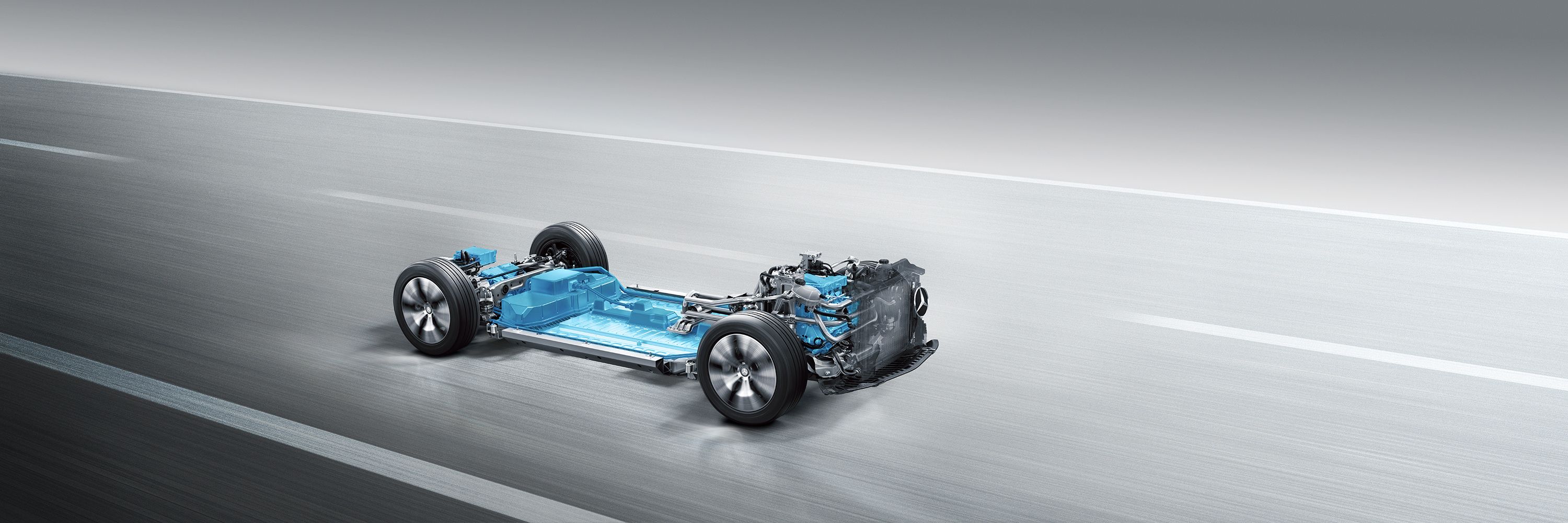
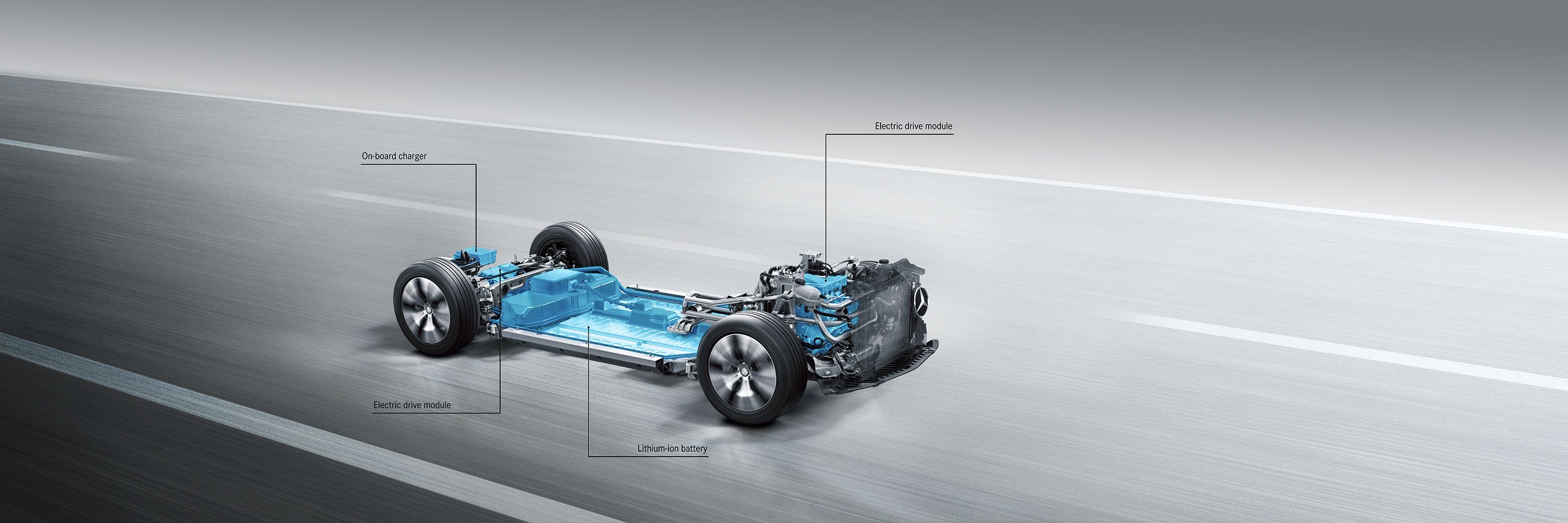
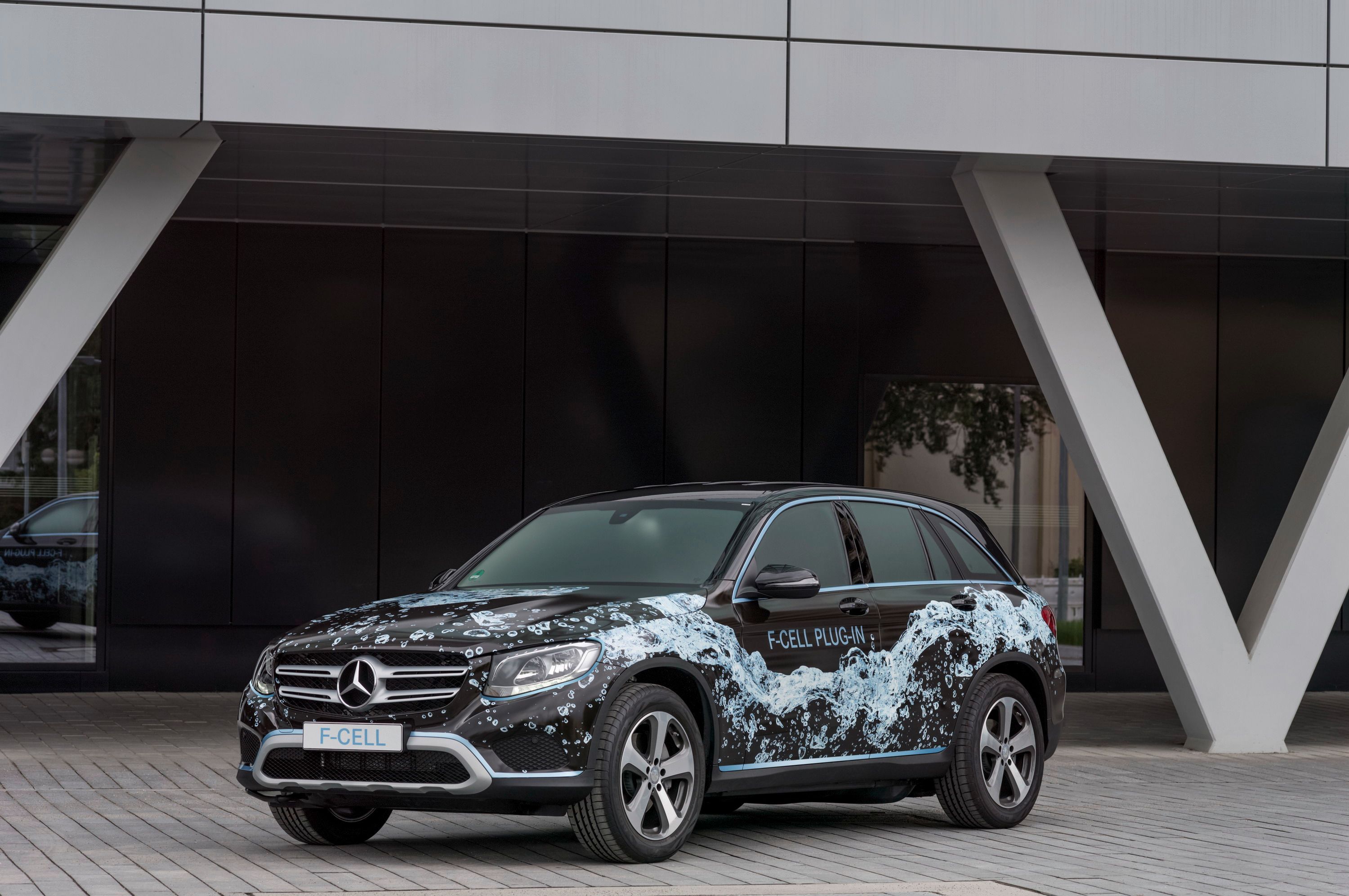
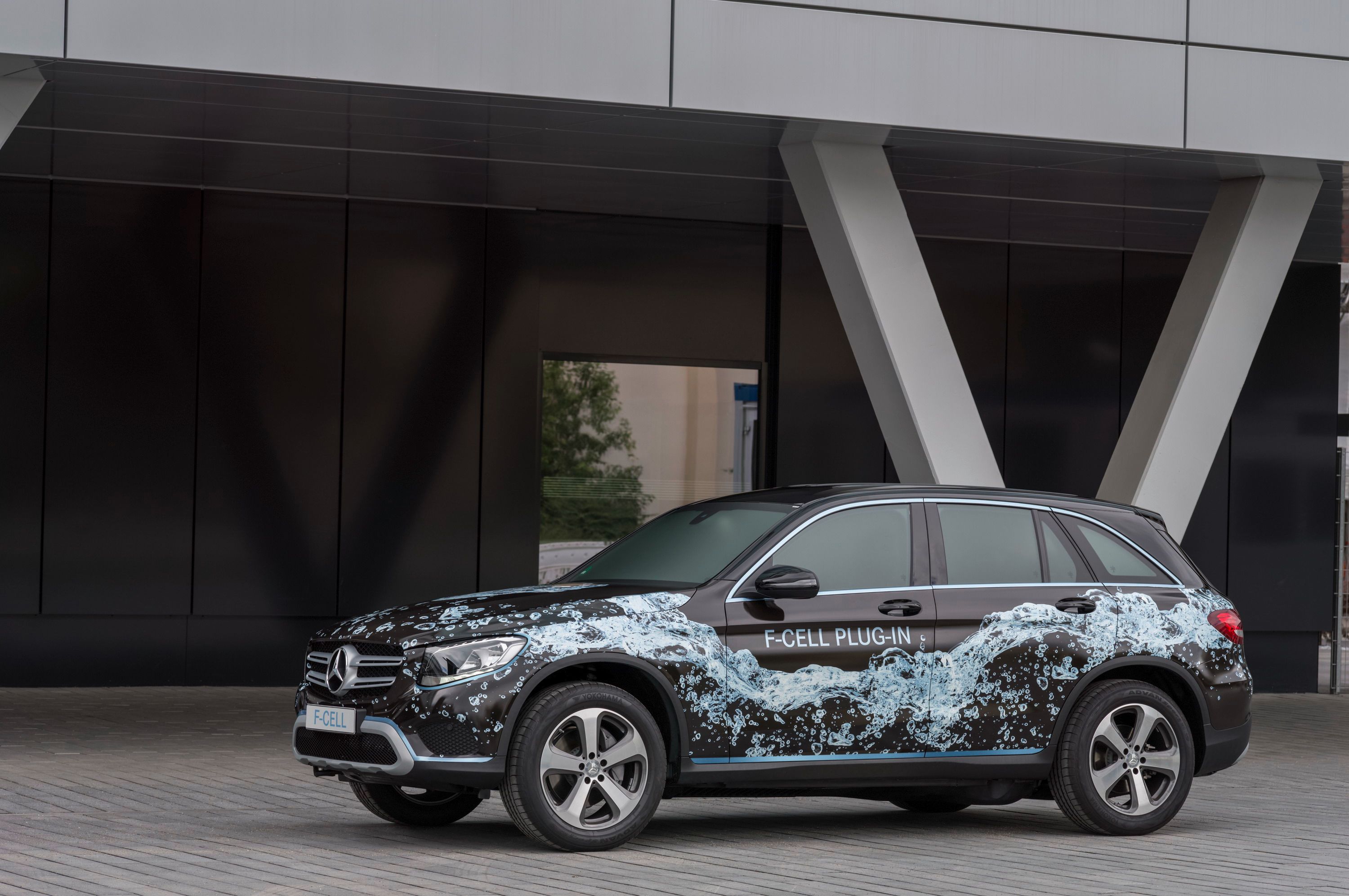
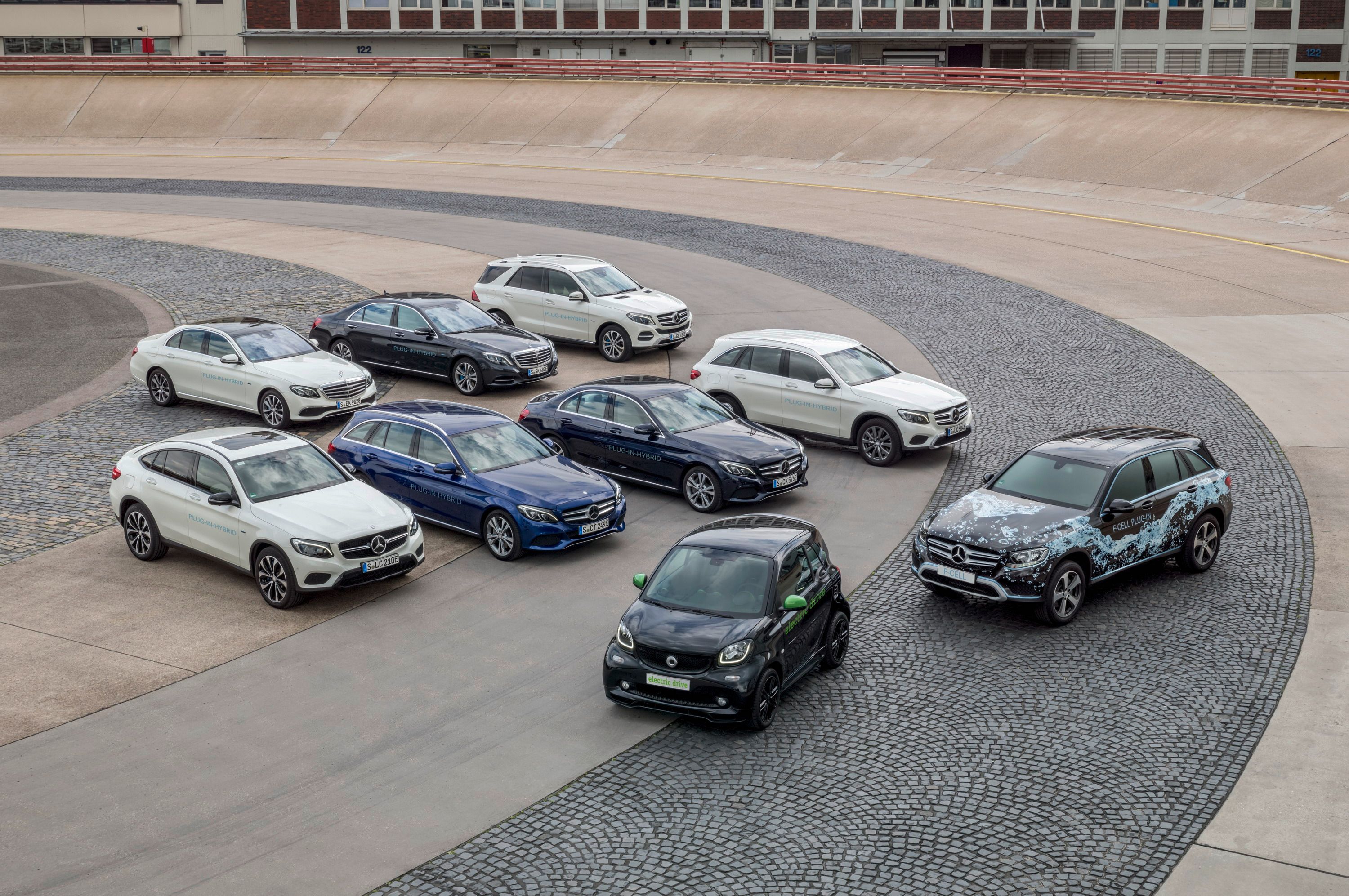
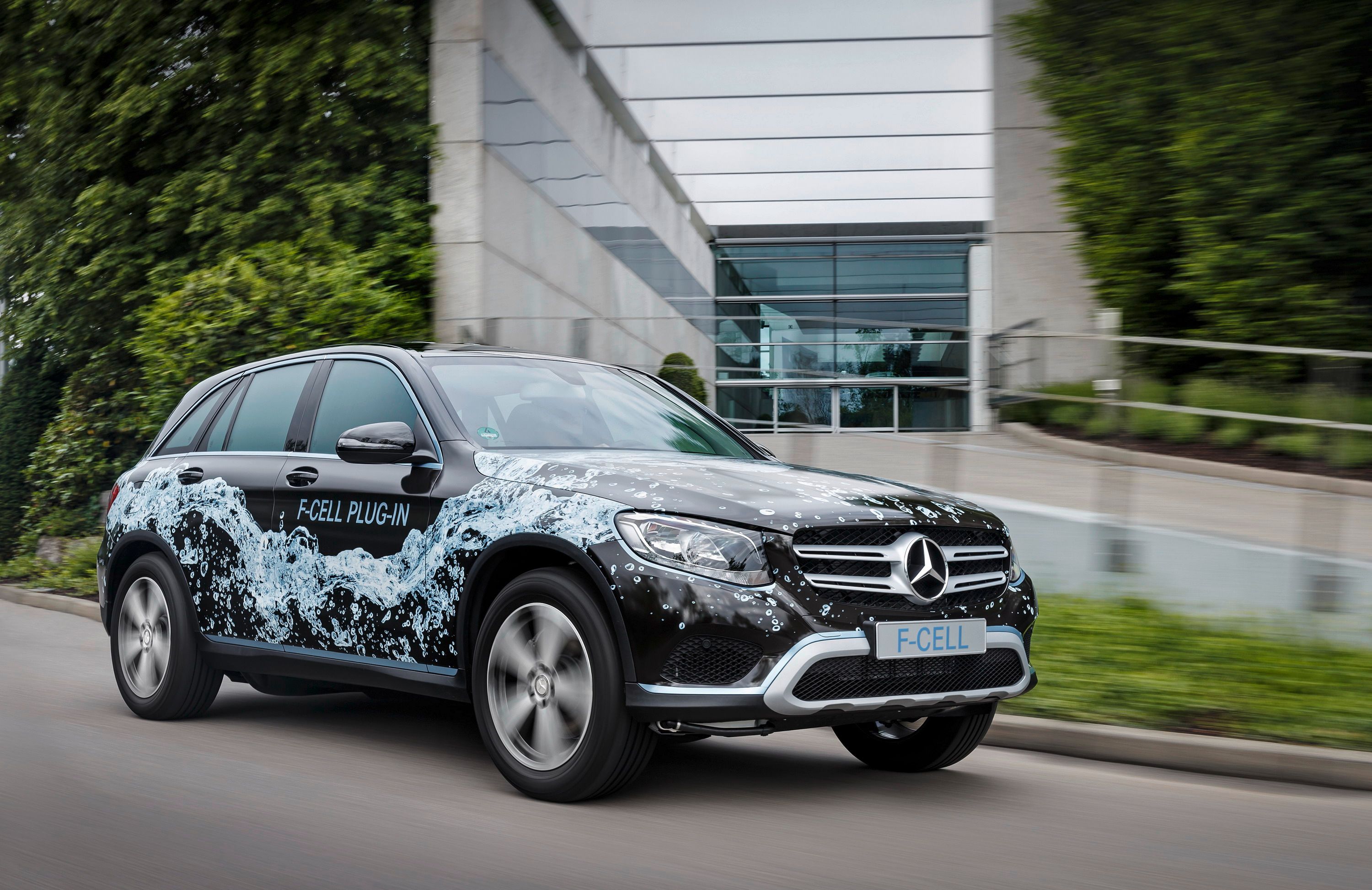
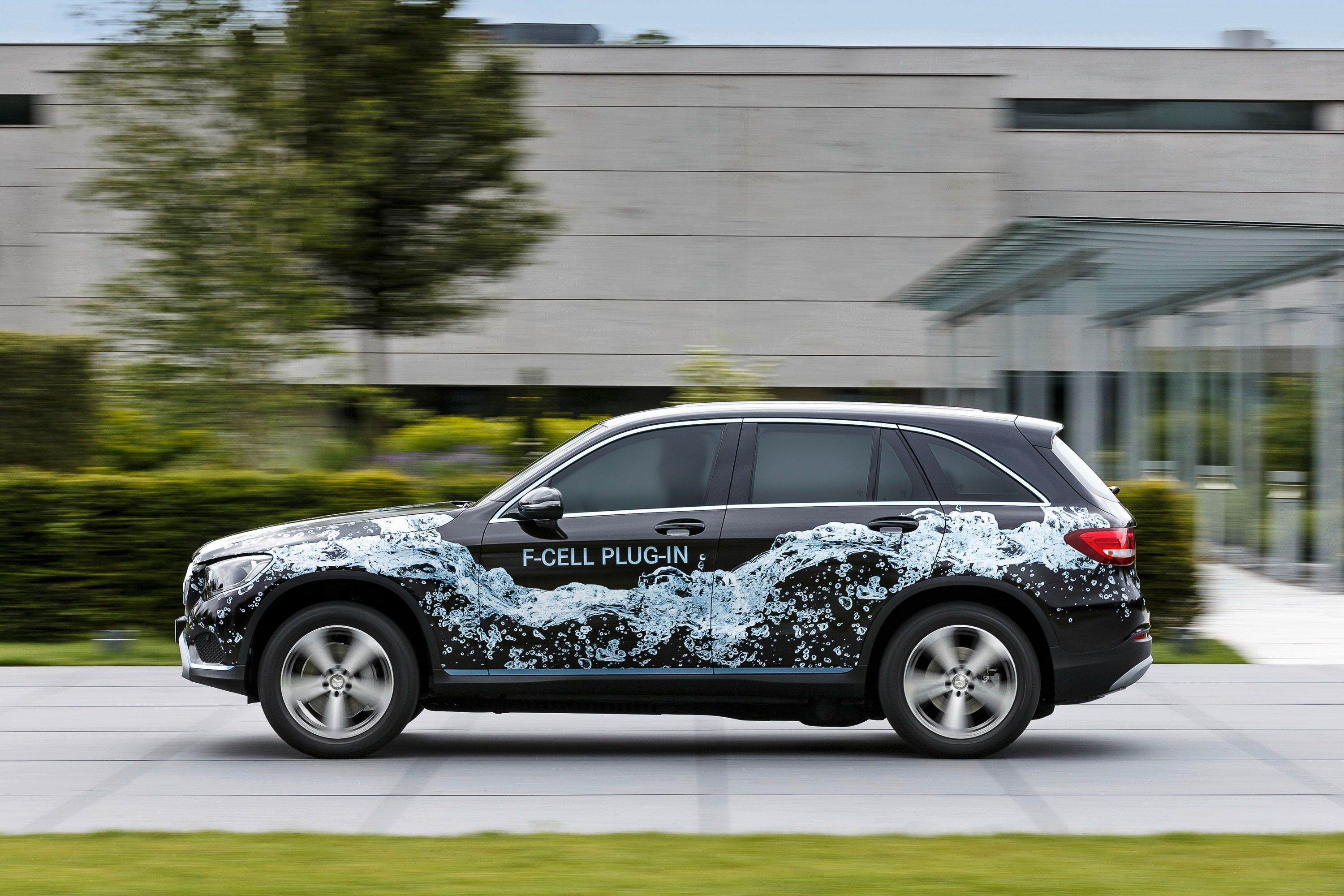
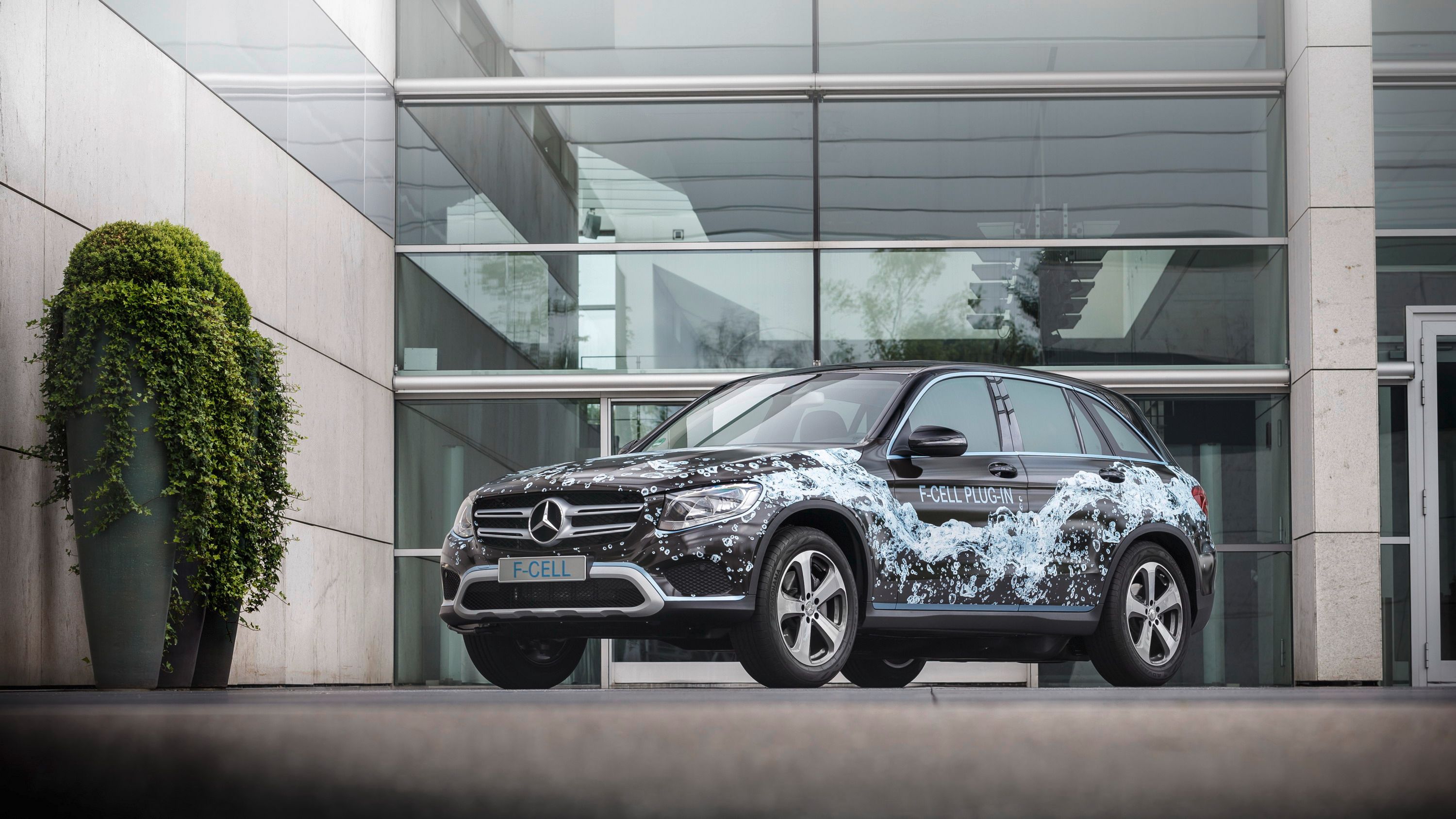
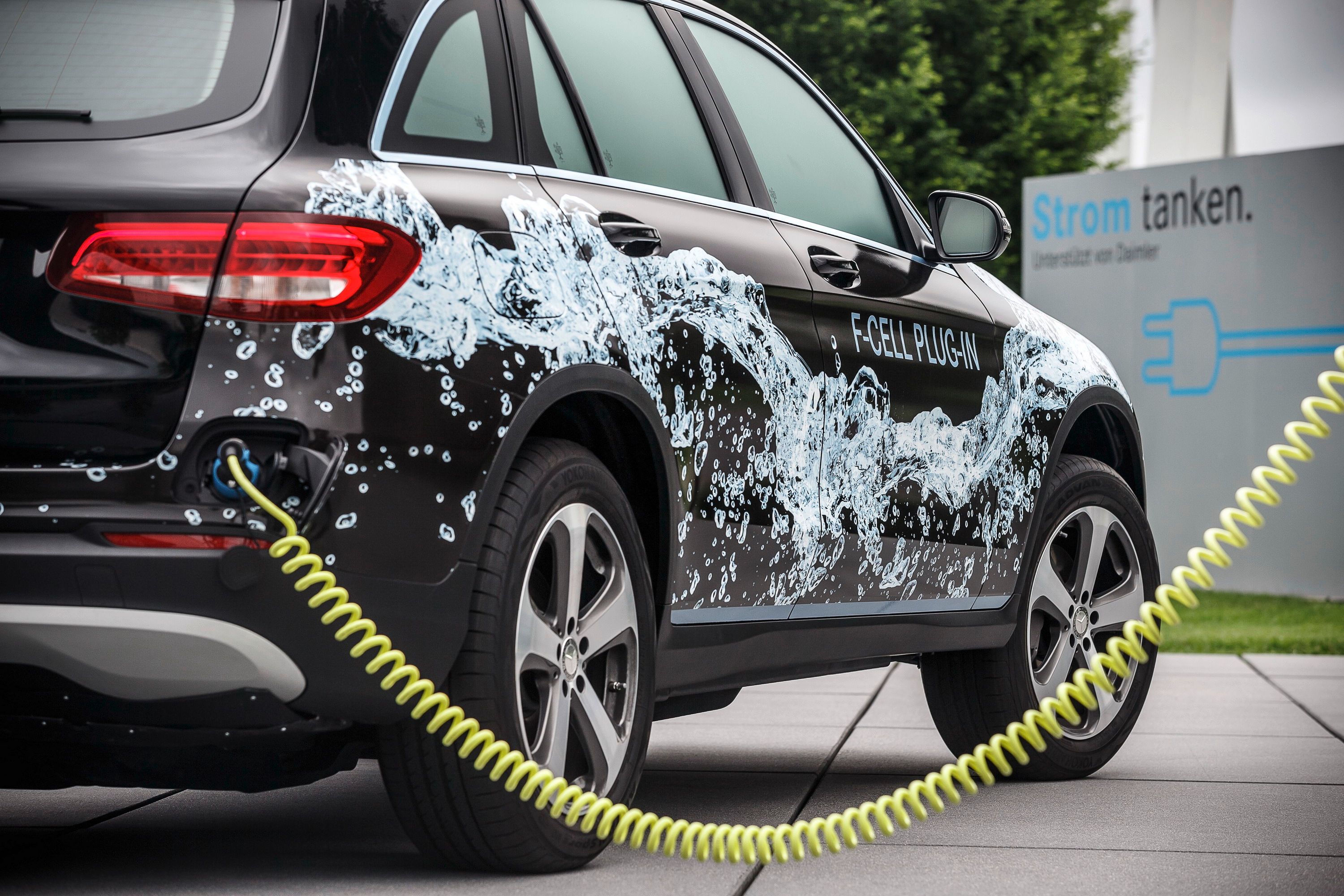
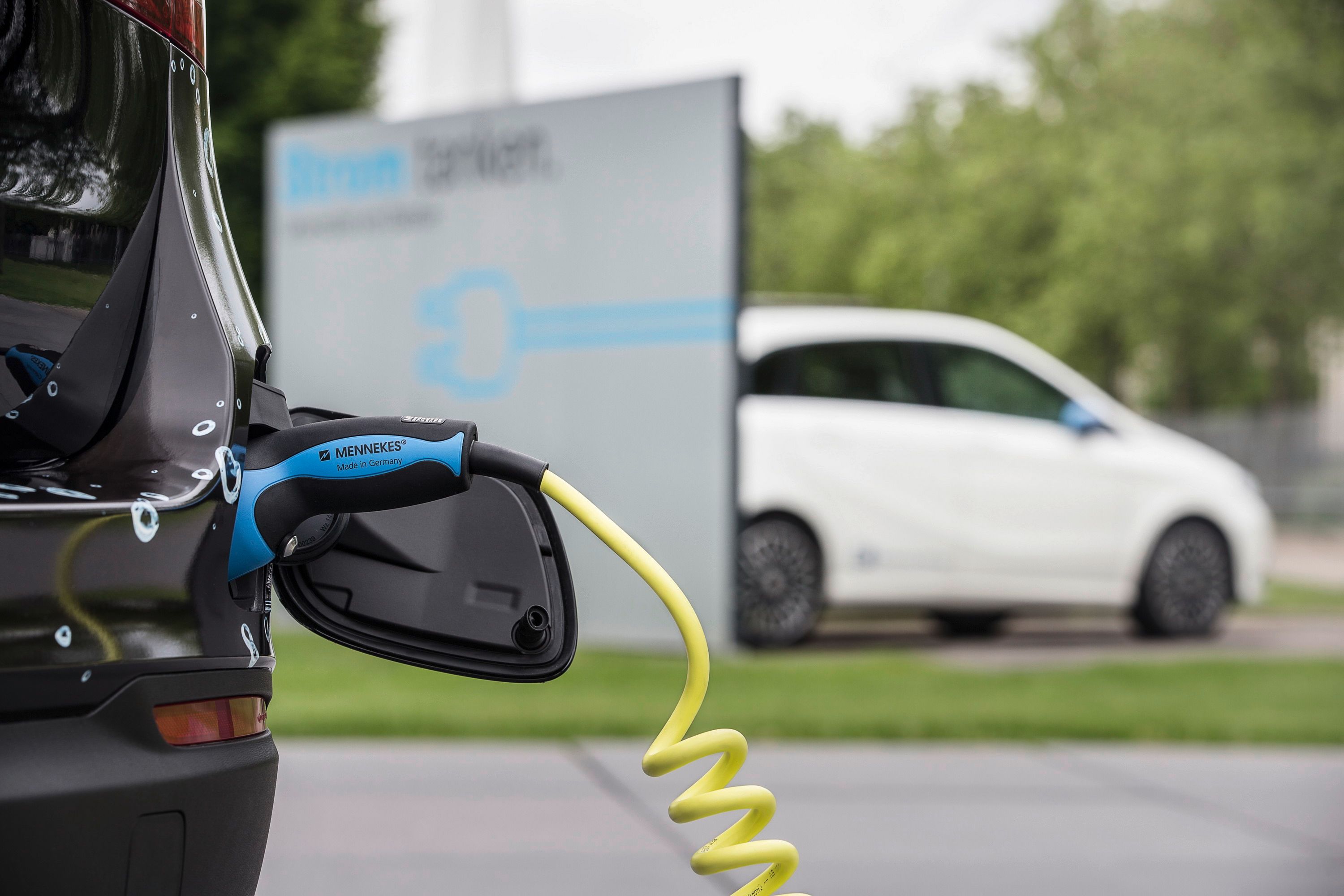
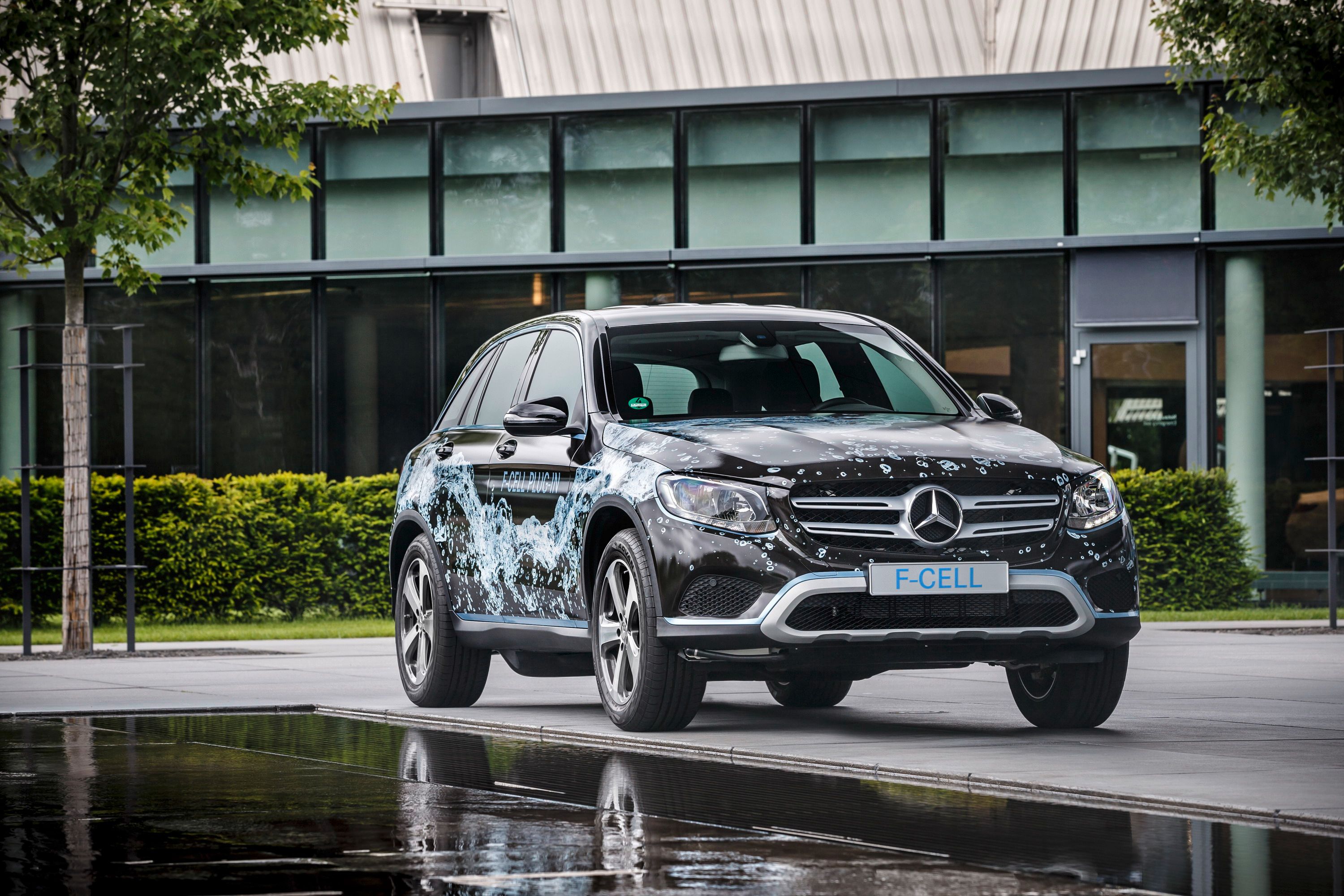
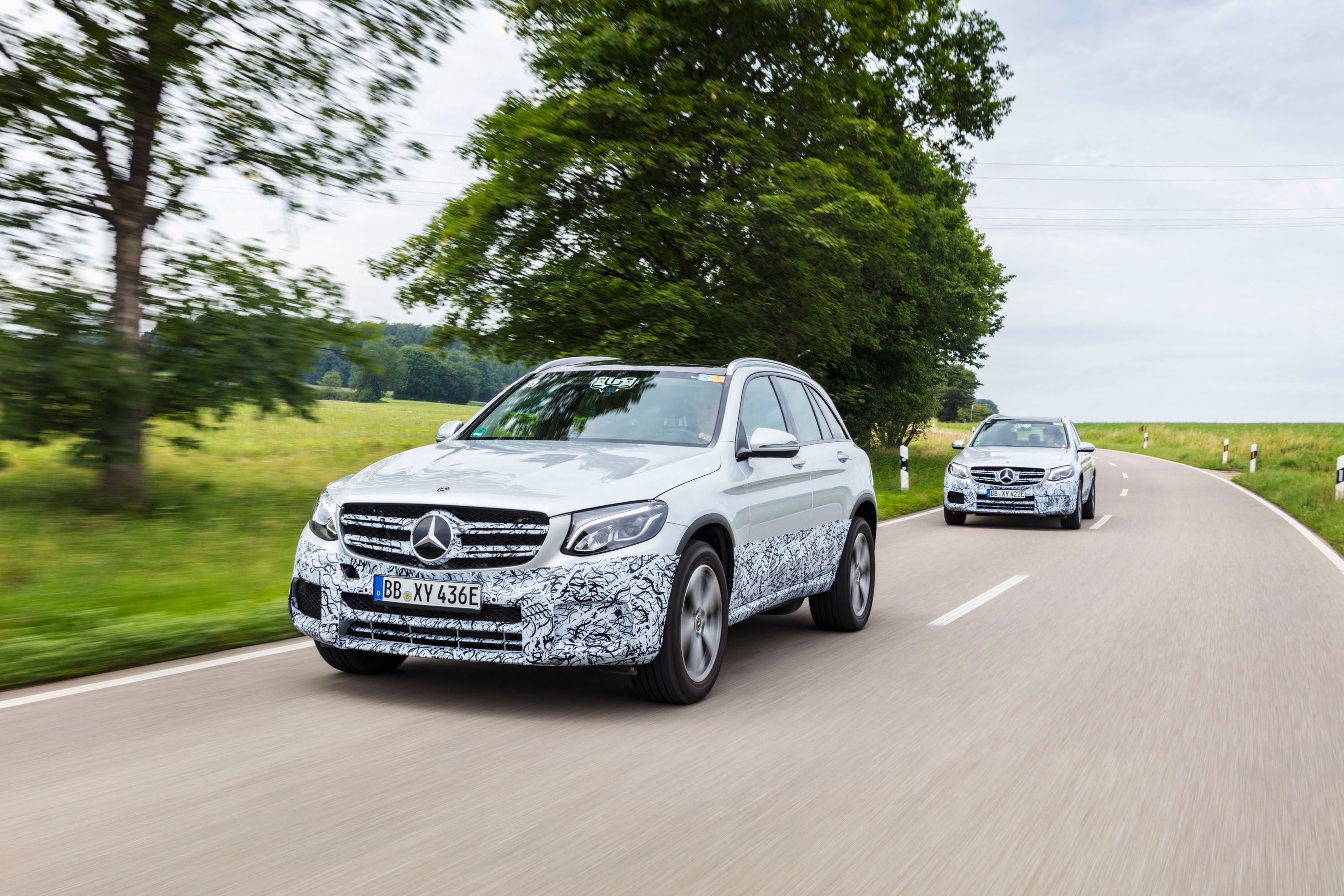
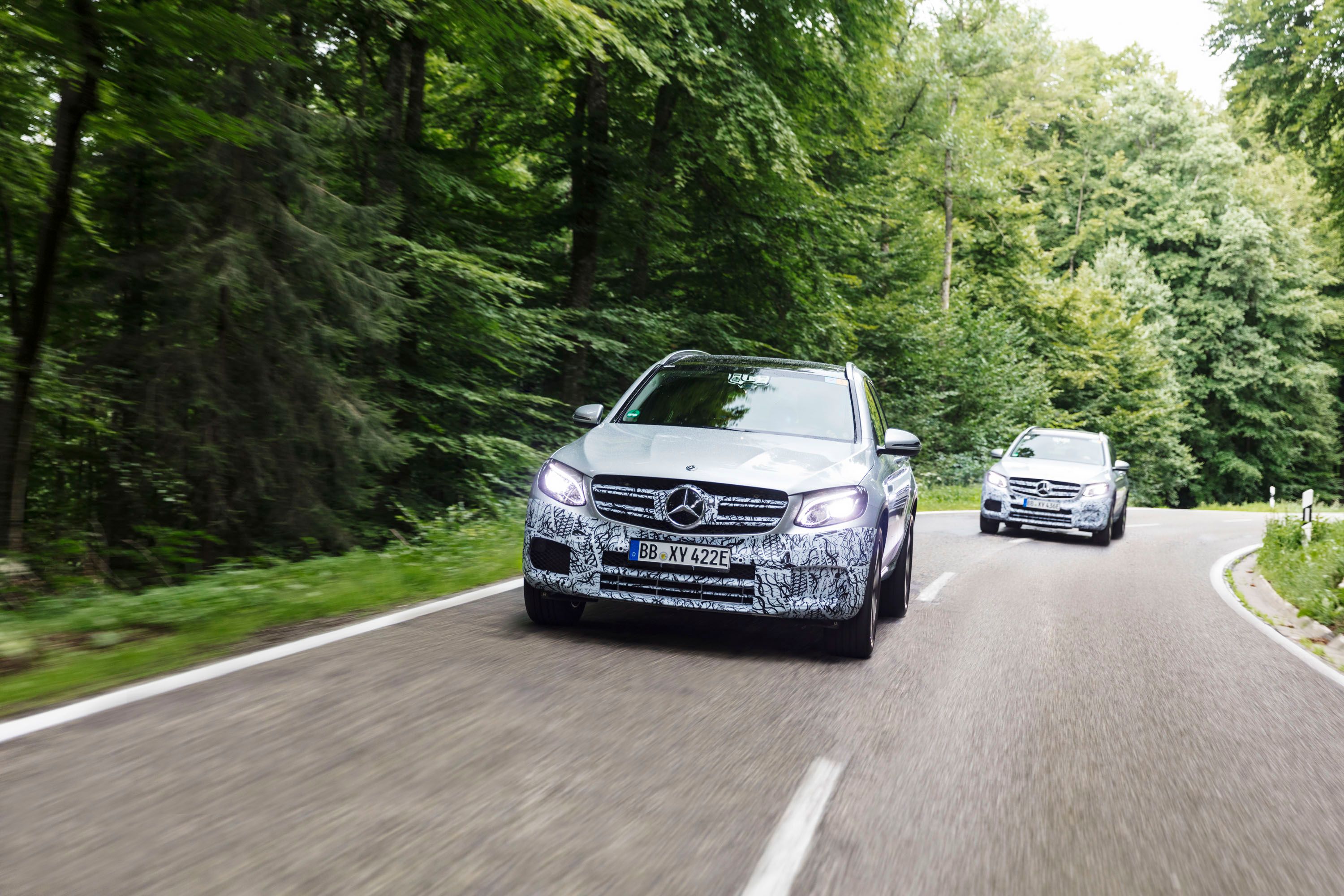
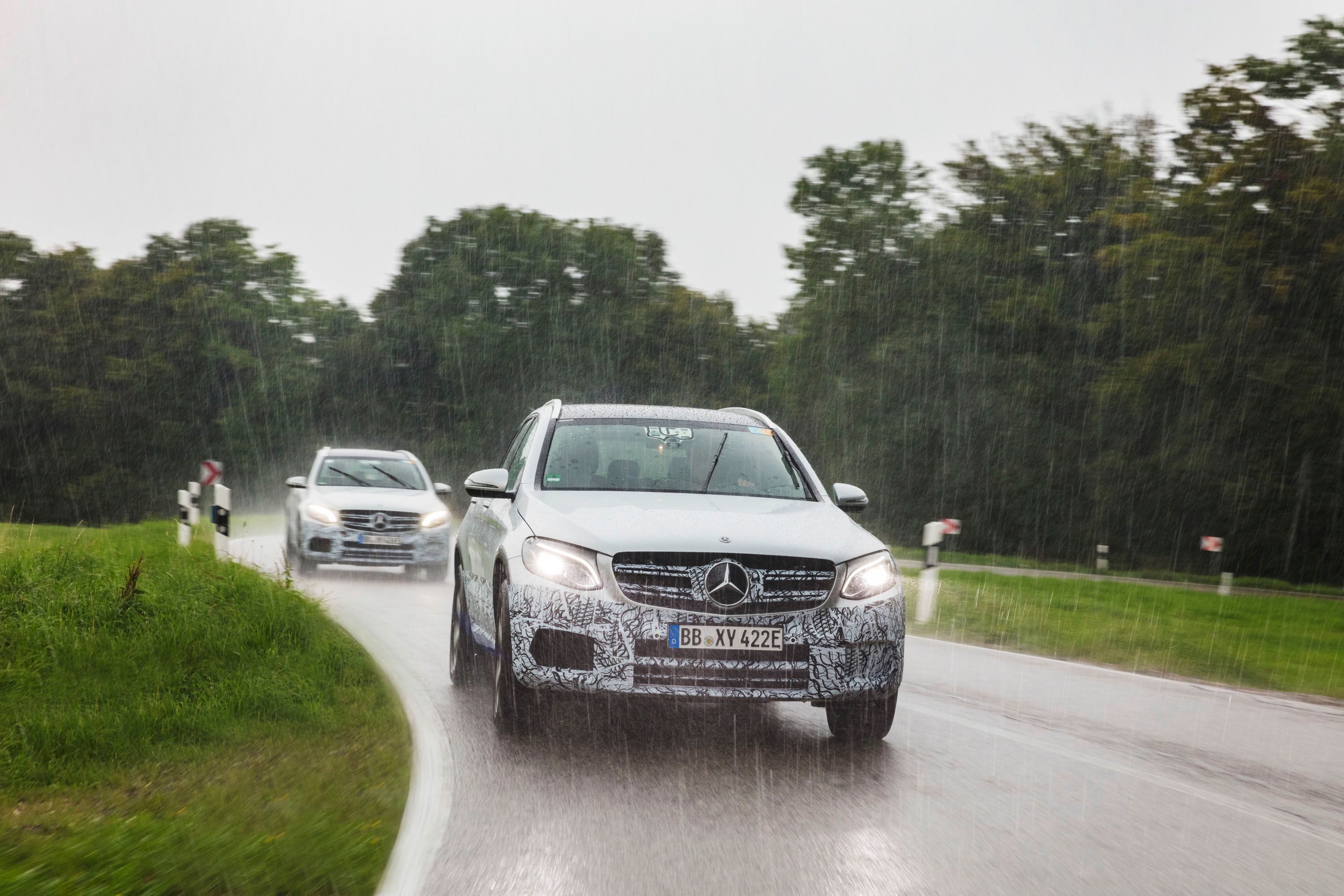
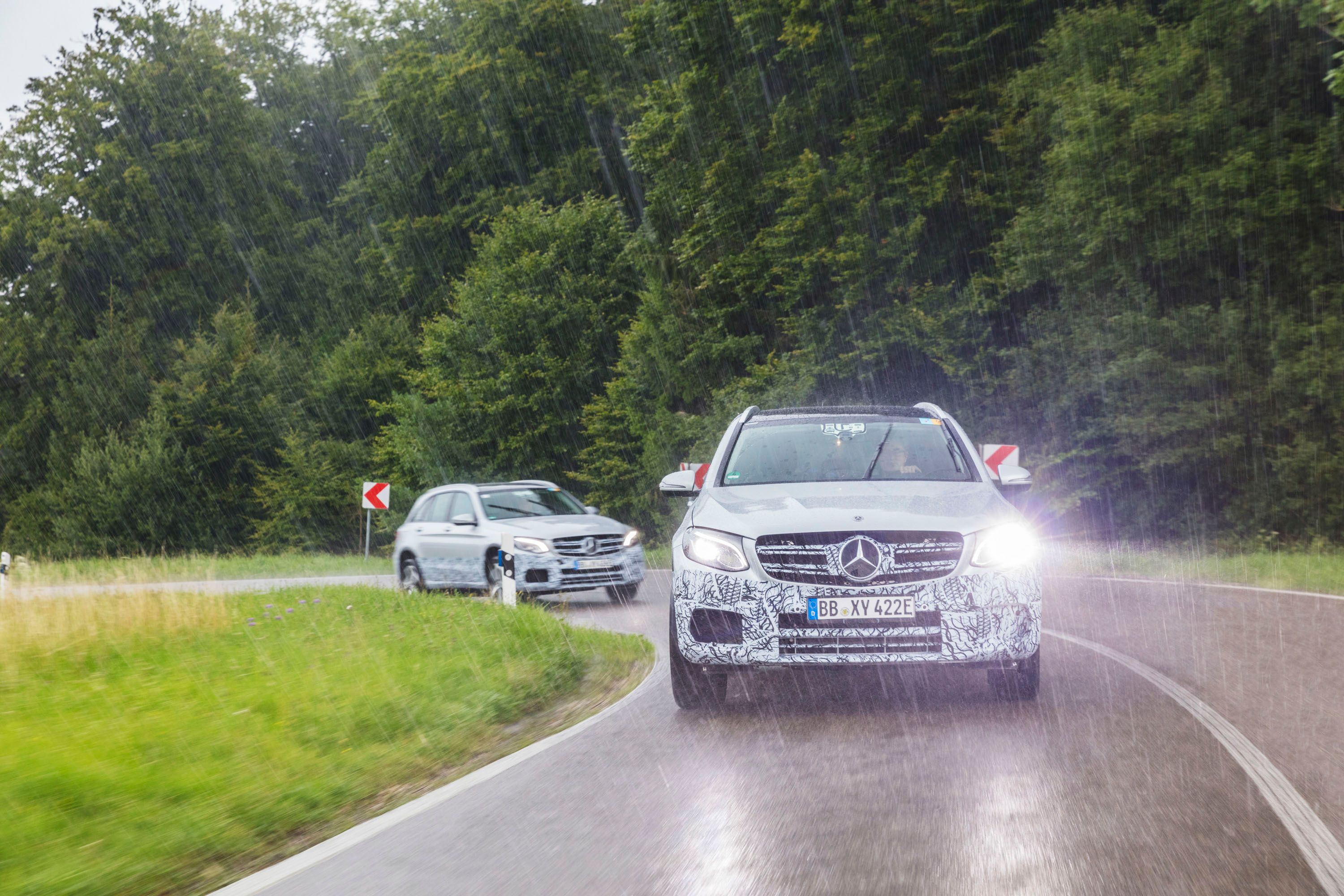
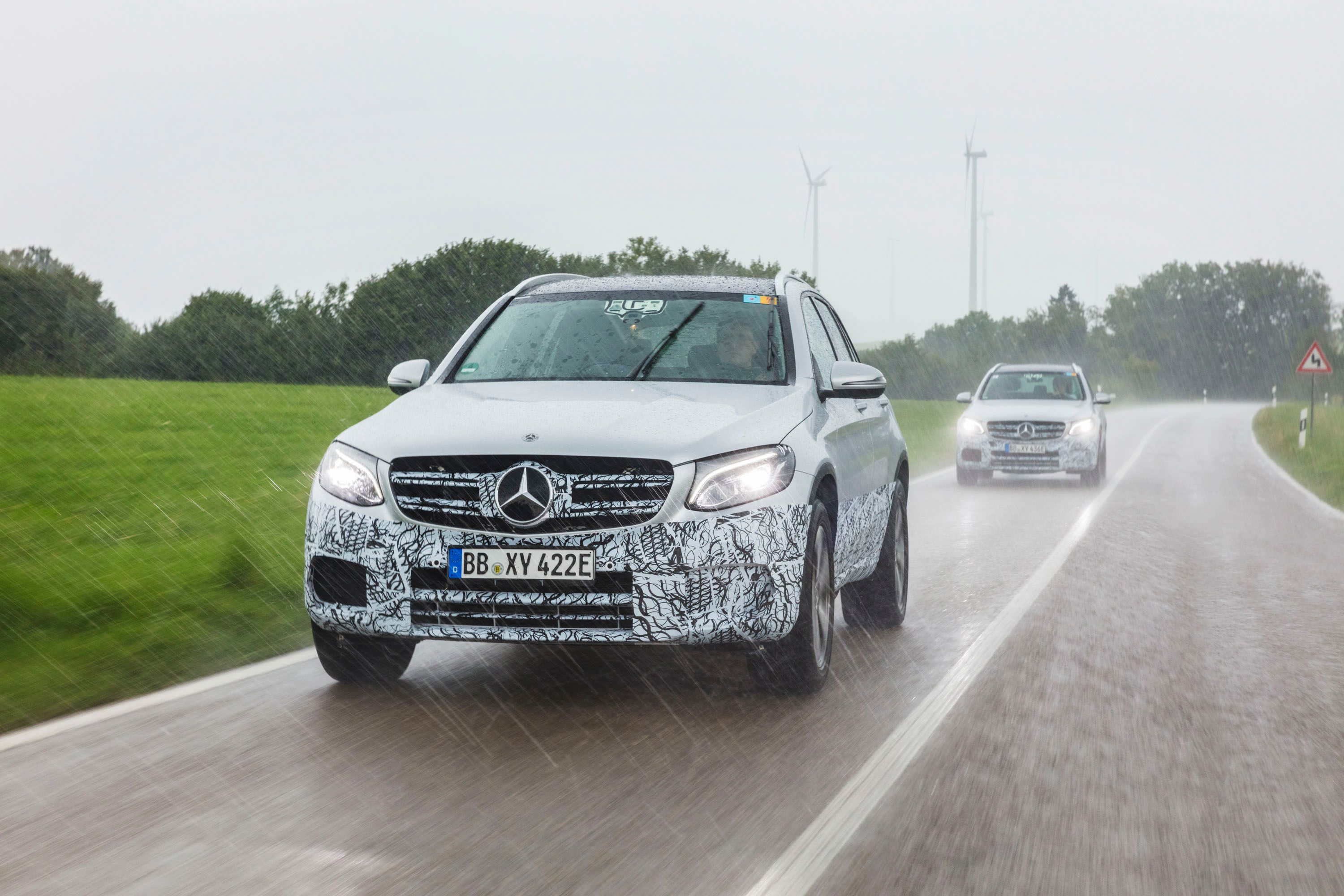
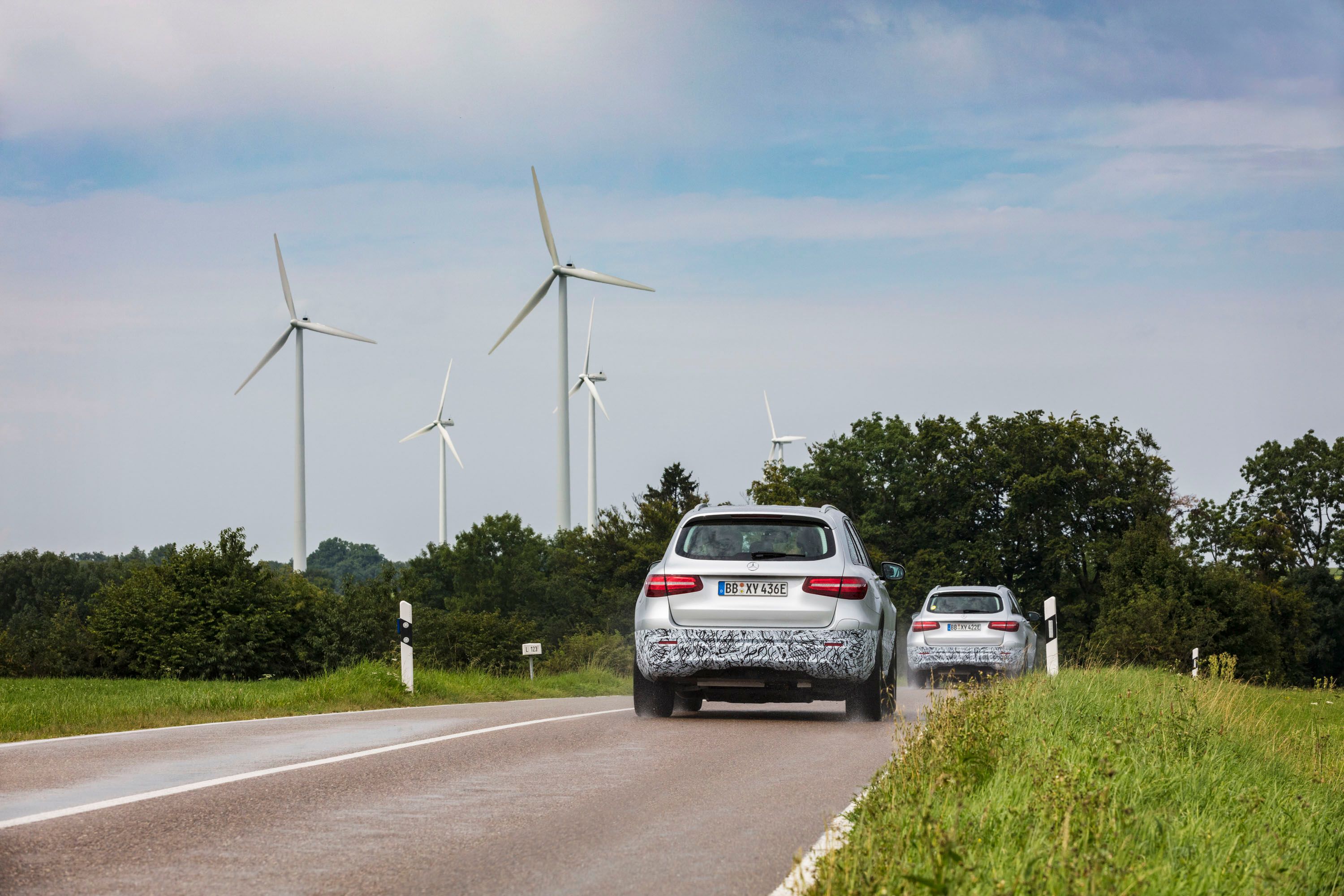
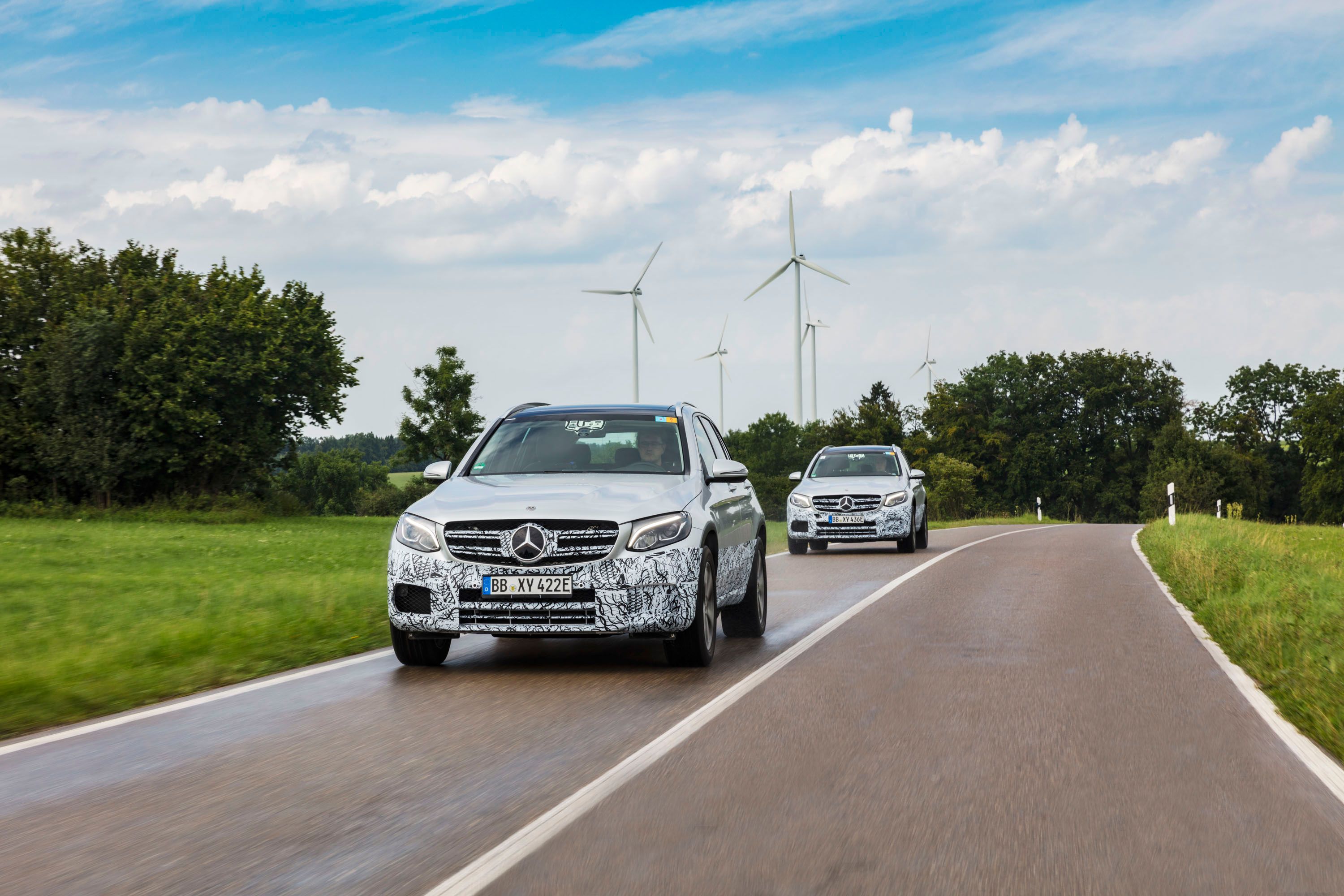
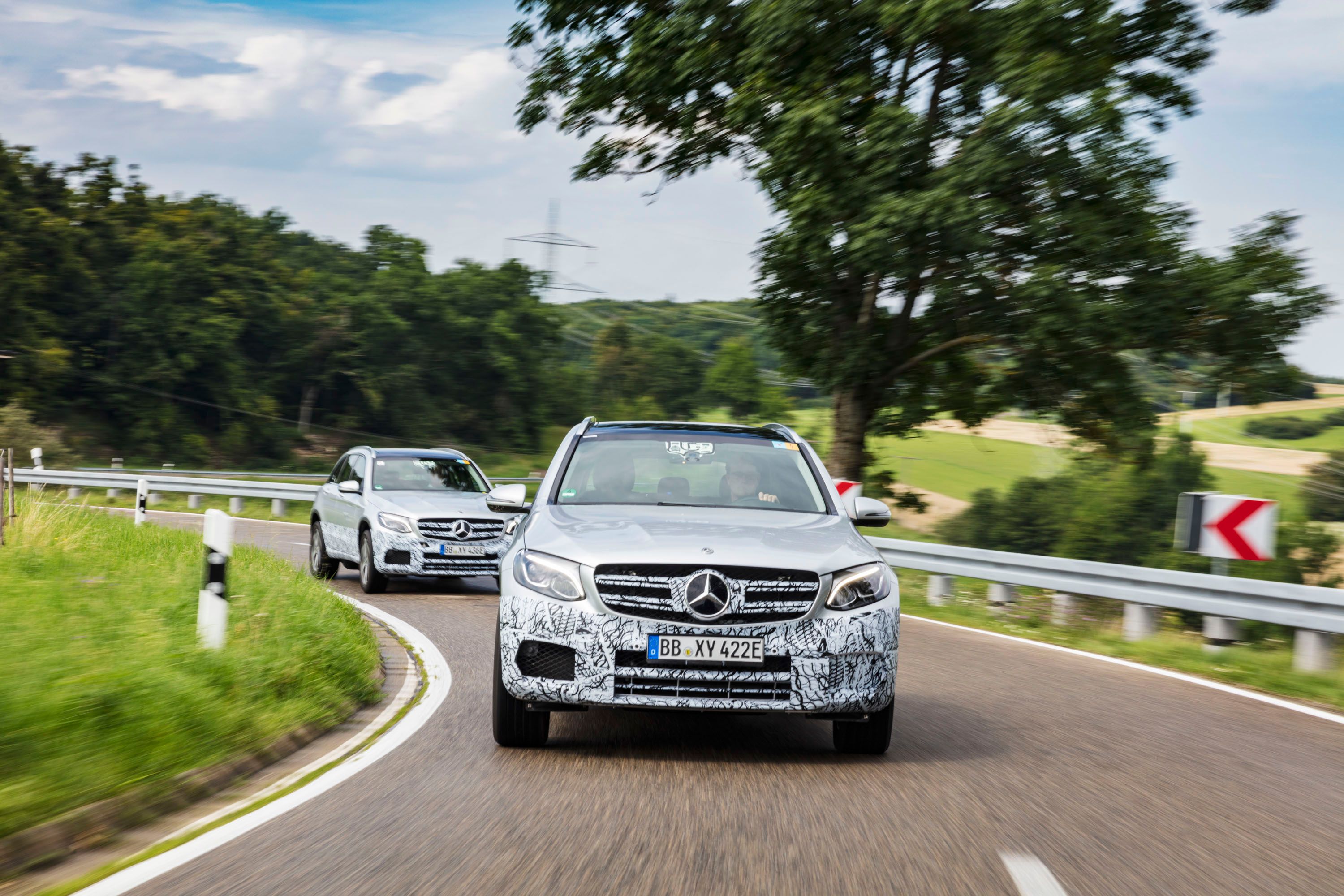
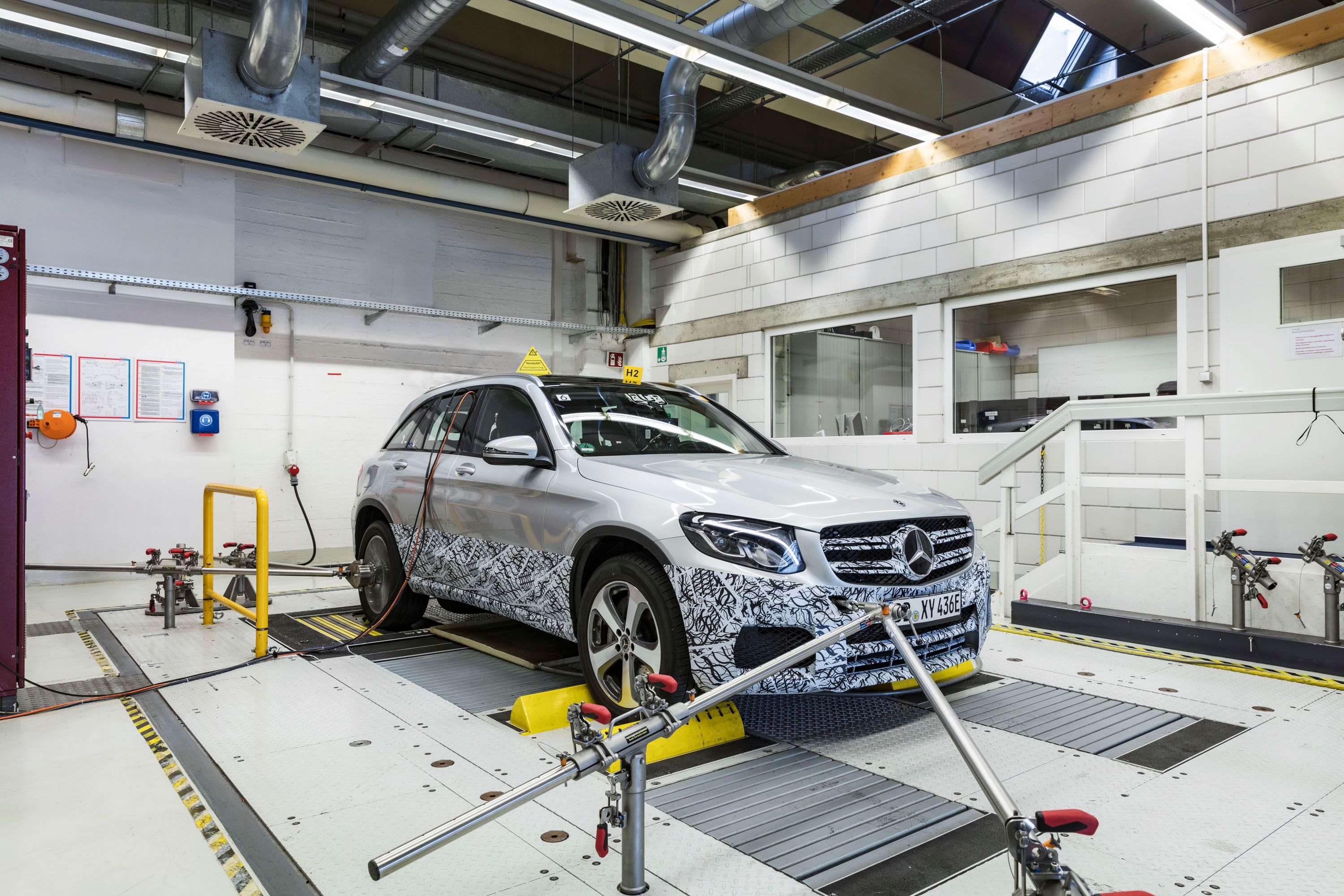
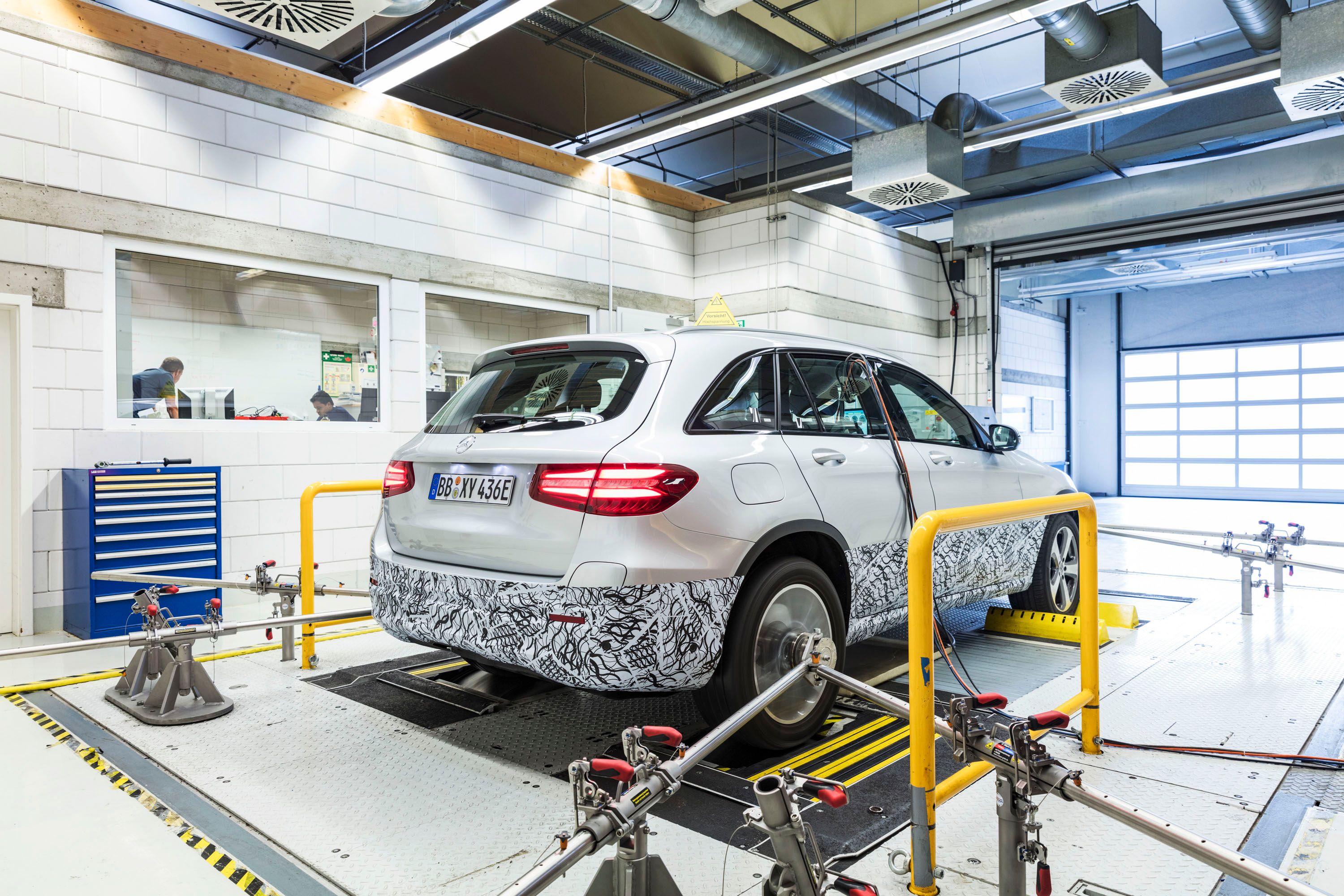
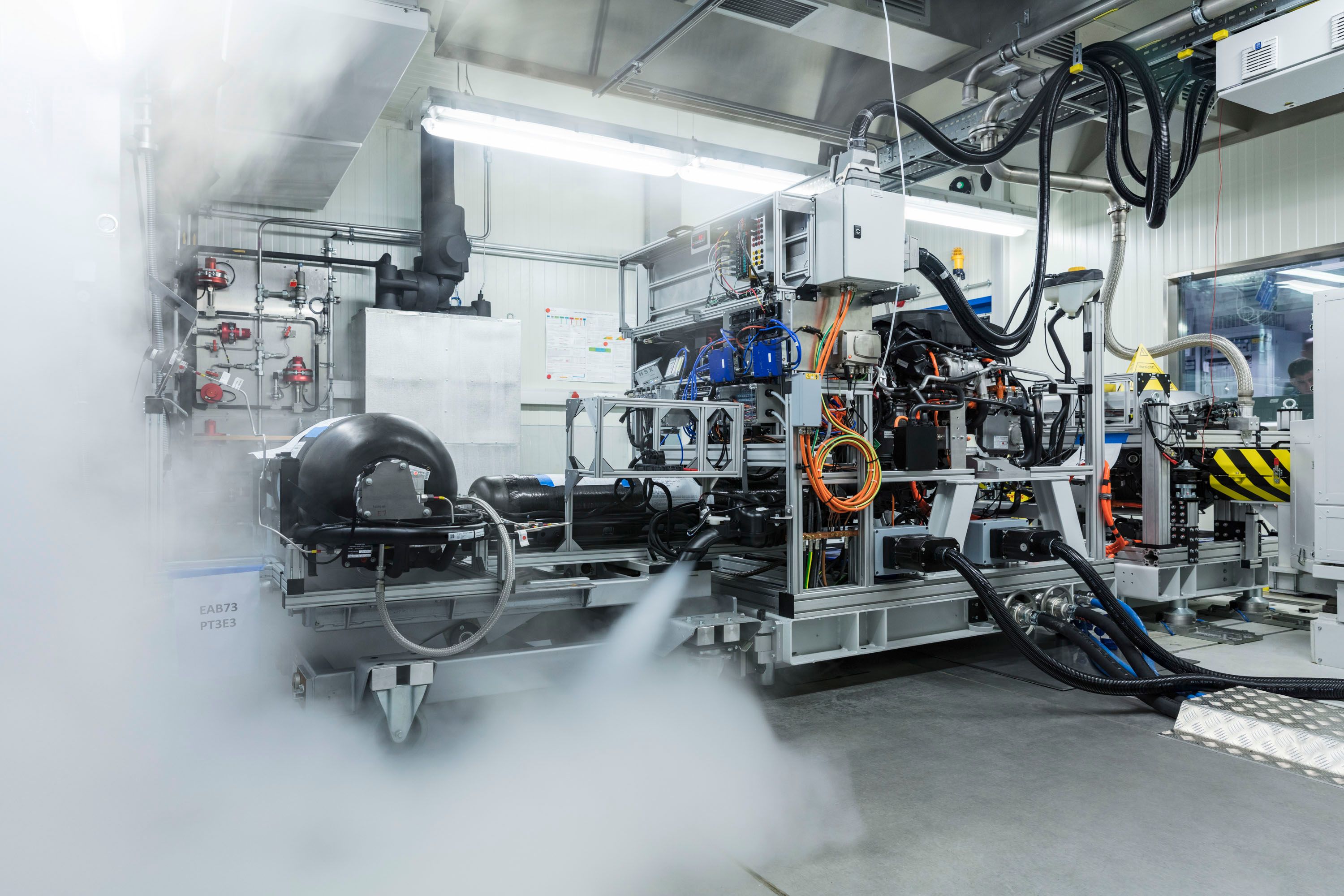
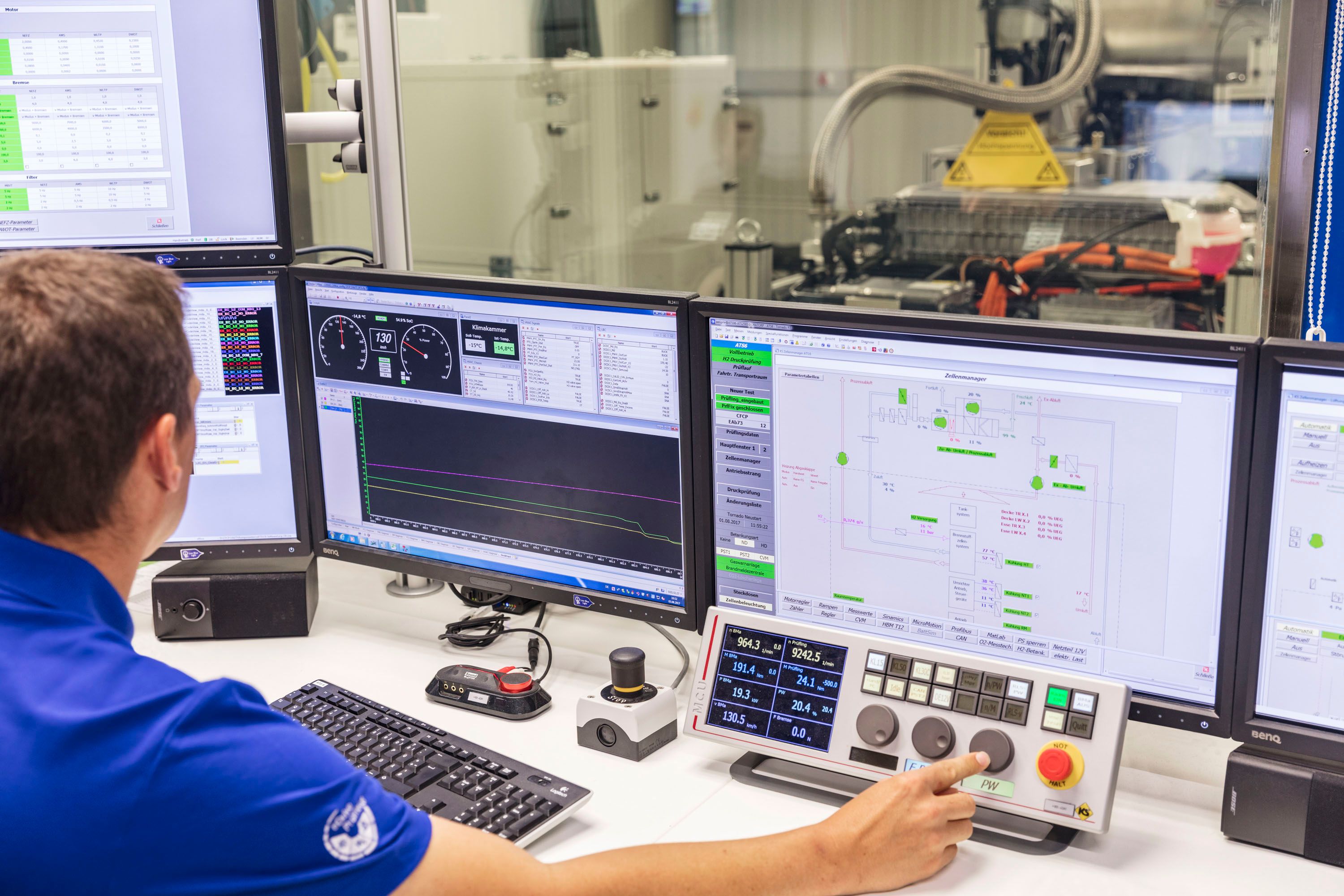
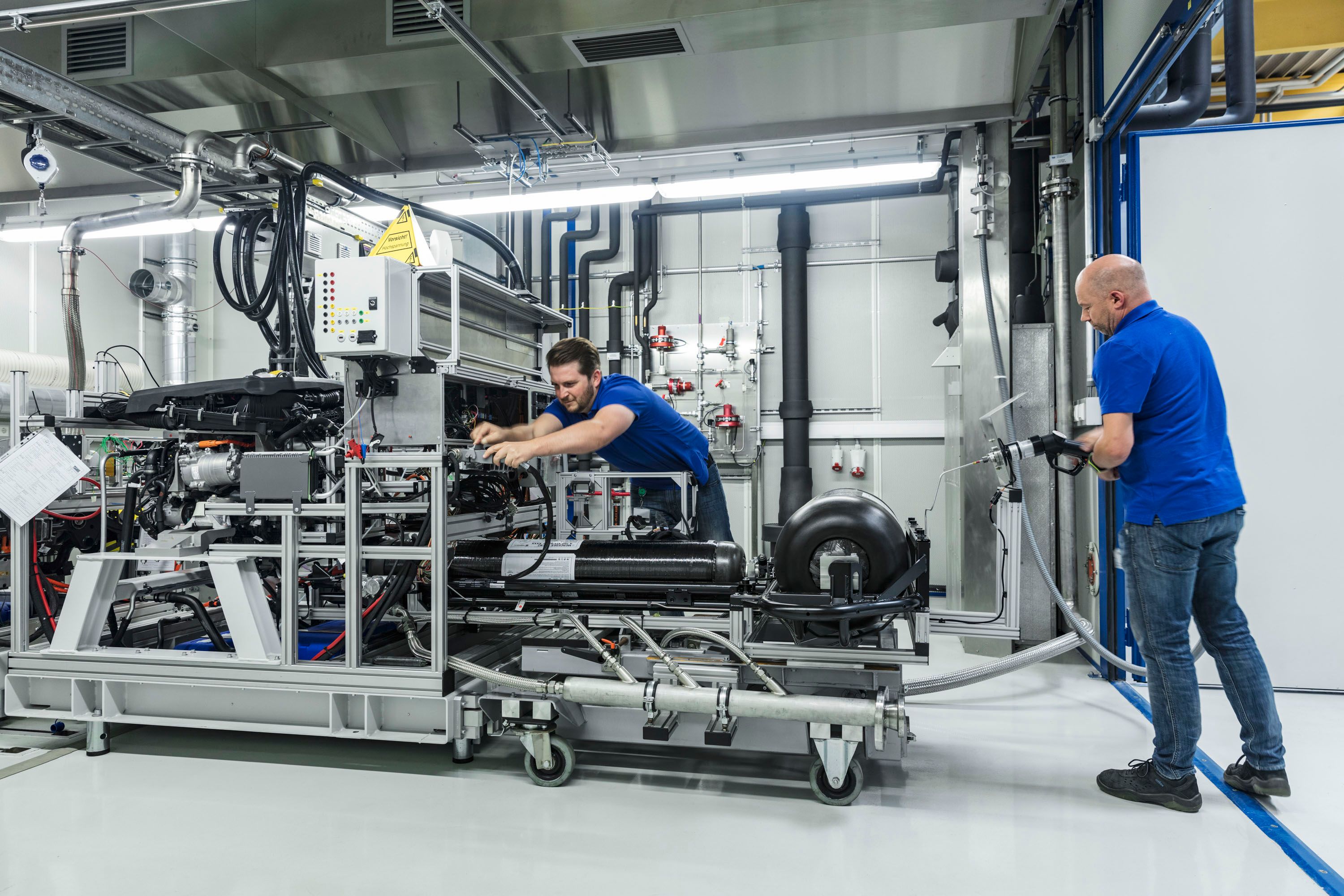
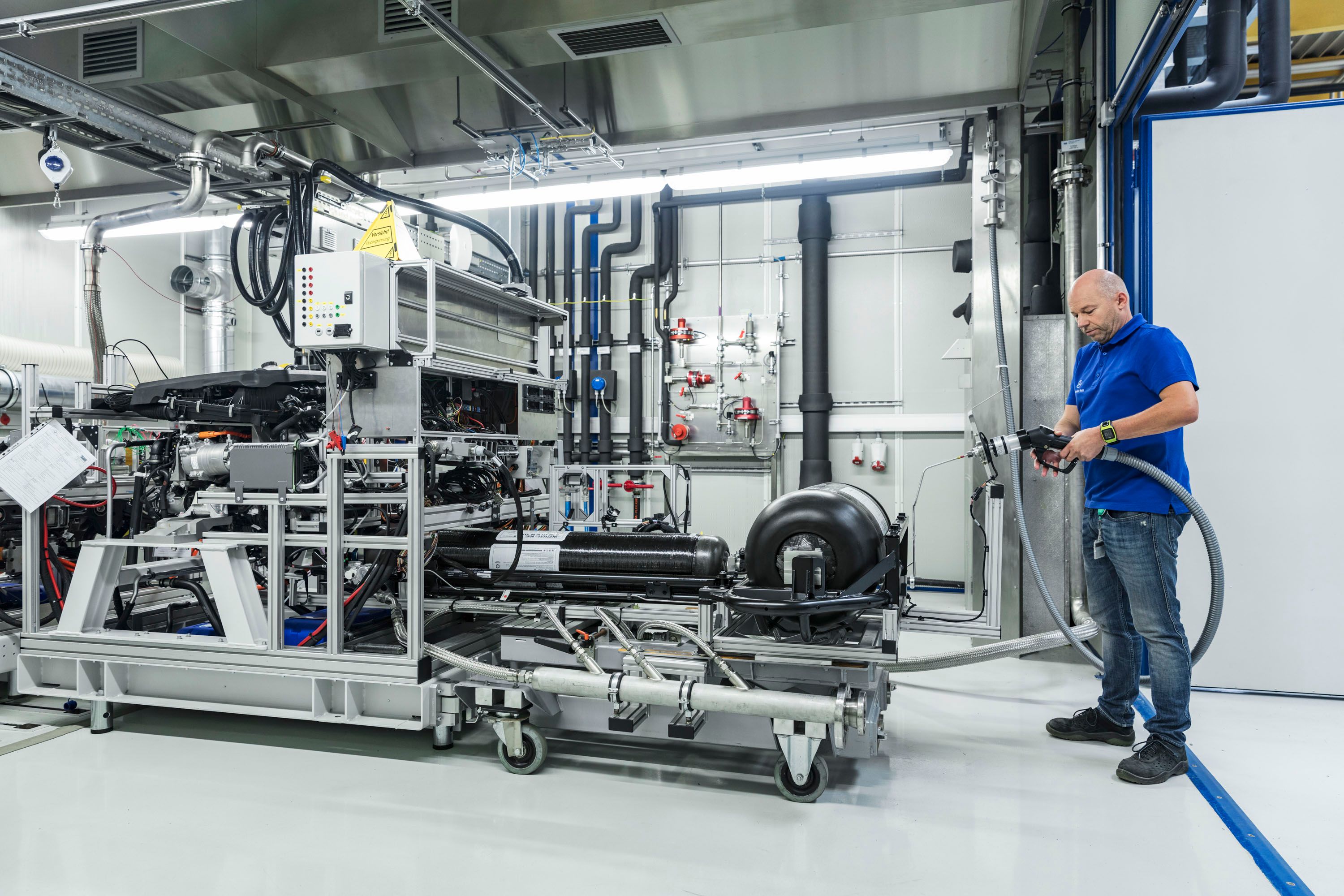
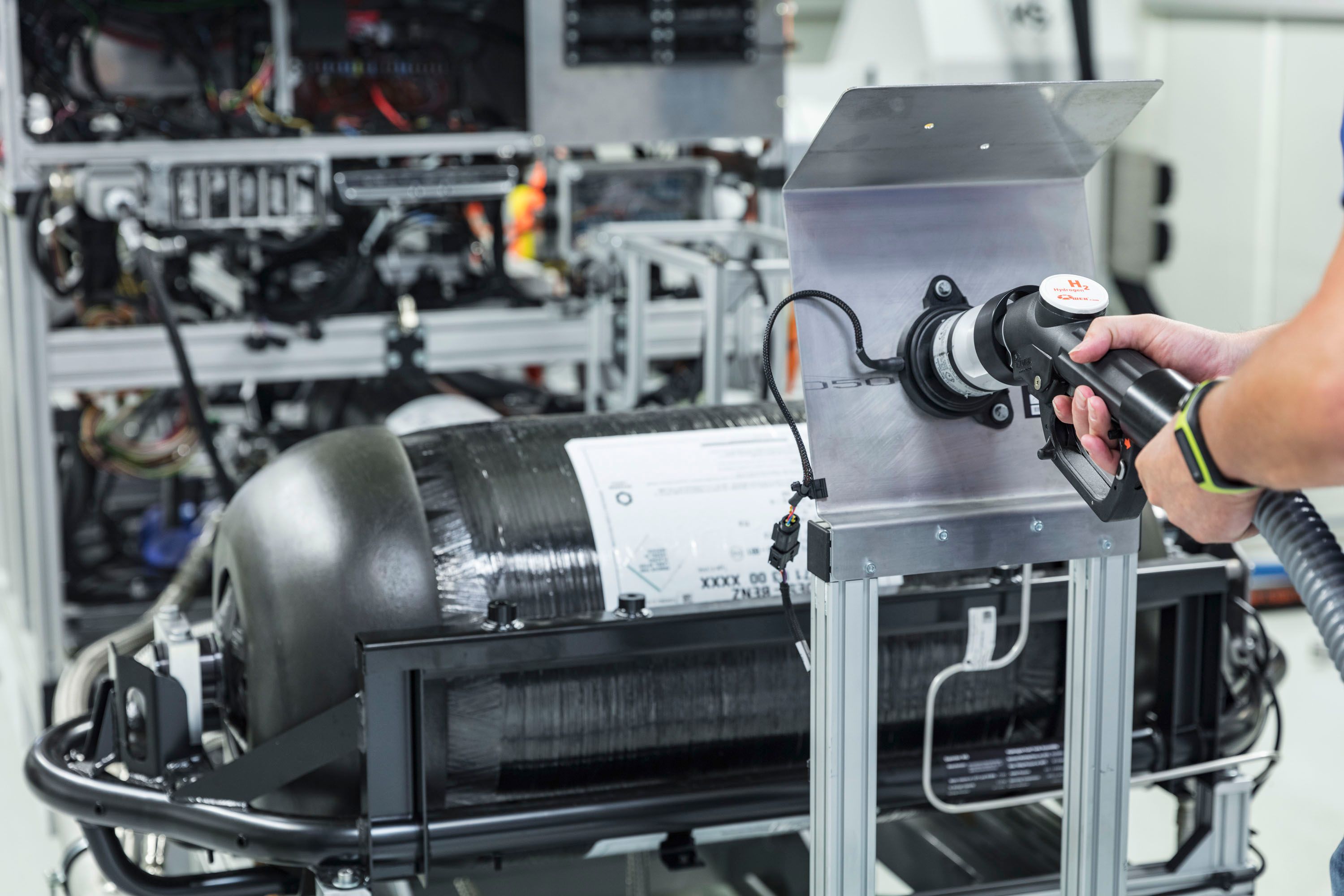
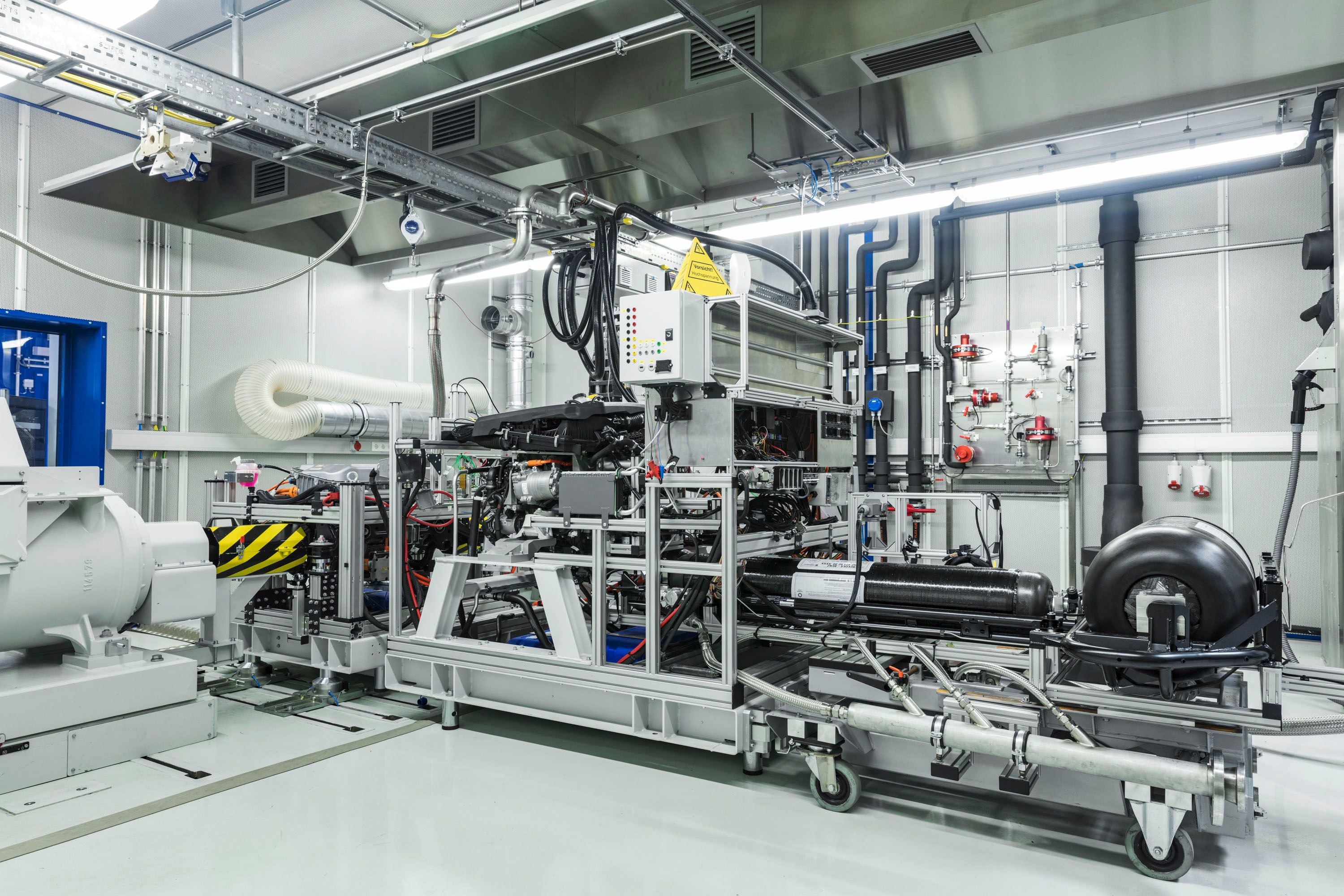

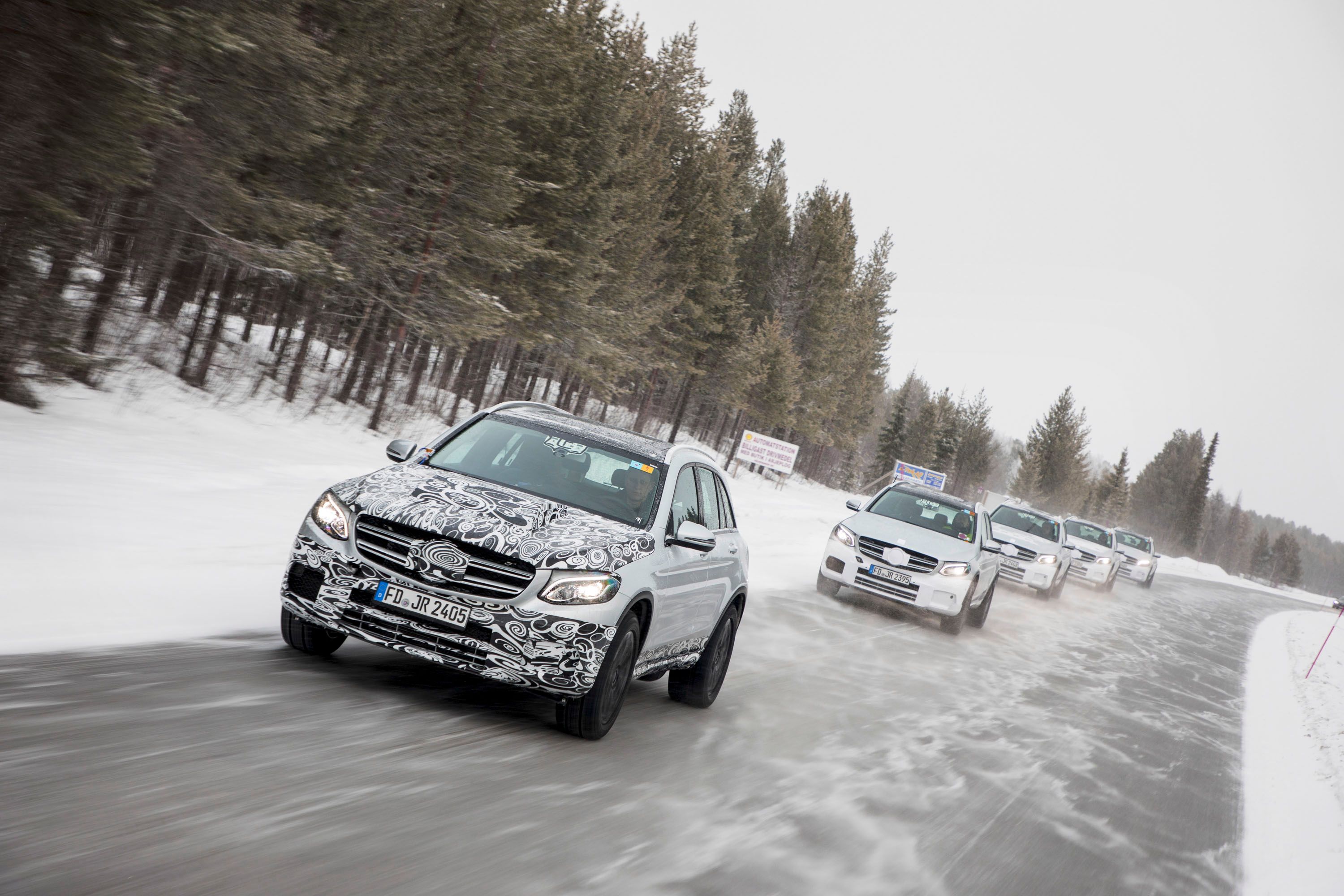
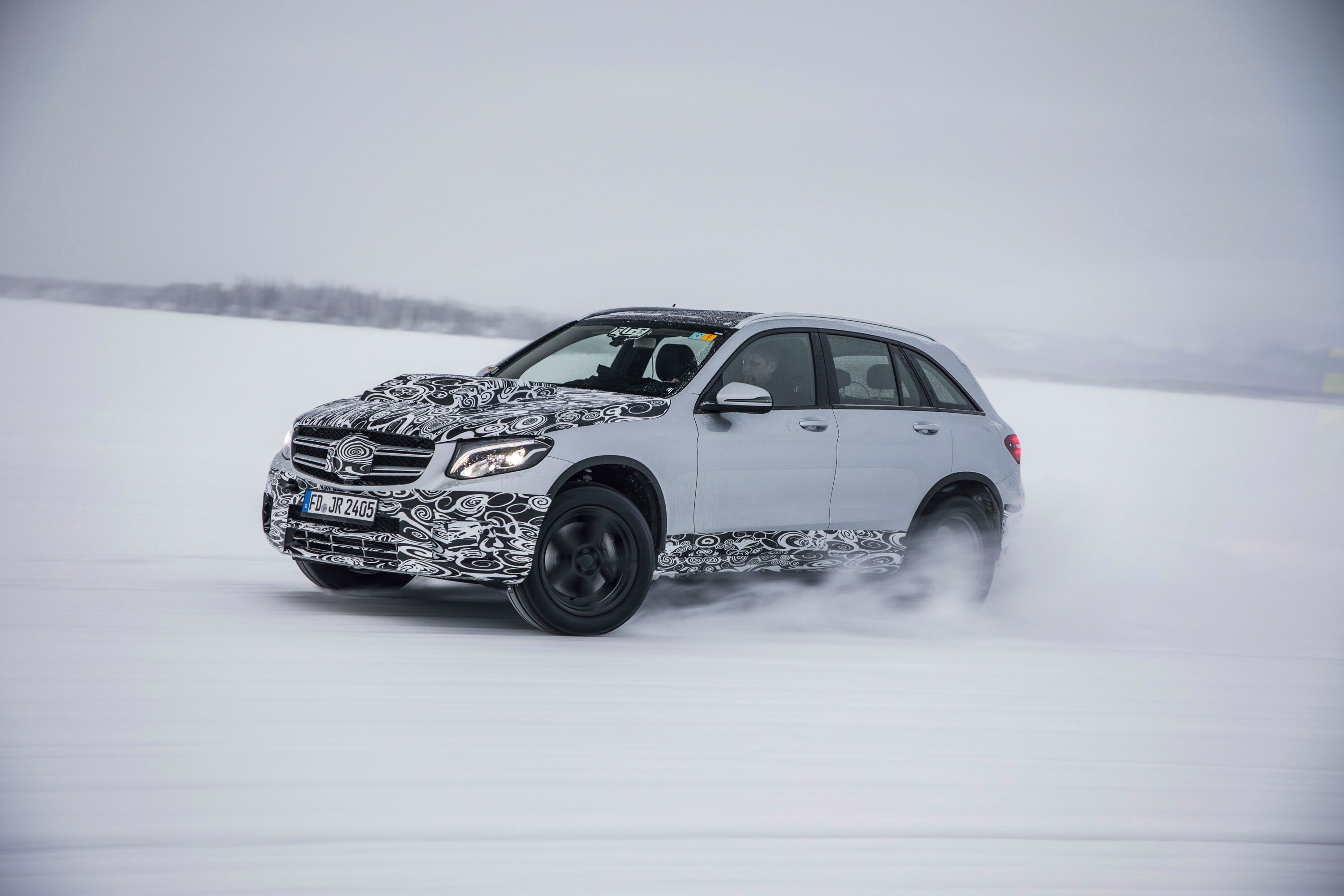
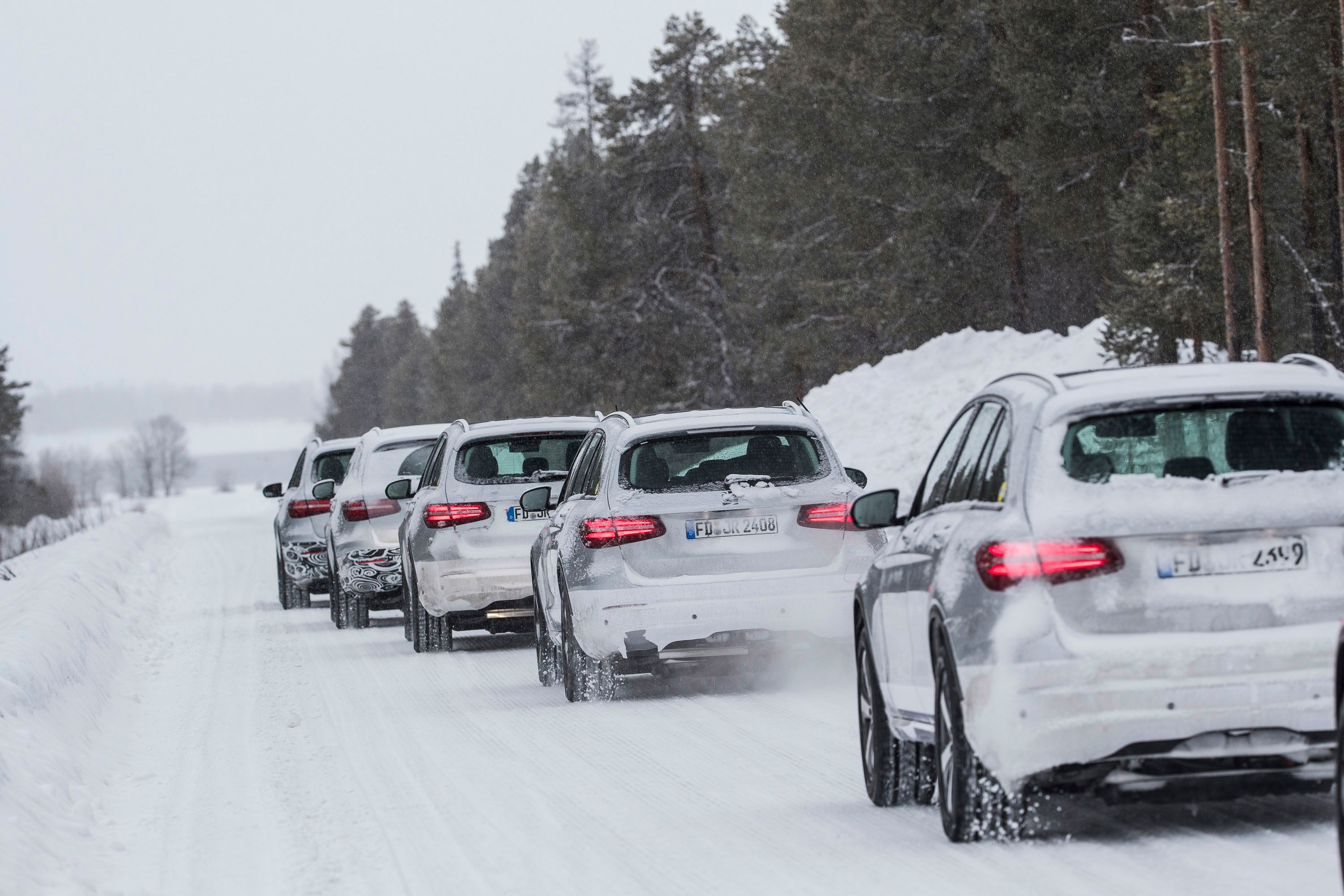
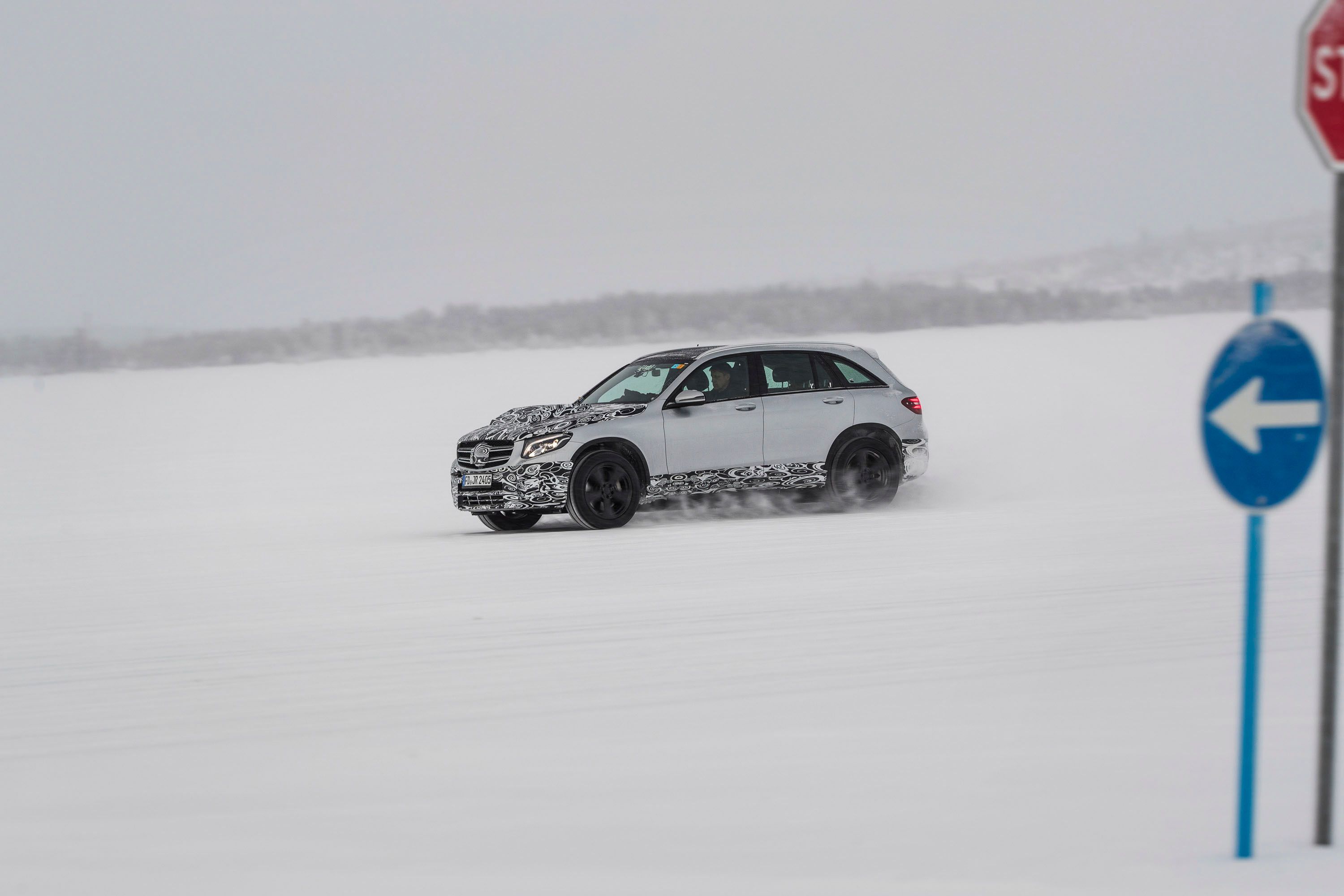

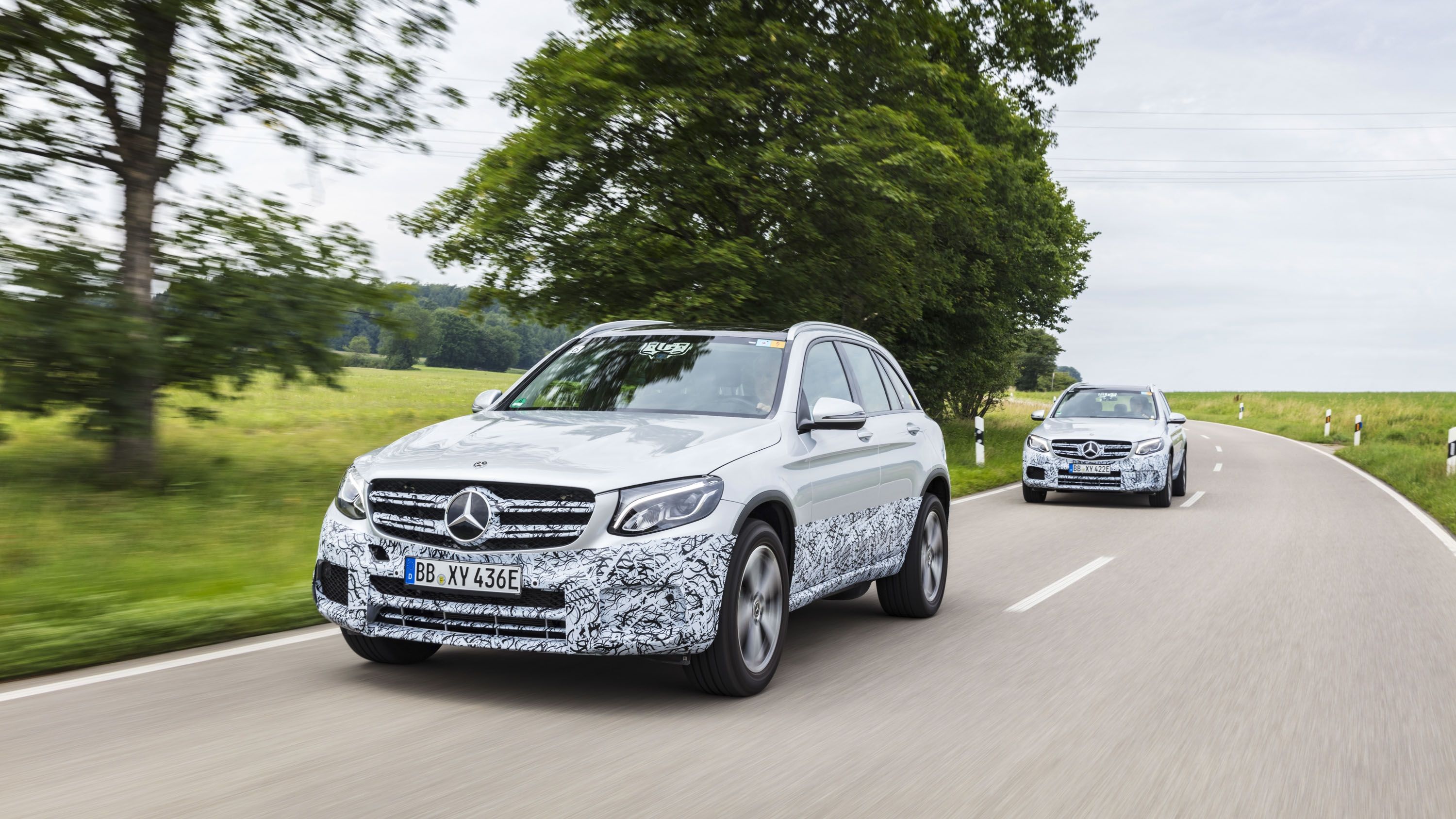



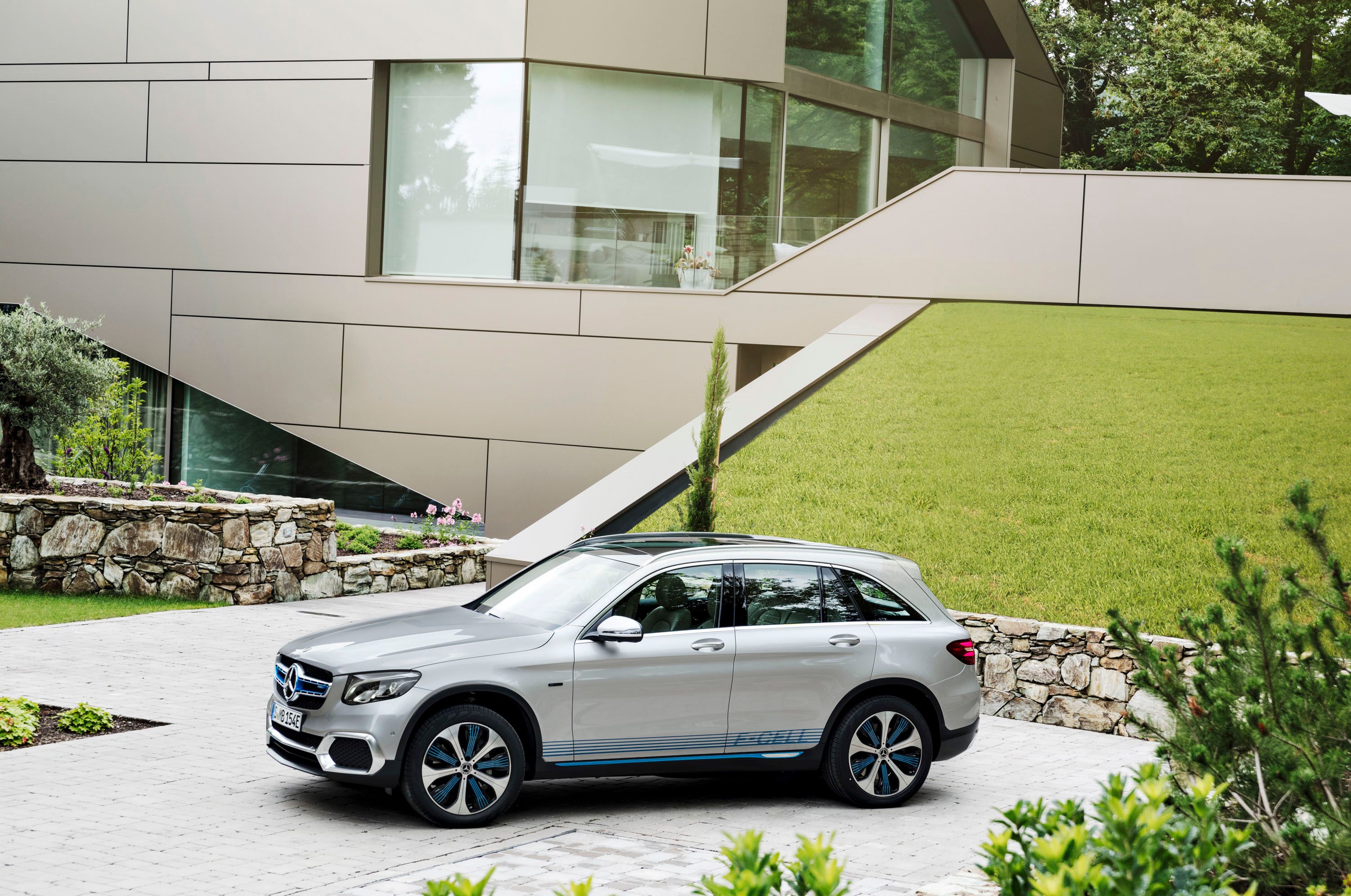












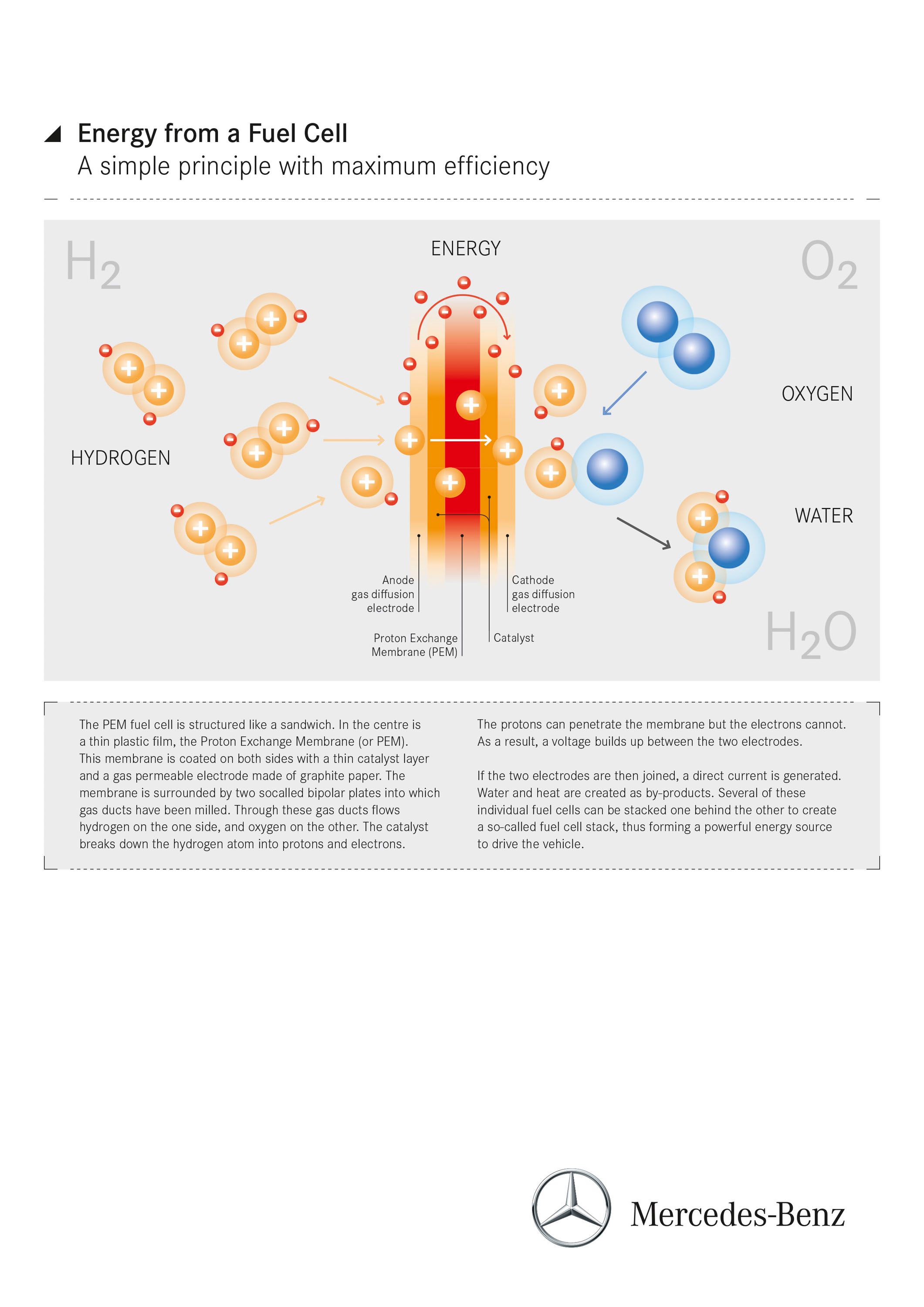
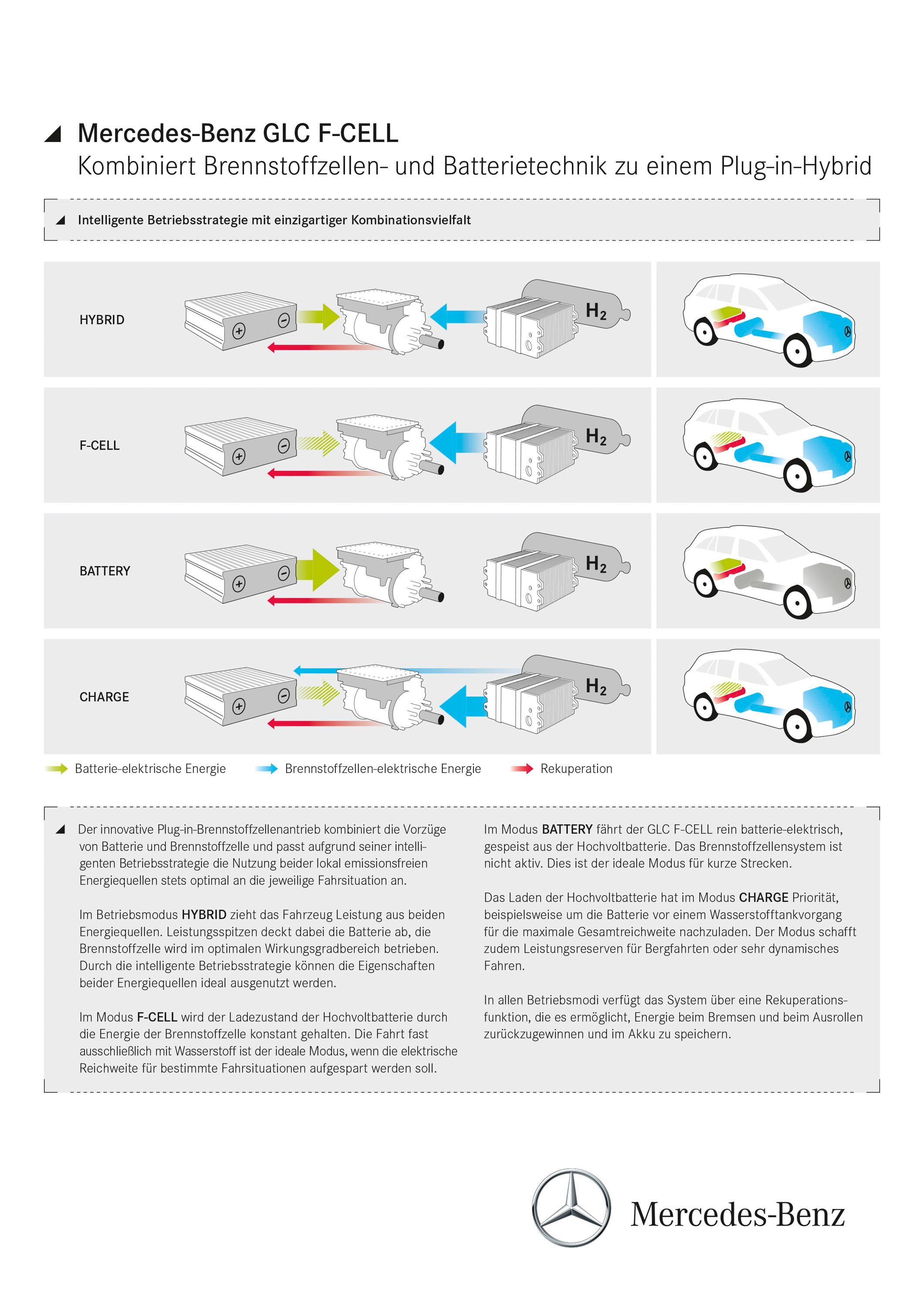
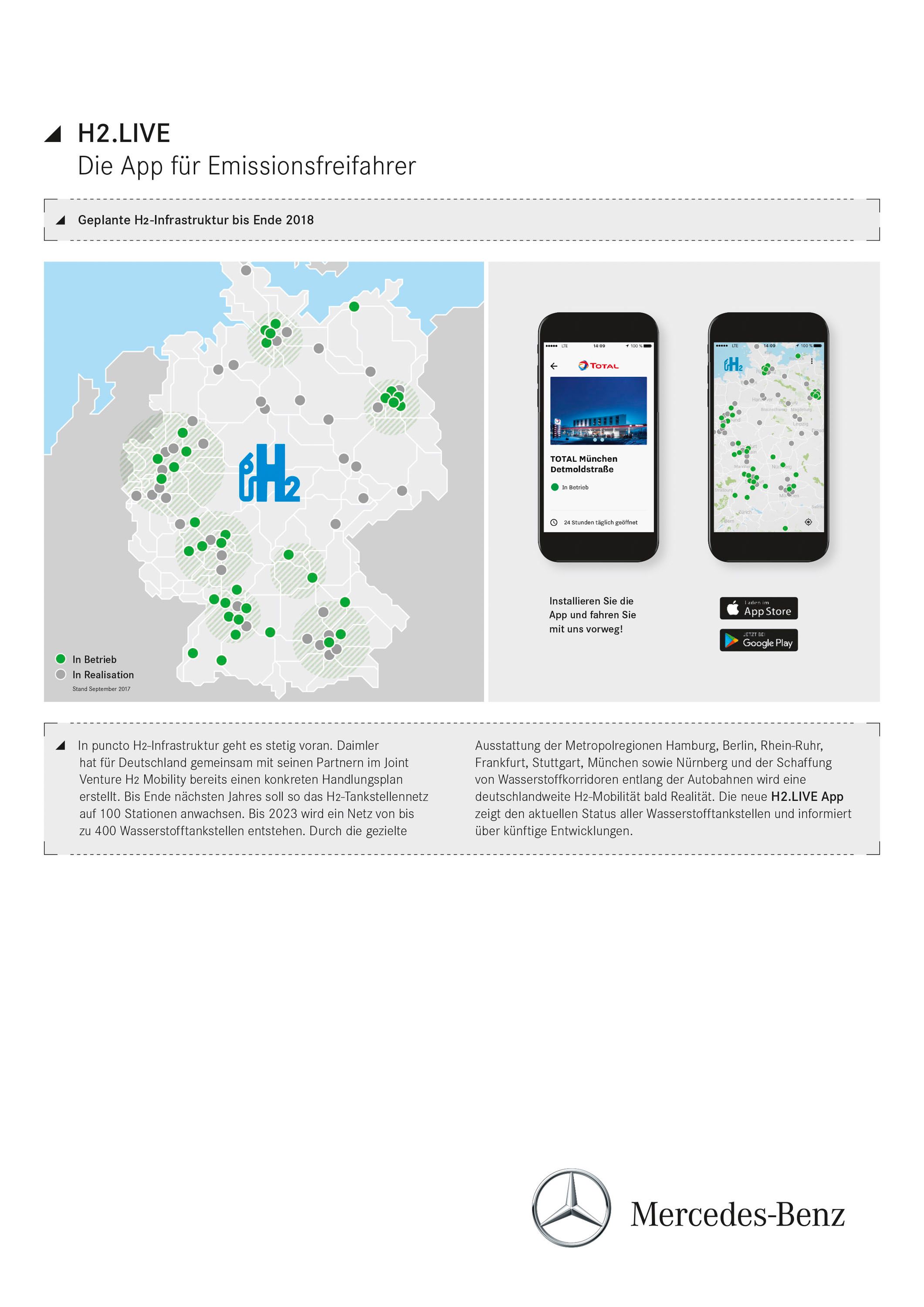
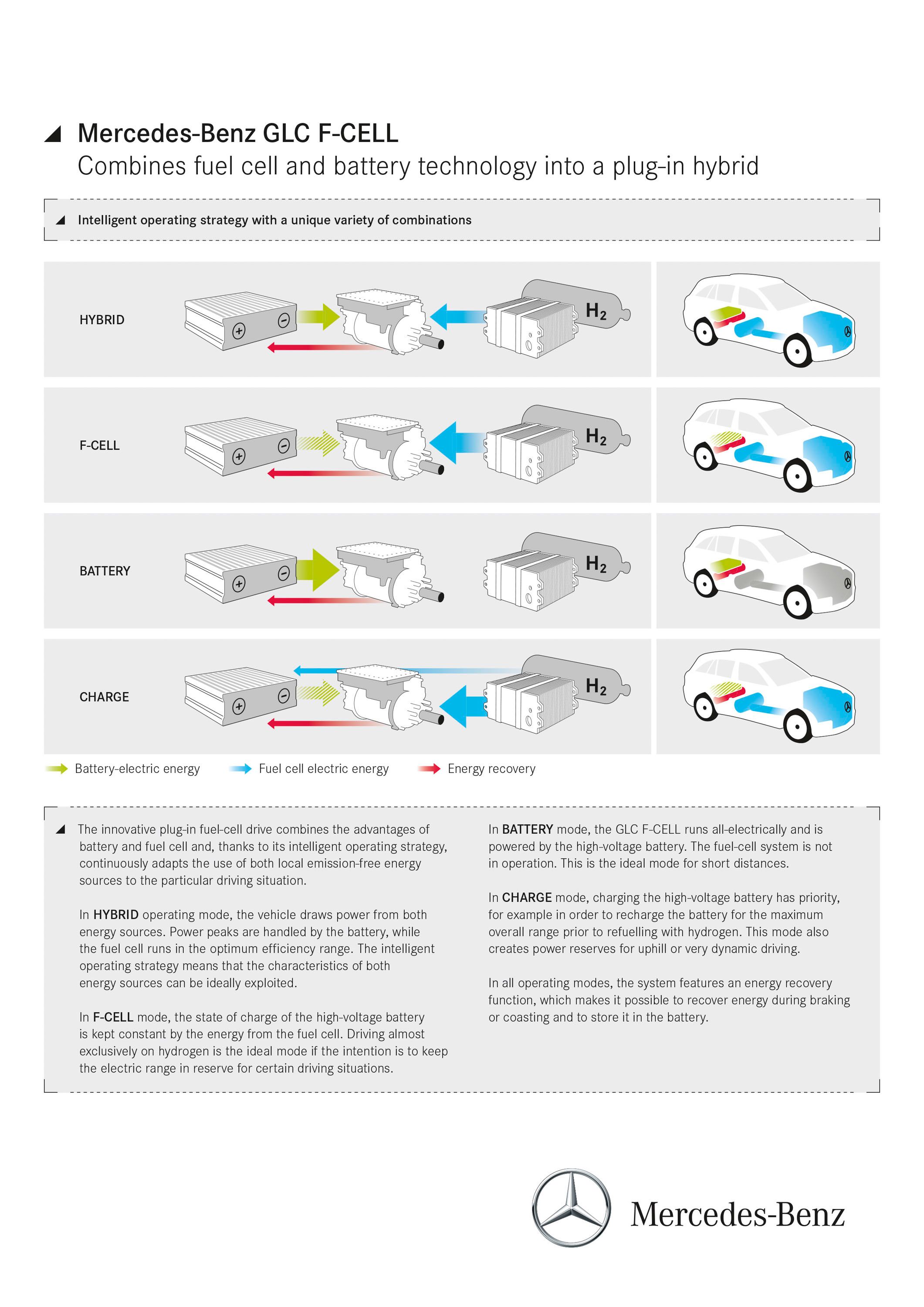
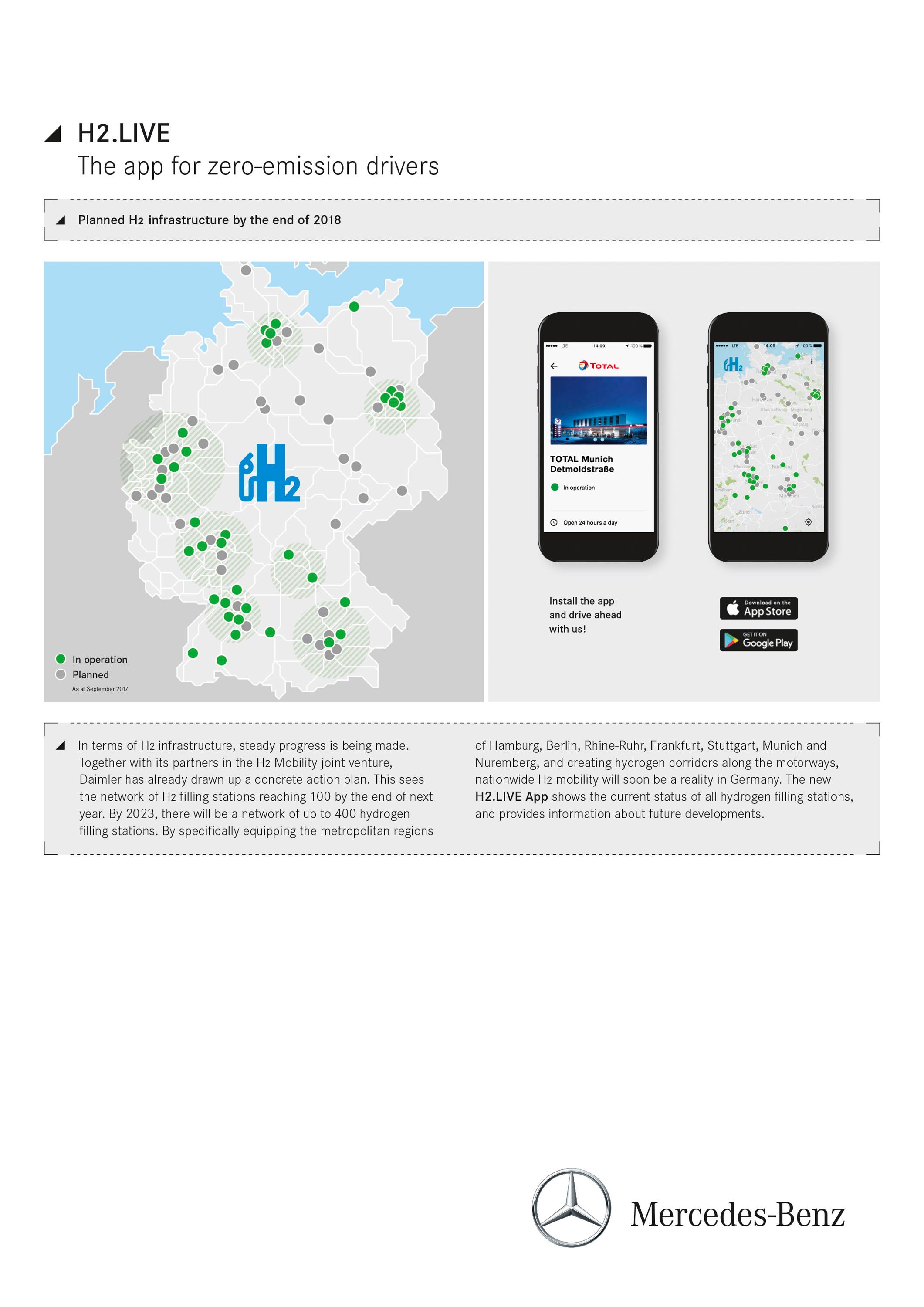
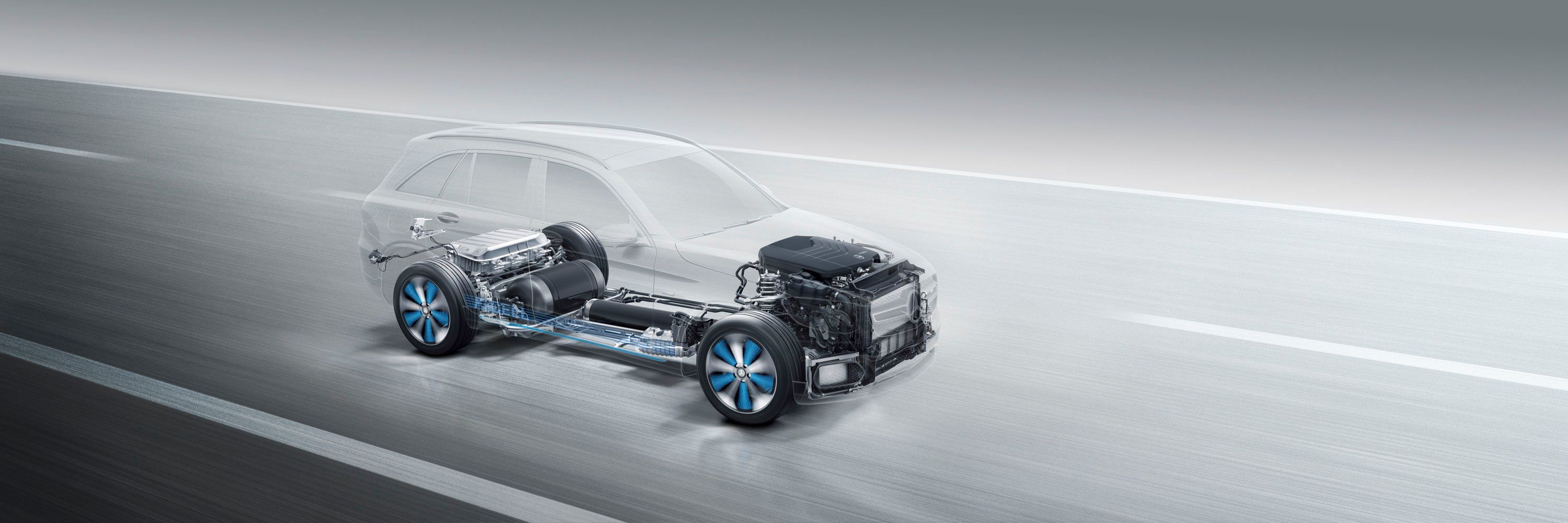
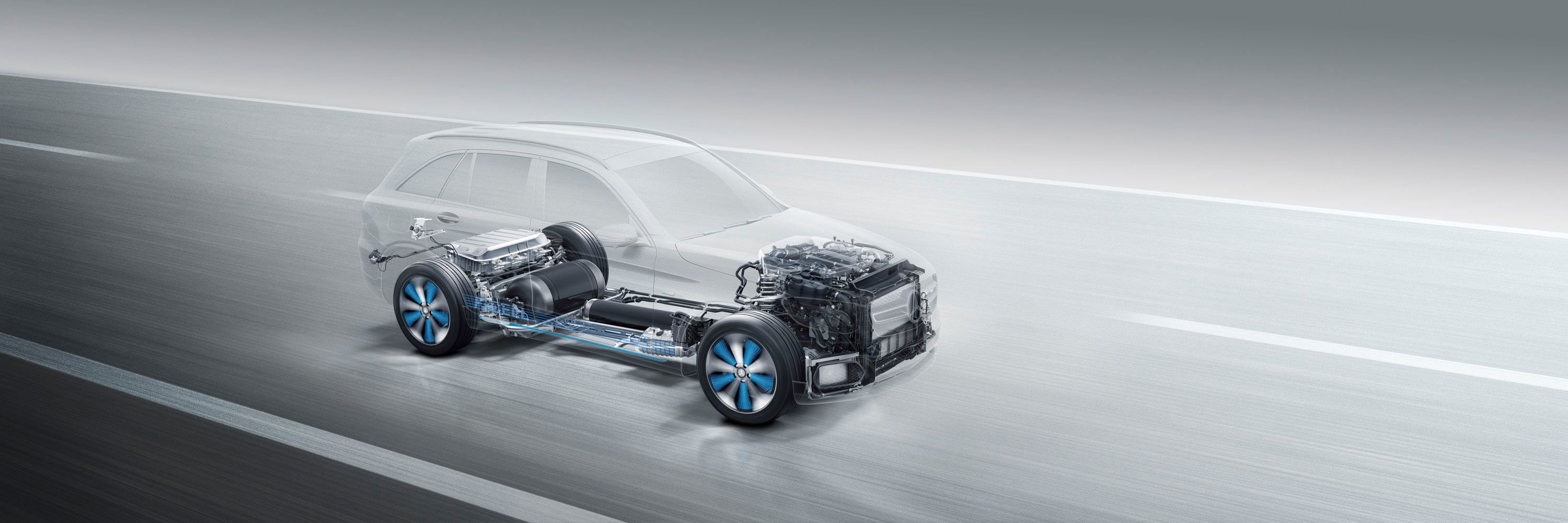
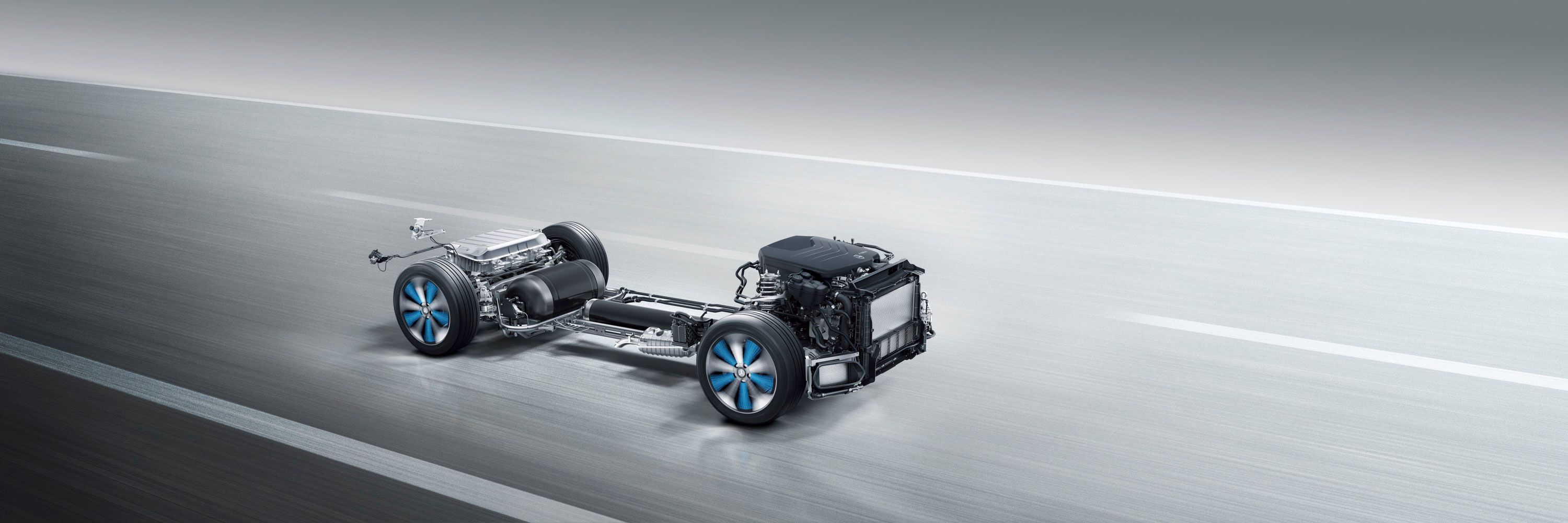
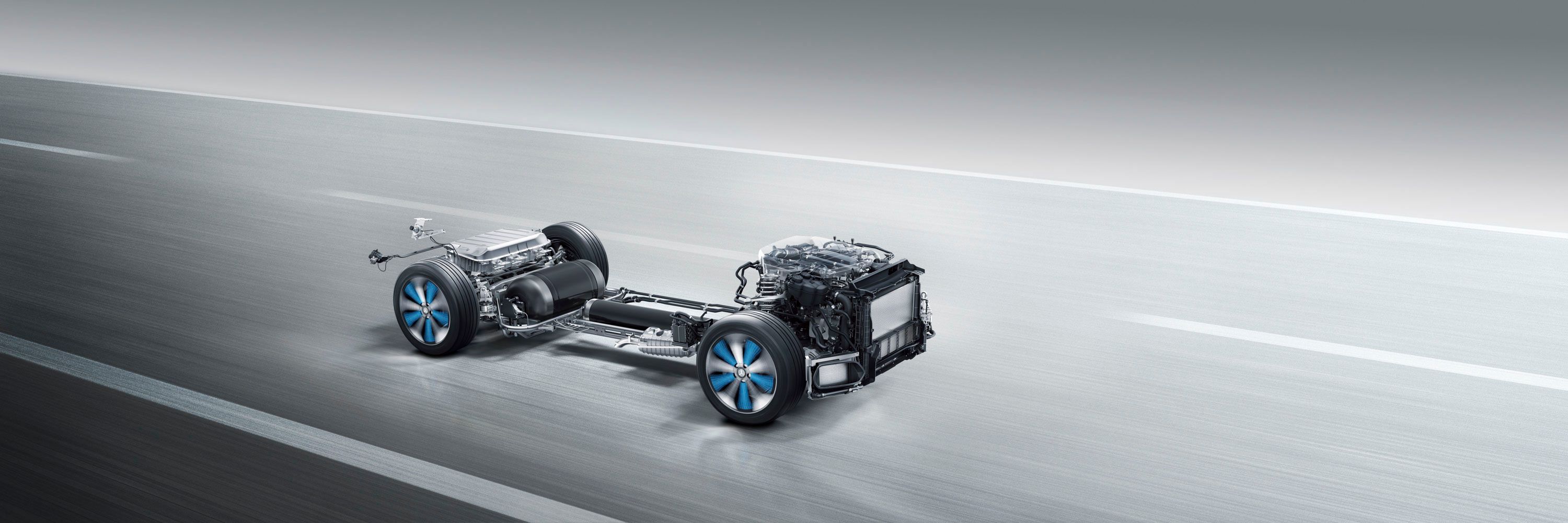
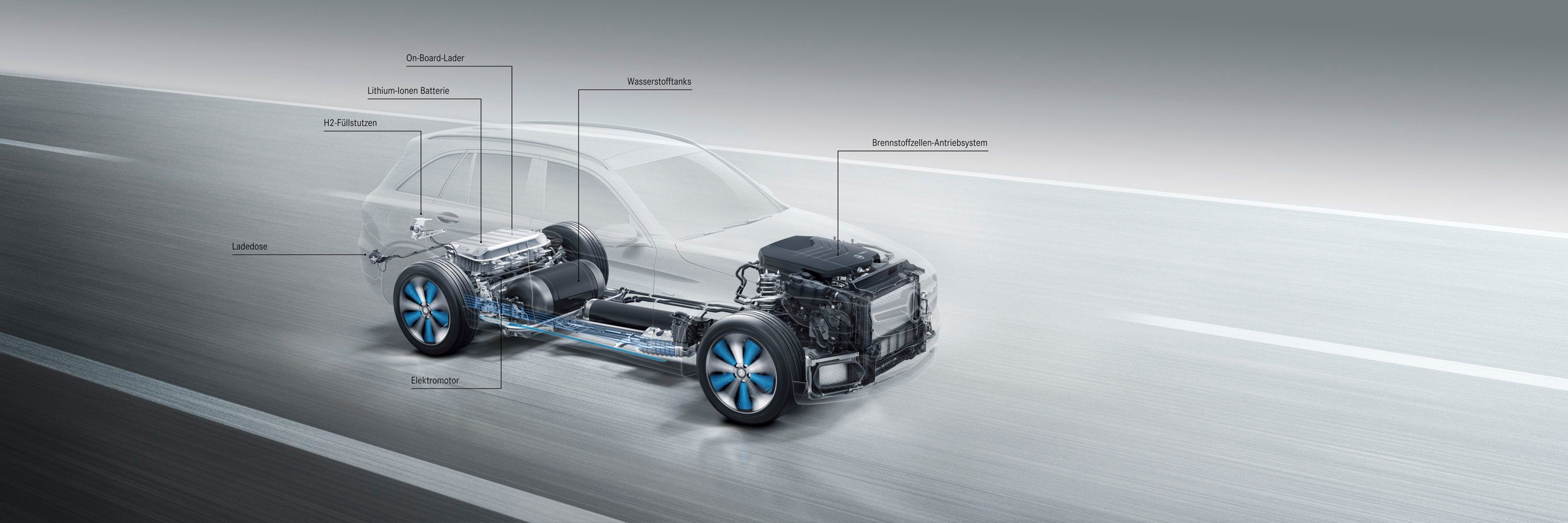
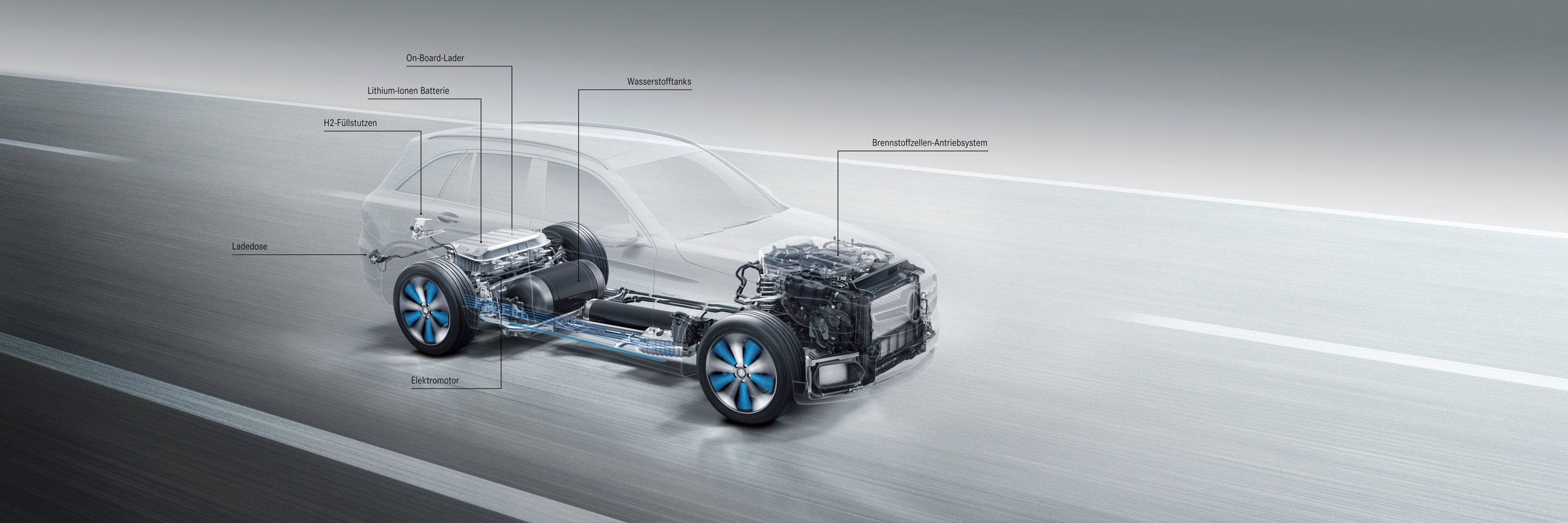
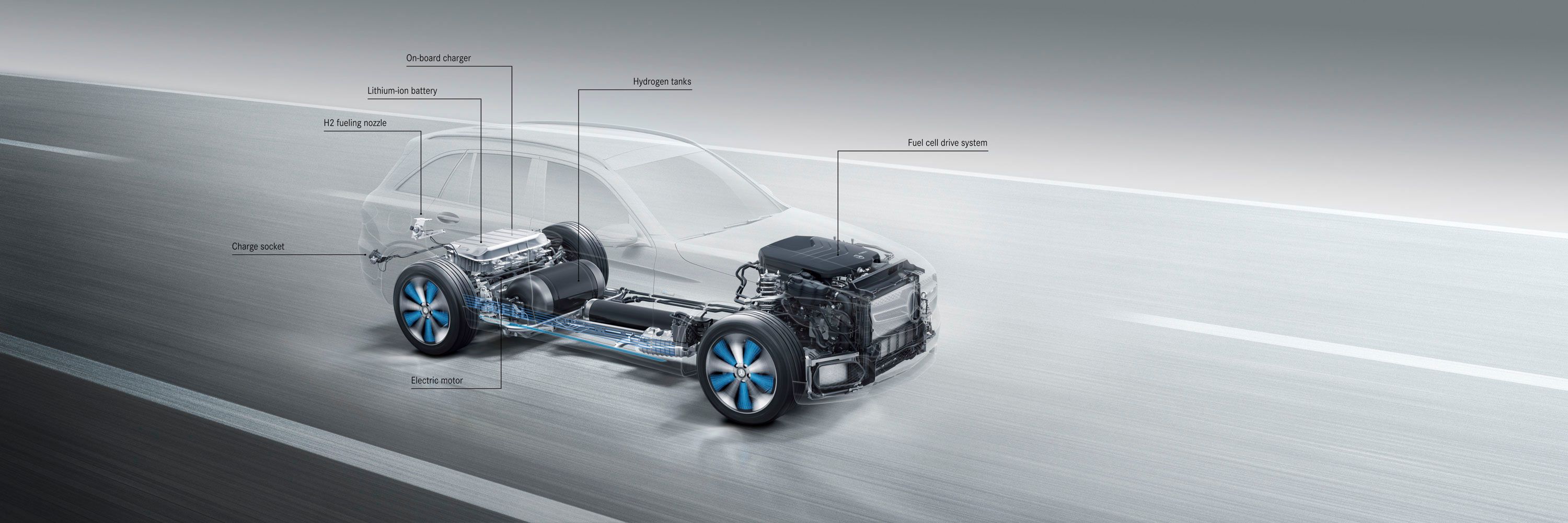
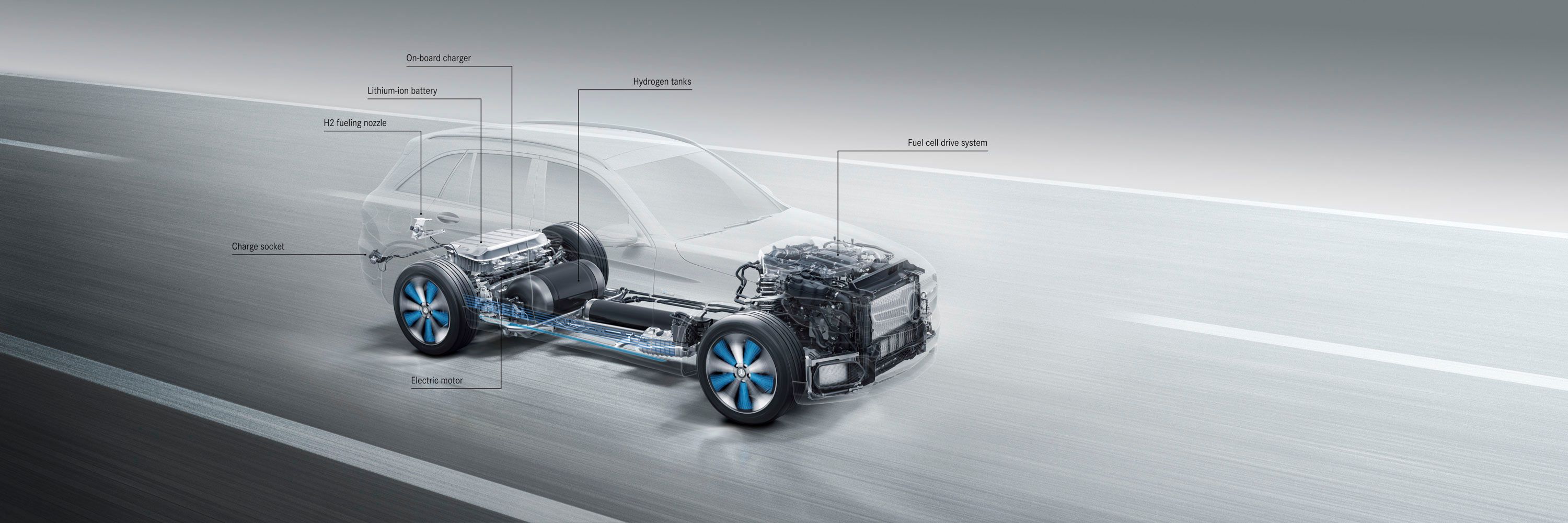
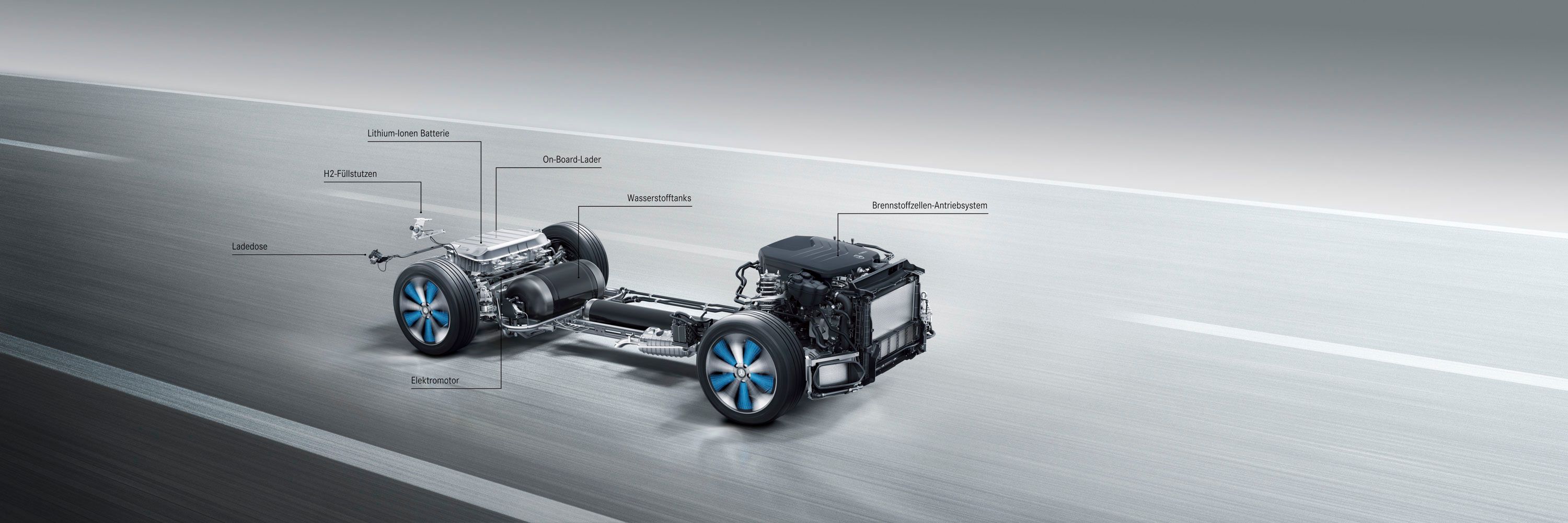
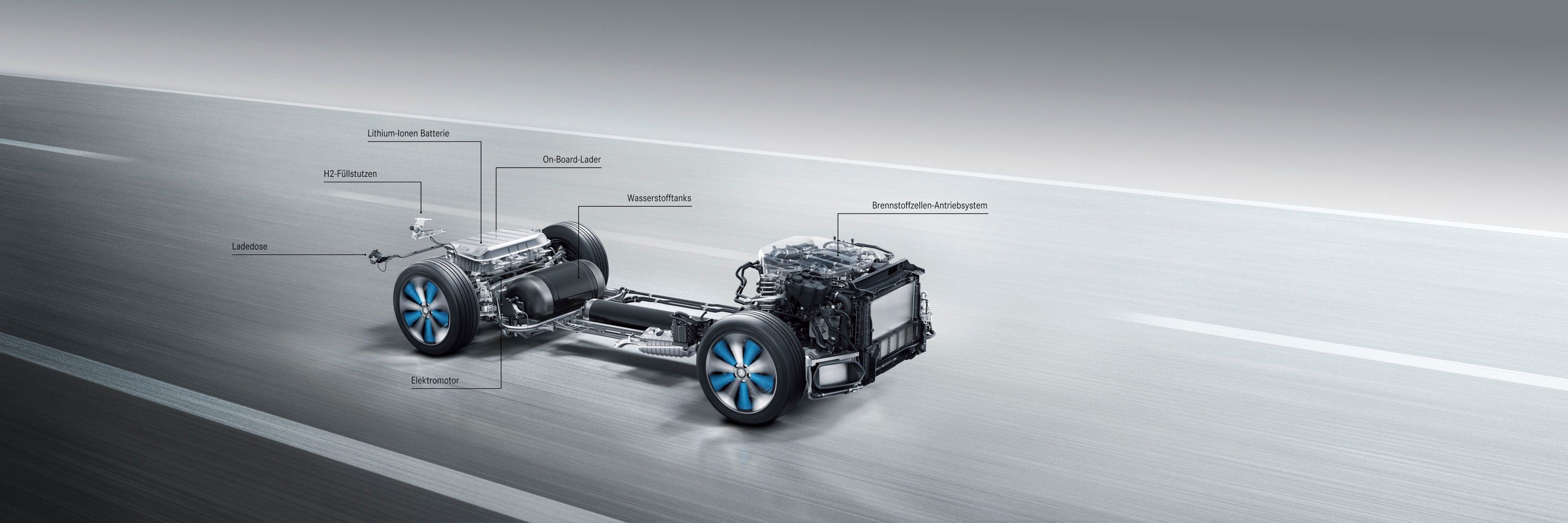
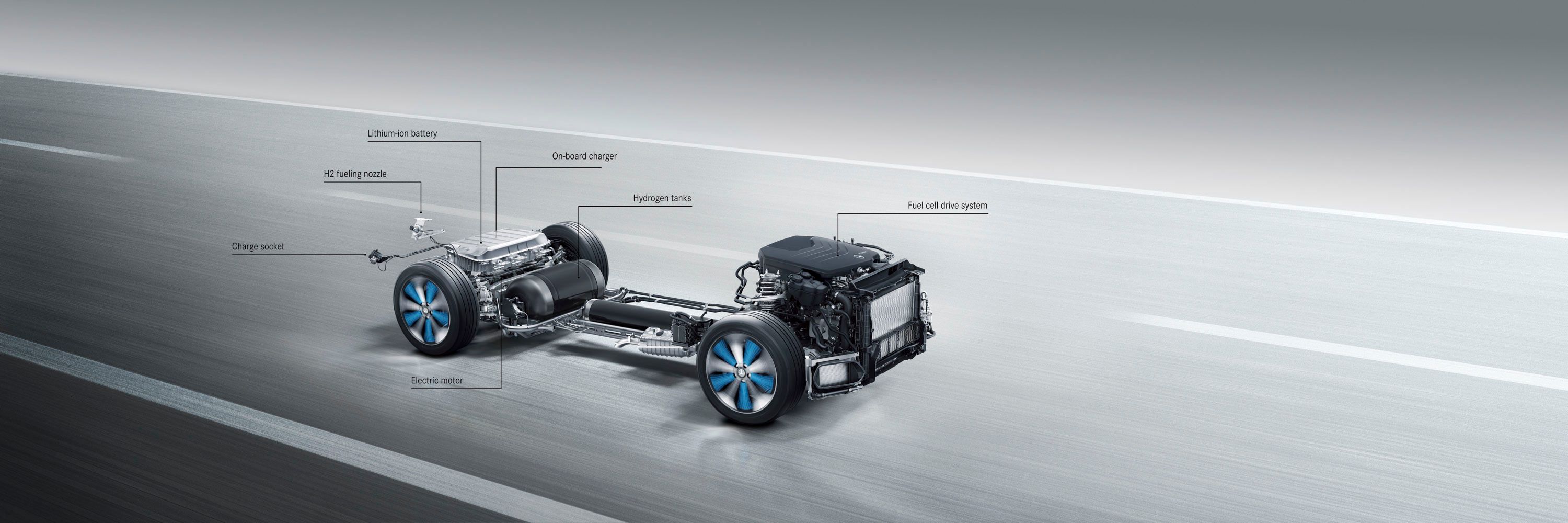
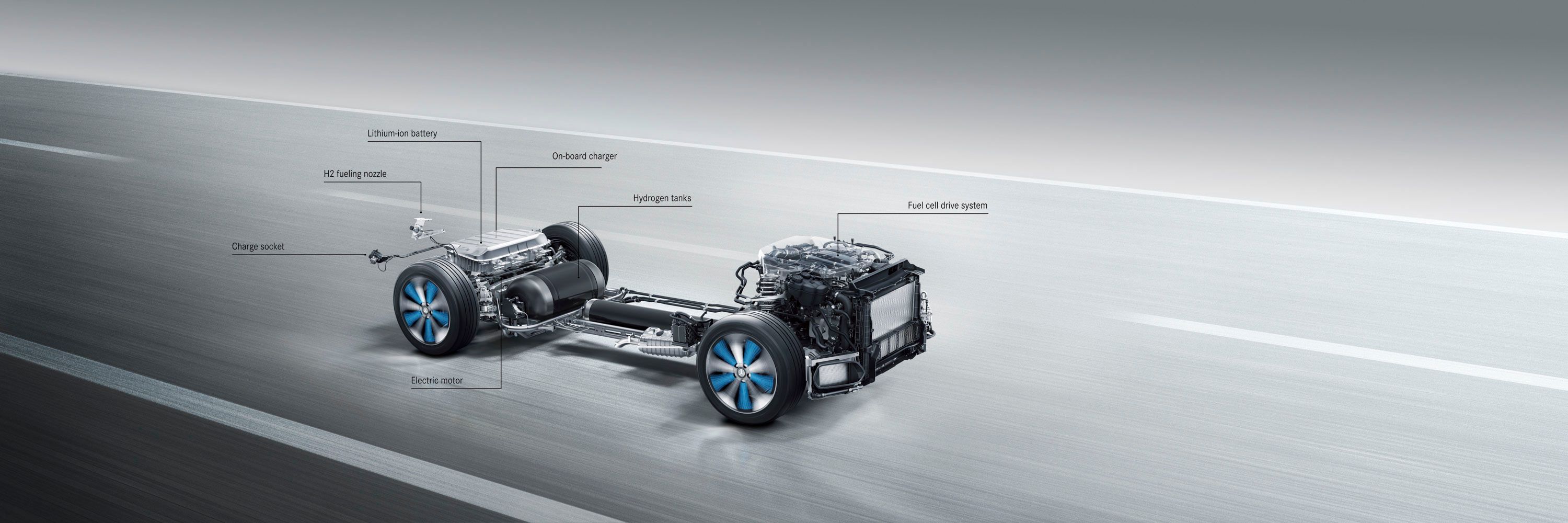
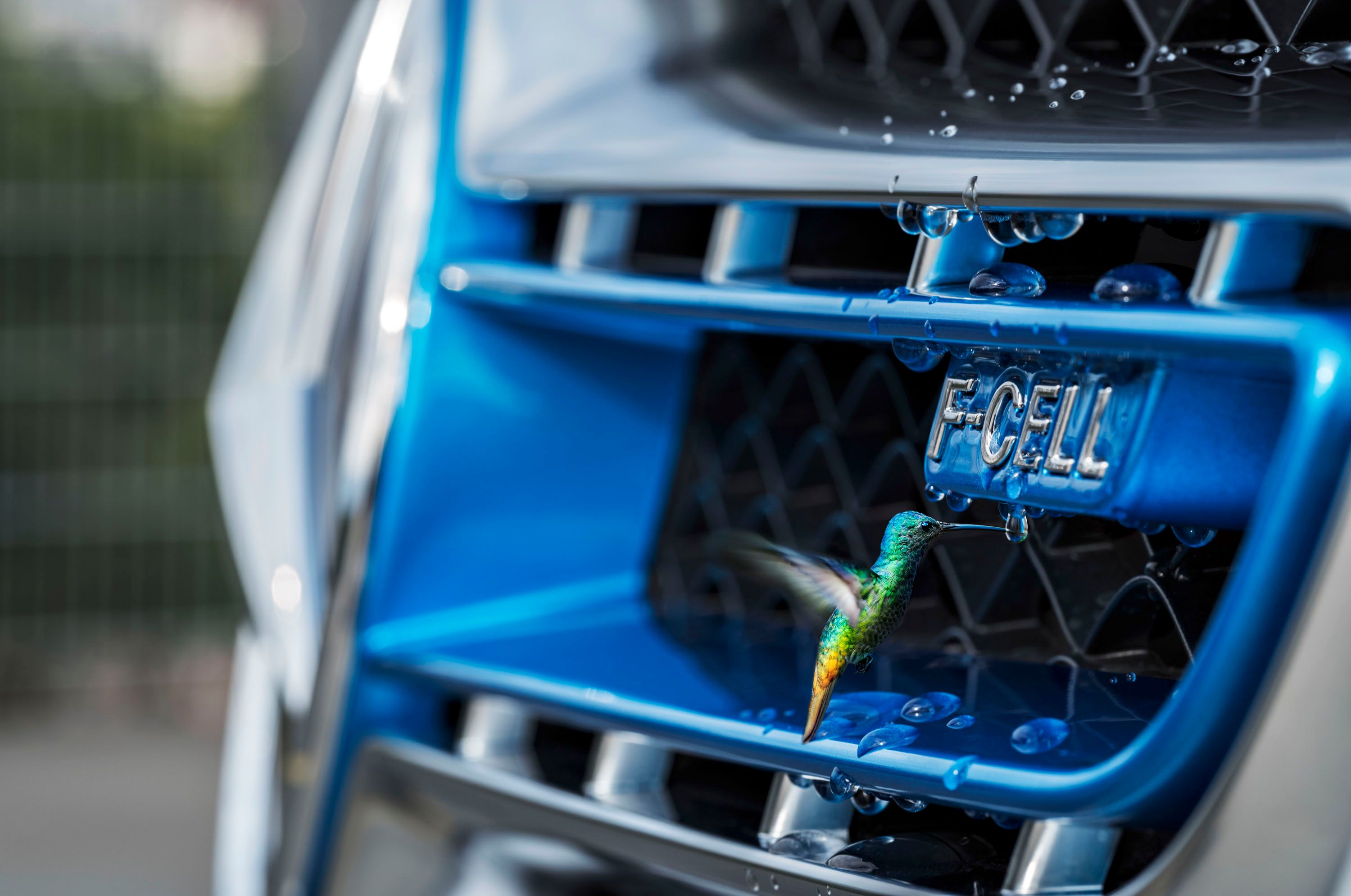
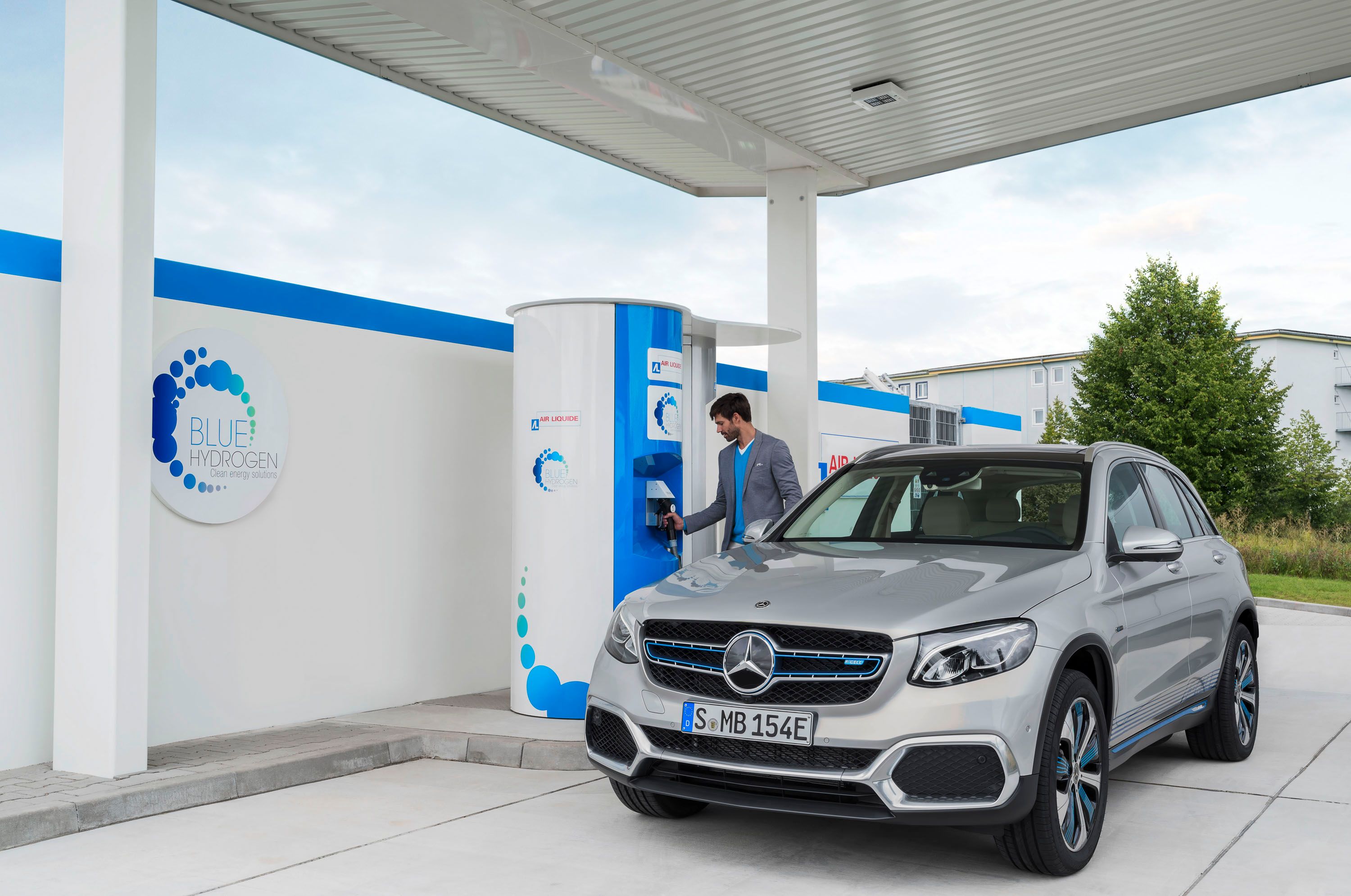
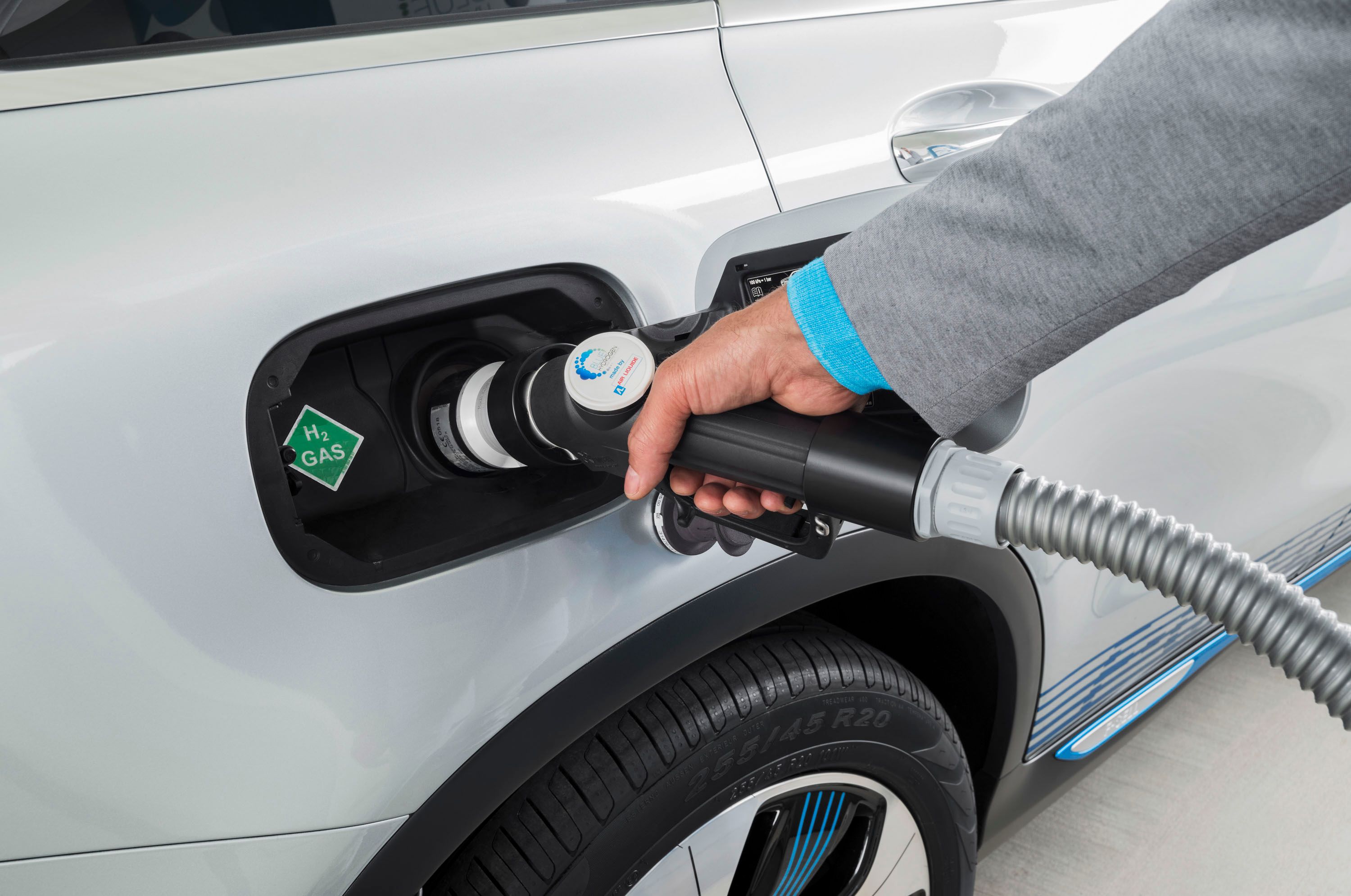
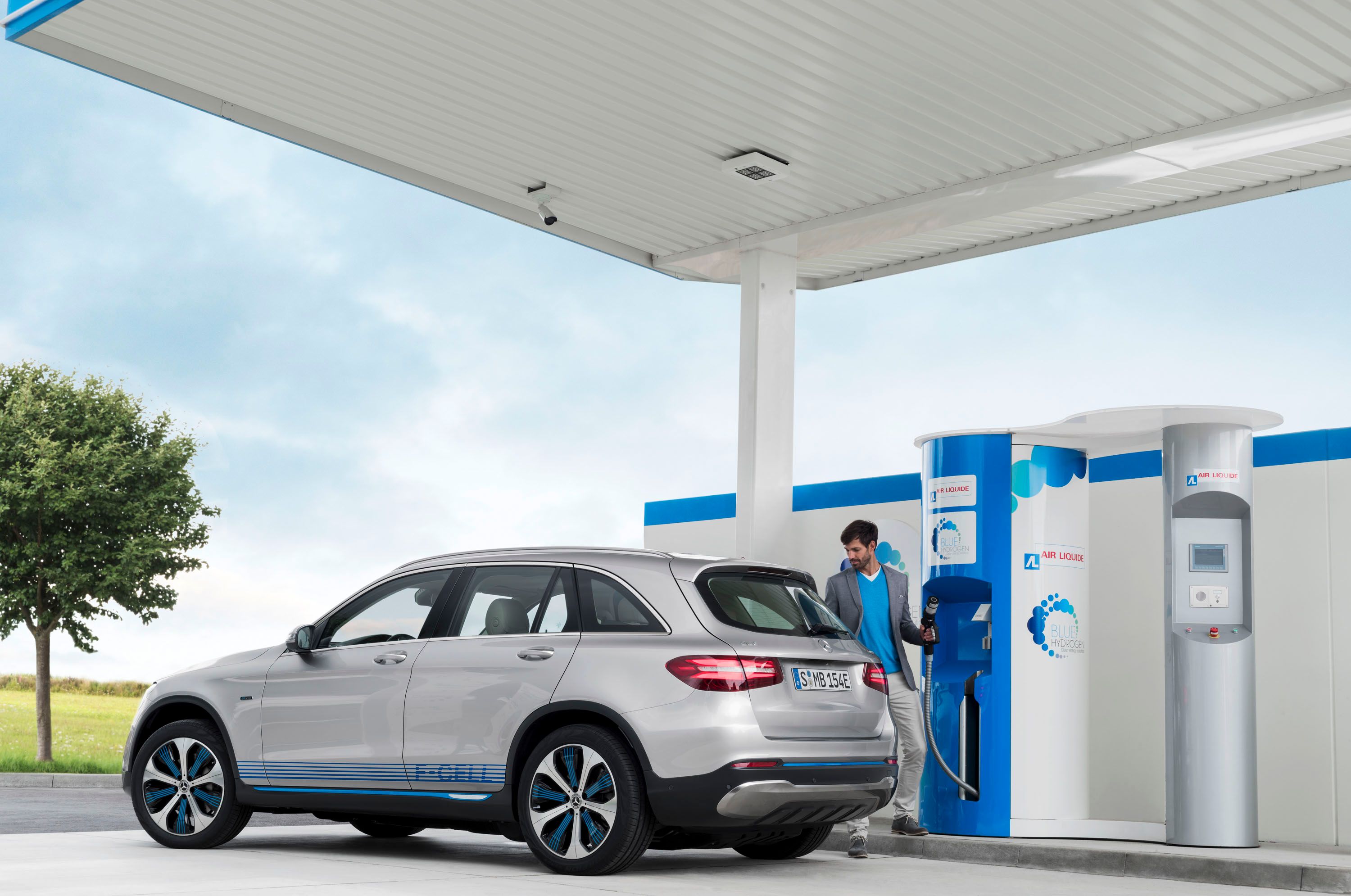
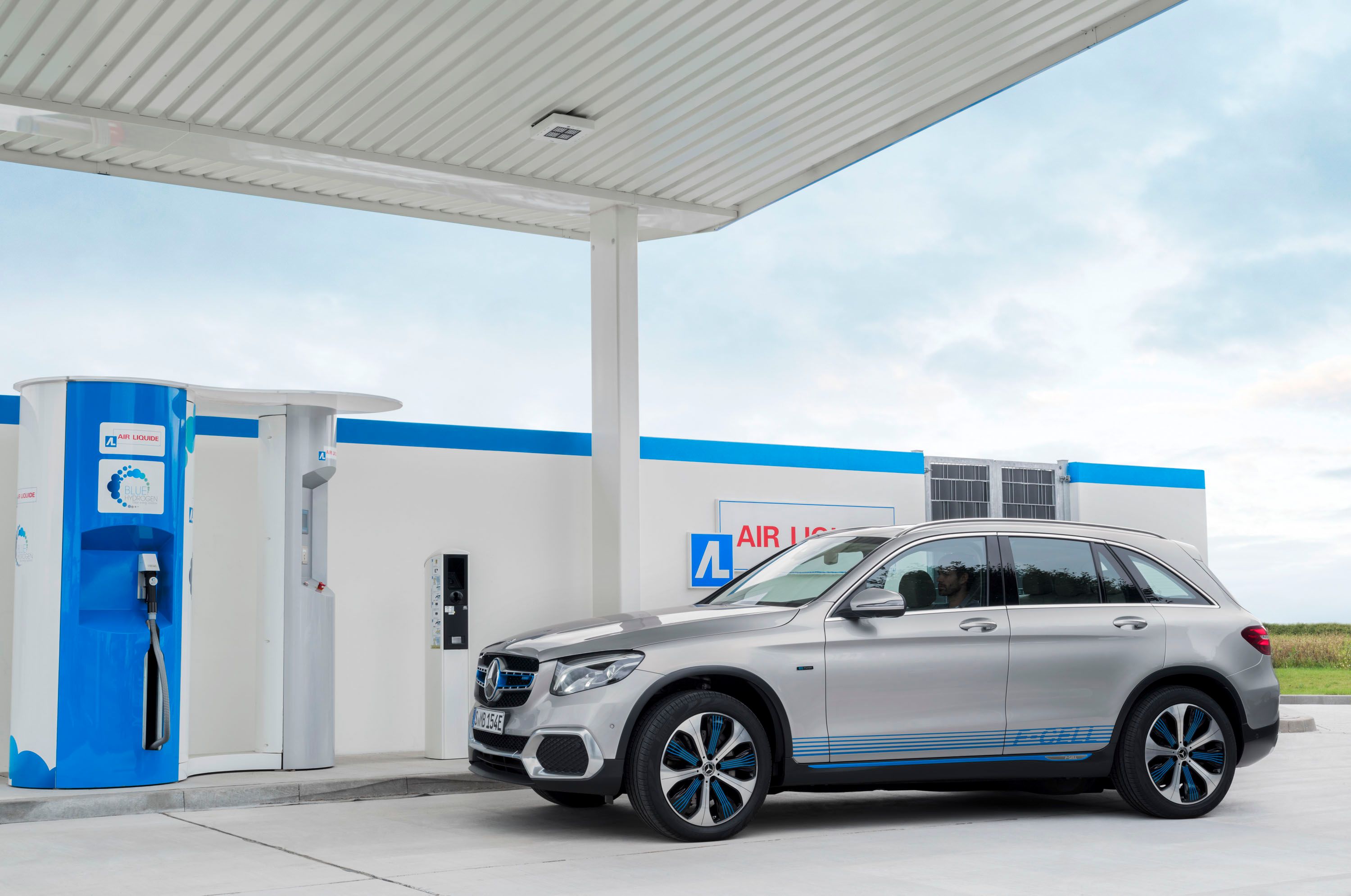
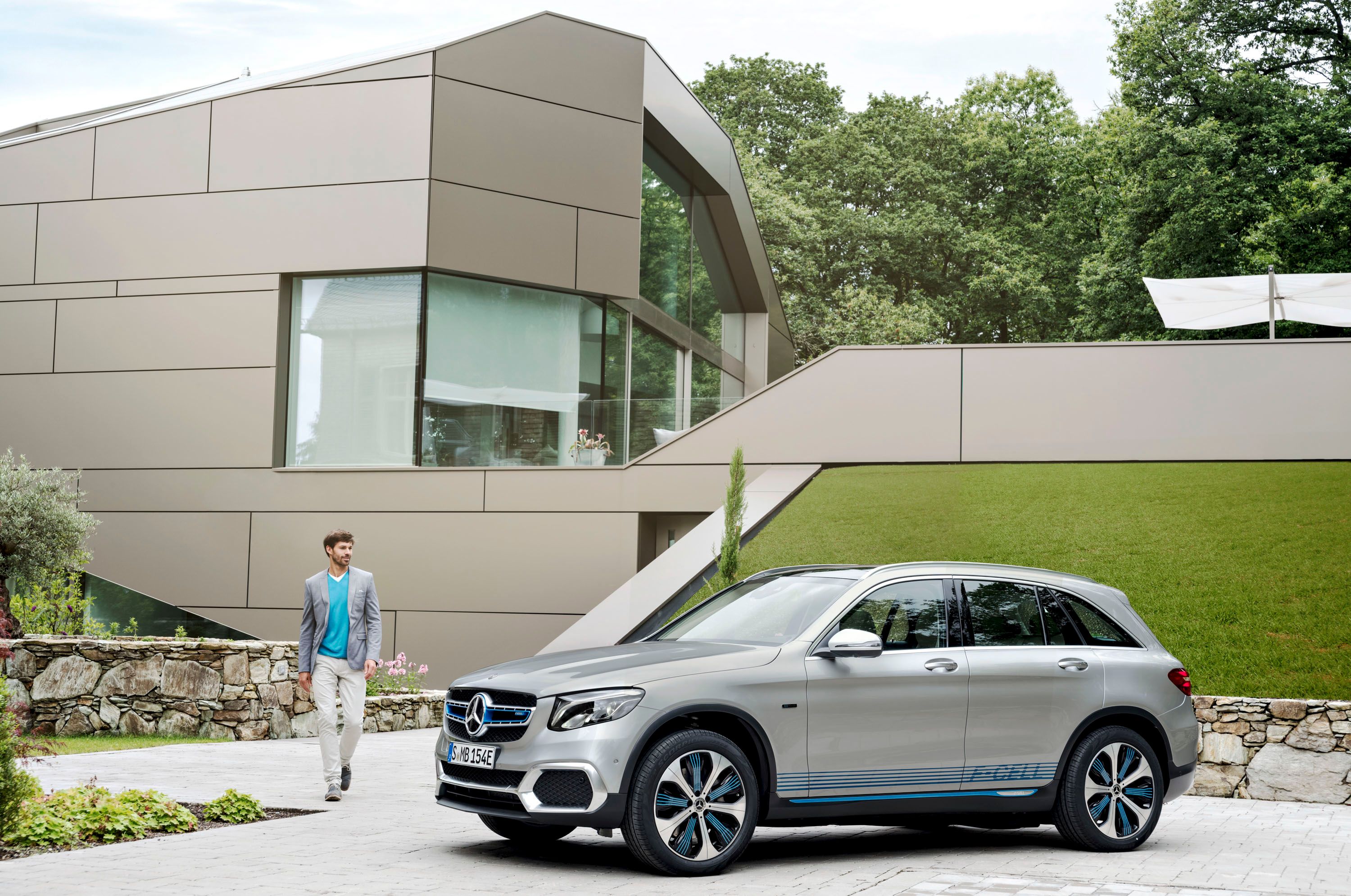
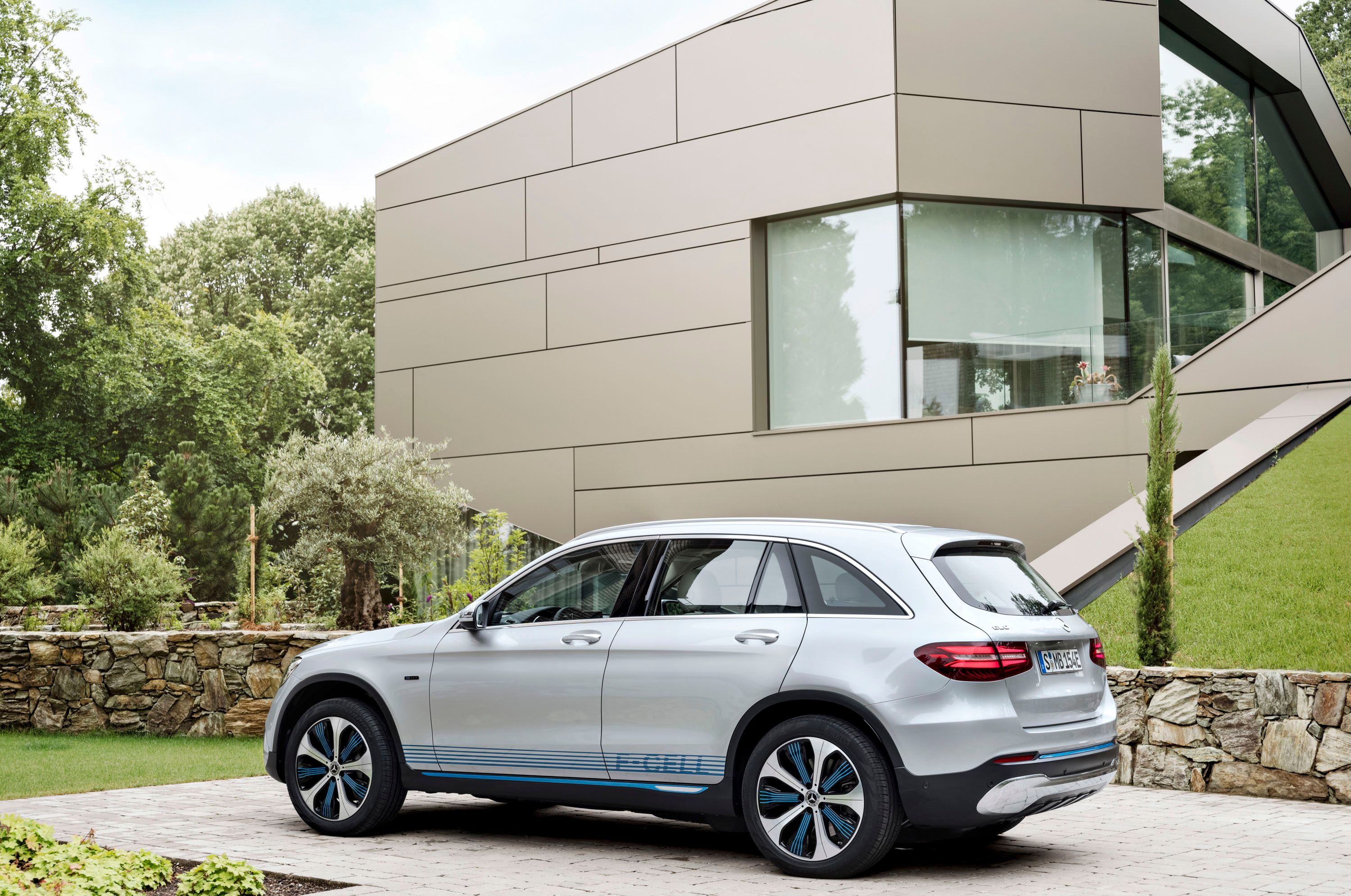
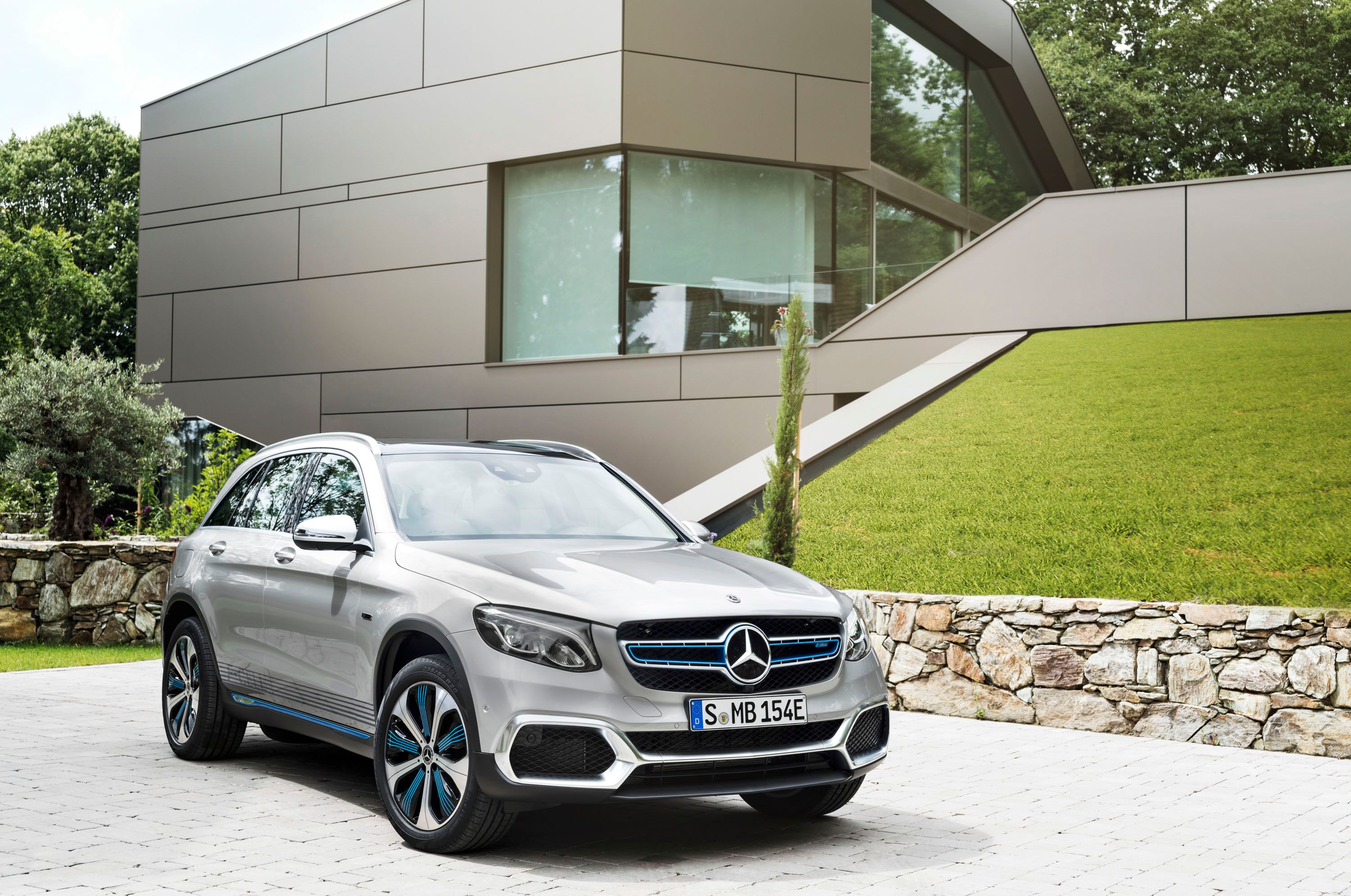
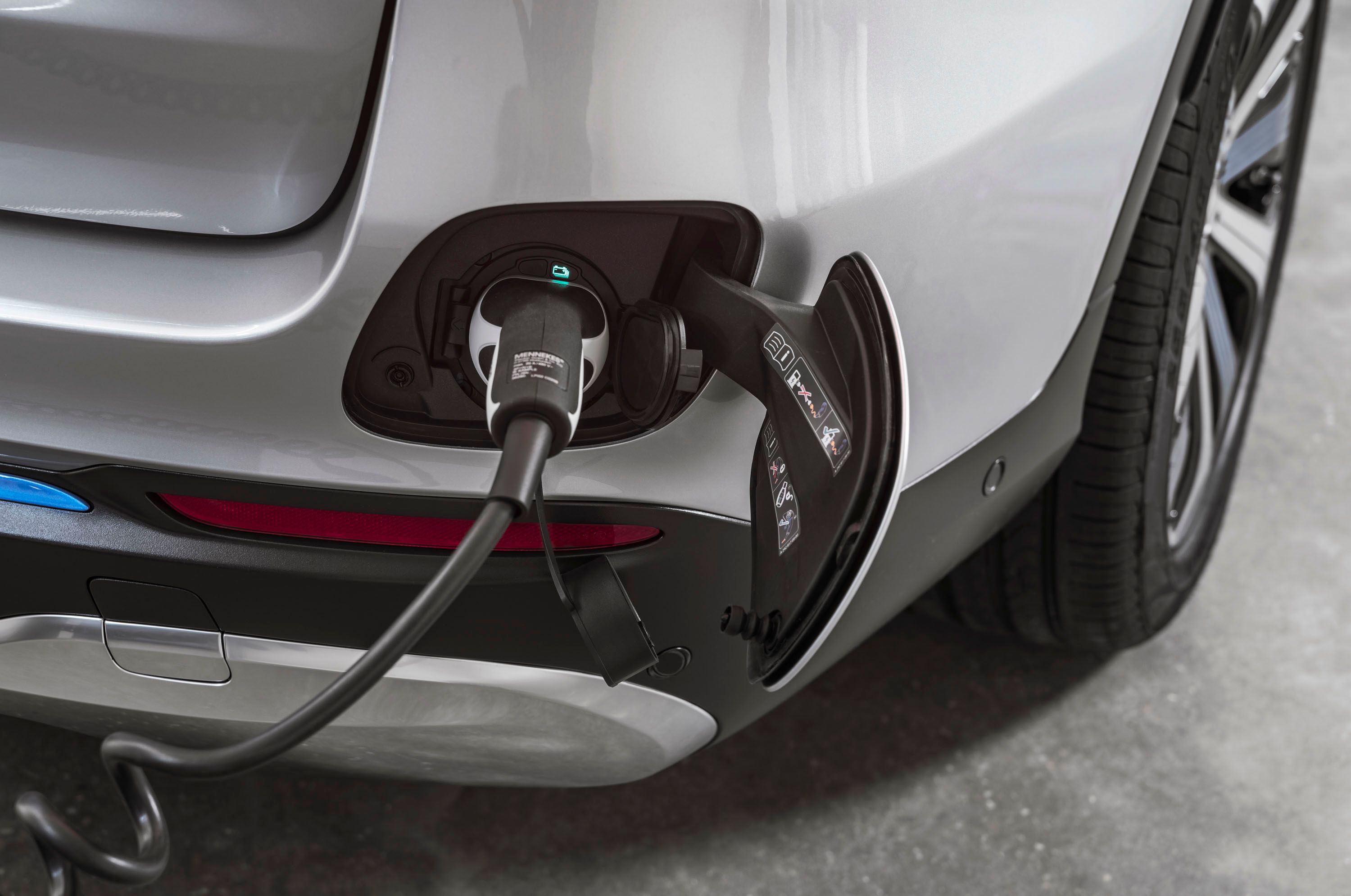
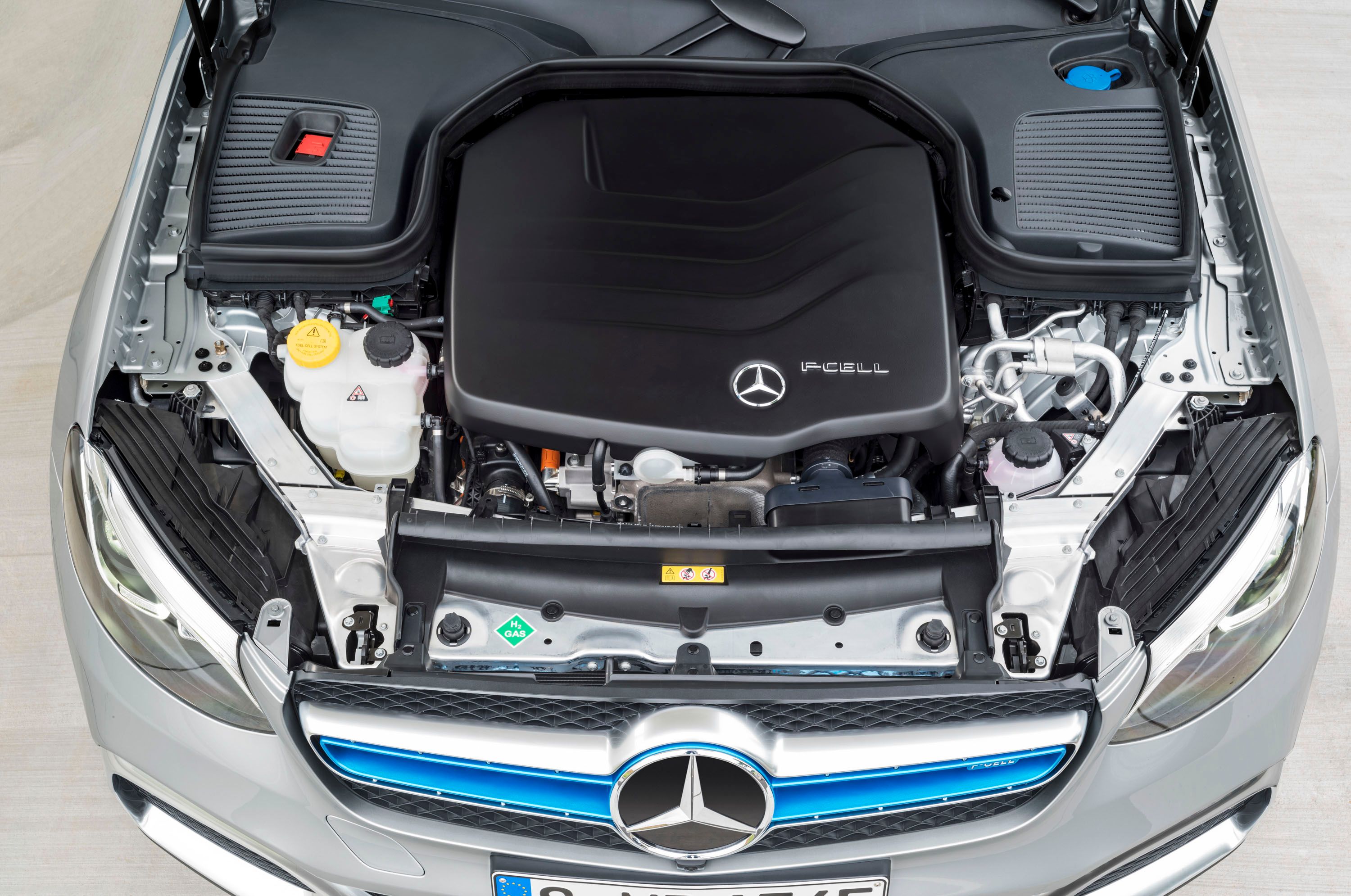
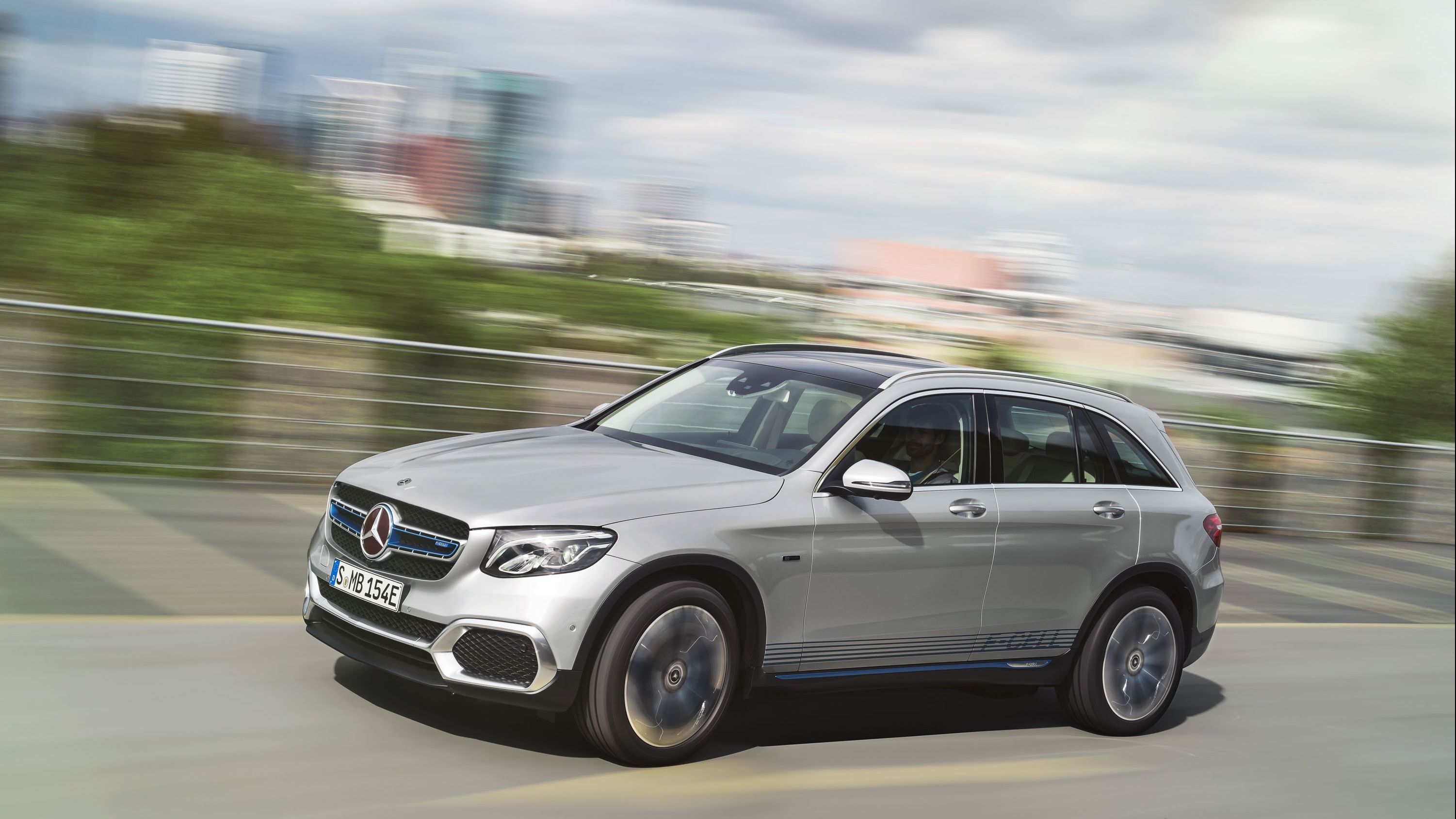
- Make: Array
- Model: 2018 Mercedes-Benz GLC F-Cell
- Horsepower: 200
- Torque: 258
- [do not use] Vehicle Model: Array
Exterior

When I first heard about the GLC F-Cell, I thought to myself, “great, another Mercedes car that’s going to look identical to the model it is based on.” But, I couldn’t have been more wrong and, in fact, Mercedes even surprised us a bit.
Now, the GLC F-Cell still uses the same general body structure of the standard GLC – this much was expected, for sure – but it gets its own unique features too. Up front, you’ll find that the F-Cell features its own unique headlights with a different LED strip up top and a different bulb layout as well. In between the lights, you’ll find a familiar grill, but instead of the dual-louver insert found on the standard model, you get a one-piece unit that’s accented with blue and features an even larger Mercedes emblem. Down below, the front fascia takes on its own look, with corner vents that remind of something AMG would put out. In reality, the fascia itself has a rather large mouth, replacing the smaller air dam and small vents of the standard model. An insert, one that makes up the shape of the corners and the center louver, is in place to provide that unique look.

As far as the side profile goes, there isn’t much that sets the F-Cell apart from the standard GLC. Naturally, you have the same side profile with the two dominating lines below the waist and the chrome window trim. Even the side view mirrors are the same. It does stand out by means of the blue pin striping and F-CELL lettering below the lowest body line, and a thick blue accent at the top of the side skirt. In some images, it looks as if the side skirts are actually a little taller than on the standard model, but I think that’s just our eyes playing tricks on us. Finally, the F-Cell gets its own unique wheels. They are 10-spoke units with the top layer finished in chrome and the bottom layer of spokes finished in the same blue used for the various exterior accents. It’s not a lot, but it adds just enough flare to make it unique.

Around back, the only defining feature of the F-Cell comes into play down below. Otherwise, it gets the same tail light units, rear hatch, and rear overhang. Down below, however, you’ll find that the fascia is a bit different. The insert at the bottom of the fascia is now taller and provides housing for the corner reflectors. A body-colored insert sits in the middle of the lower fascia and mimics the look of the insert that runs across the front fascia, without the vent holes, of course. There are, obviously, no exhaust pipes to speak of, so the cladding has been stamped with a few square protrusions to add a little more character. With all of this in mind, you really have to commend Mercedes for going above and beyond to help the F-Cell stand out from the rest of the lineup. Not bad, but what about the inside? Let’s get to it.
Exterior Dimension
|
Wheelbase (Inches) |
113.11 |
|
Length (Inches) |
183.89 |
|
Width (Inches) |
82.51 |
|
Height (Inches) |
65.07 |
|
Track width front/rear (Inches) |
63.97/63.81 |
Interior

They say that beauty is only skin deep and, in most cases, that’s true. But the GLC looks good inside and out, and since that DNA was used to create the newest F-Cell, it’s no surprise that the cabin is also quite beautiful. There isn’t a whole lot to set it apart from the standard model, but there are a few things. Higher trim levels of the standard GLC get a flat-bottom steering wheel, but the F-Cell gets a standard, three-spoke, round steering wheel. It has a revised button layout compared to the standard model as well. Ahead of the steering wheel sits a digital instrument cluster that features two digital gauges and a central display. This unit measures 12.3 inches while the central COMAND display that hovers in front of the center stack is a 10.25-inch unit, much wider and shorter than that of the standard model. Finally, the center console features a slightly different look, thanks to the removal of the gear selector. This has paved the way for a larger and thinner touch controller for the infotainment system. It’s a little different to look at but is oddly refreshing and clean at the same time. In addition to the thumb controls on the steering wheel and the touch controller, there’s also voice control as well.


As far as interior dimensions go, Mercedes has yet to say anything, but I wouldn’t assume they are necessarily the same as the standard GLC. See, with there being a battery pack in the floor and two electric motors, it’s possible that both cargo room and passenger room has decreased a bit. Hopefully not by much, but it’s a fair tradeoff when you consider the benefits of having the hydrogen-electric hybrid setup. With that in mind, if there isn’t any decreased room, you should get 56.5 cubic-feet of cargo room with the rear seats folded flat or 20.5 with the seats in the upright position. Hopefully, that 2.2 inches of extra rear seat space will make its way into the F-Cell as well. We’ll just have to wait until full dimensions are released to know for sure.
Drivetrain

And this is where things get really interesting. Mercedes has ditched that 2.0-liter four-cylinder for a pair of electric motors, a battery, and a set of hydrogen tanks. First, let’s start with the hydrogen tanks. There are two tanks, both of which are encased in carbon fiber and run the standardized 700-bar pressure system (10,152.6 psi). One tank resides just behind the hydrogen system where the driveshaft and transmission would usually be, and the other, larger tank is stashed away under the rear bench seat. Sitting above the rear axle is a 13.8-kW battery that powers the electric drive components on short trips or supplements the hydrogen power supply system when you really need that extra get-up-and-go.
As a special note, I should point out that this is the first time that a hydrogen vehicle can also be plugged in to charge its onboard battery, hence the charging port in place of a fuel door and the hydrogen port in the rear fascia. The 13.8-kW battery is charged with the onboard 7.2-kW charger, which can take it from nil to 100 percent in about an hour and a half – giving you an all-electric range of 49 km or about 30 miles on a good day. It’s not much, but hey, you’re running on water the rest of the time, so don’t complain. All told, the two electric motors are good for 147 kW or about 200 horsepower and 258 pound-feet of torque. It’s not too bad, but it falls short of the standard model, which comes with 241 horsepower and 273 pound-feet on tap.
On the plus side, the F-Cell represents the next step toward a hydrogen-powered future. Filling the tanks from empty takes about three minutes, so it’s comparable to filling up with that dino juice, while the energy recuperation system will help keep a charge on that battery in certain driving scenarios, so you don’t necessarily have to plug it in all of the time. And, it does so while producing zero emissions, so I would say the tradeoff in power and torque is well worth it. With that in mind, there are also several driving modes to choose from, including ECO, COMFORT, and SPORT, all of which change the driving dynamics of the vehicle and how efficient the drivetrain actually is.
Drivetrain Specifications
|
CO2 emissions: |
0 g/km |
|
H2 range in Hybrid mode (NEDC): |
437* km |
|
Battery-electric range in Battery mode (NEDC) |
49 km |
|
Drive system: |
Electric motor |
|
Battery: |
Lithium-ion |
|
Fuel cell: |
PEM (polymer electrolyte fuel cell) |
|
Rated output: |
147 kW (200 hp) |
|
Max. torque: |
350 Nm (258 LB-FT) |
|
Top speed: |
160 km/h (electronically limited) |
|
H2 tank capacity: |
4.4 kg (usable for SAE J2601, 2014 or new) |
|
Battery capacity (gross/net): |
13.8 kWh /9.3 kWh |
Pre-Debut Update: The Fuel Cell and Safety

Obviously, you already know that the new F-Cell will combine plug-in technology with hydrogen technology, but outside of that, we still haven’t learned much. Based on the images we had previously, it seemed as if there would be one hydrogen tank in the rear, just ahead of the rear wheels. Well, in Mercedes’ most recent release, it claims there will be multiple tanks that are situated between the axles inside the crash-protected area that also keeps you safe. Whether or not these are big round tanks, flat thin tanks or a combination remains to be seen, but we’ll learn that soon enough. The tanks will get their own subframe assembly for added strength and durability in the event of an accident and, to put things over the top, the tanks get their own multi-stage valve systems to help ensure there are no leaks should a fuel line be damaged. There are also new protective circuits to effectively kill power from the battery packs should things get hairy on the road.

For now, that’s all we know. According to Mercedes tests of the pre-production GLC F-Cell has proven it offers up safety similar to that of your typical gasoline- or diesel-powered vehicle, so it should meet at statutory safety requirements set forth by the Europe and the U.S. Now, if we could just get that hydrogen infrastructure in place, with hydrogen being as readily available as gasoline and diesel, and we’ll be good to transition into a hydrogen-powered automotive world. For now, however, stay tuned for updates as we’ll be sure to update this review once the GLC F-Cell makes its debut in Frankfurt.
Prices


Here in the U.S., the GLC is only available as the GLC 300 and GLC300 4MATIC, which are priced at $38,950 and $40,950, respectively. I wouldn’t expect the GLC F-CELL to come that cheap, though. At this time, pricing is a complete mystery, but I’m betting that jumping on Mercedes hydrogen train will probably set you back to the tune of at least $55,000 if not more. That is just a guess, though, so take that pricing estimate with a grain of salt.
Competition
Hyundai Tucson Fuel Cell
The hydrogen market is just starting to kick off, so there really isn’t a lot of competition out there yet. Sure, you could argue that the Toyota Mirai is hydrogen powered, but it is far from being an SUV, so it gets no play here. The only real competitor against the F-CELL right now is the Hyundai Tucson Fuel Cell. On the inside and outside, the Tucson Fuel Cell is pretty much the same as a standard Tucson, but under the metal, there is a hydrogen-powered system and a 24-kW battery that can propel the crossover up to 265 miles on a single fill-up. Horsepower comes in at 134 ponies, and torque runs at 221 pound-feet. At the time of this writing, the Tucson Fuel Cell isn’t exactly for sale. However, or $2,999 down and $499 a month you can get yourself one on a 36-month lease, and only if you live in an area with hydrogen access. Perhaps Mercedes will take the same “lease only” stance when the GLC F-CELL hits showrooms.
Read our full review on the Hyundai Tucson Fuel Cel.
Audi H-Tron
For now, the Audi H-Tron is nothing more than a concept that debuted at the Detroit Auto Show this year. It featured a near-production ready exterior and a futuristic interior, but hey it’s a concept right? Before you kick me in the groin for listing a concept vehicle against a future production vehicle, think about this. Hyundai already has a hydrogen-powered SUV on the market. Mercedes will have one by 2017, so Audi now has more motivation than ever to shift the H-Tron concept into production.
Of course, the interior will be significantly toned down, and the exterior will take some nips and tucks, but it will likely happen now that one of its main German competitors is stepping into the Hydrogen market. The Concept is said to offer close to 400 miles of range and upward of 405 pound-feet of torque. It’s hard to say where pricing will sit, but I would expect it to cost more than the Tucson Fuel Cell and more in-line with the estimated $55,000 price of the GLC F-CELL.
Read our full review on the Audi H-Tron.
Conclusion

I’m not surprised that auto manufacturers are starting to push hydrogen technology in cars, but it does seem a little odd to see Mercedes just hit us out of the blue with a production hydrogen vehicle. Basing it on the GLC probably a smart idea considering Mercedes will have to recoup costs, and a cheaper model will help keep the hydrogen-powered variant within an affordable range. I just hope that all of these hydrogen-power vehicles that are starting to hit the market aren’t all ticking hydrogen bombs that are just waiting to go off. I doubt that is the case, but the thought does cross my mind every now and then. Otherwise, I think hydrogen fuel is a good idea, as we can obviously make it from water. I just wish we didn’t have to lose the soul and roar of an internal combustion engine in the process.
In the end, this is the future, and Mercedes has taken another big step to bringing hydrogen-powered vehicles to the masses. Give it another decade or so, and it’s quite likely that we’ll see hydrogen stations popping up on a regular basis. Furthermore, there’s the potential that, as technology improves, hydrogen-oxygen separators could be reduced in size enough that separating the two could potentially be done onboard, preventing the need for filling stations at all. Just think, one day you could walk out to go to work, grab the hose, top of your tank and let the car do the rest – now that’s the way of the future.
What do you guys think? Will hydrogen ever be as viable as gasoline and diesel, or will they eventually fade away to make room for battery-electric cars? Feed us your thoughts in the comments section below.
References
Read our full review of the 2016 Mercedes GLC-Class

